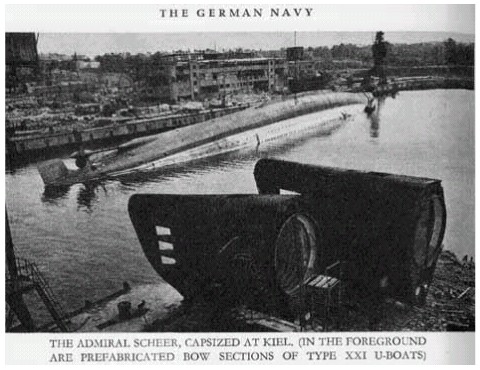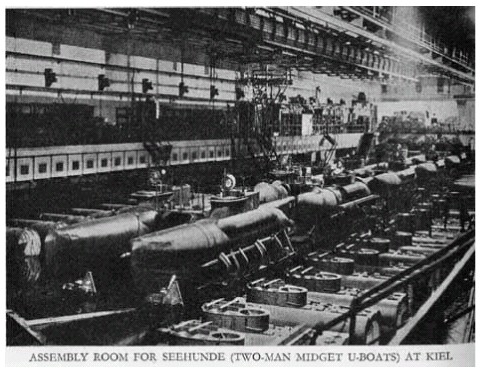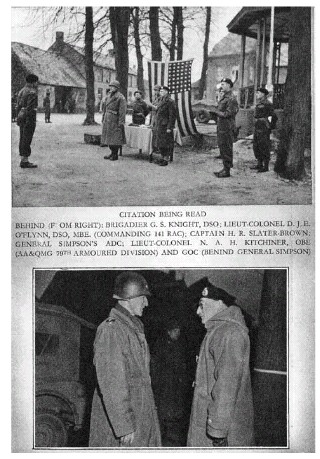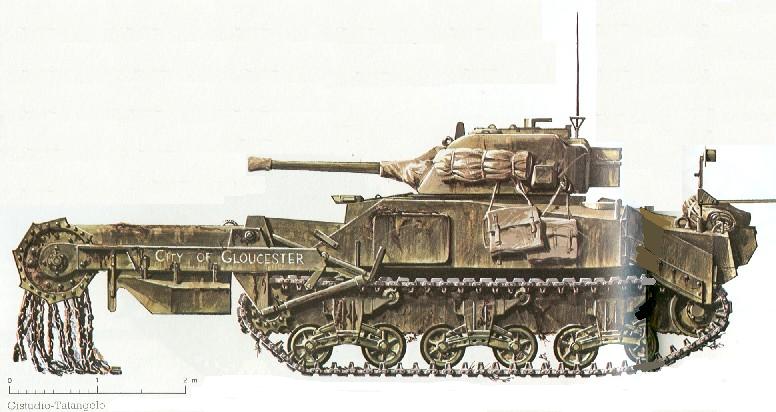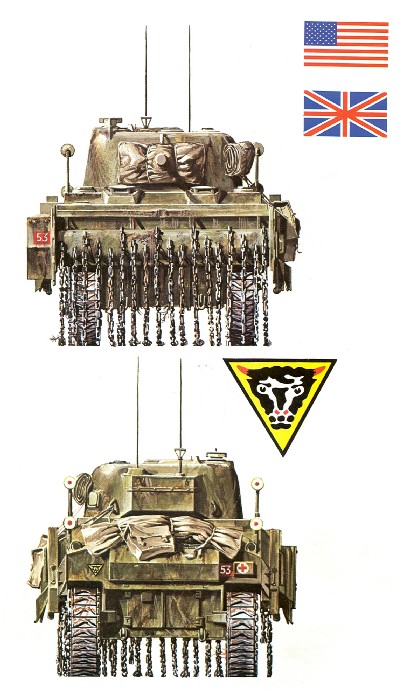"Wars cannot be fought with dream stuff"
--General Percy Hobart
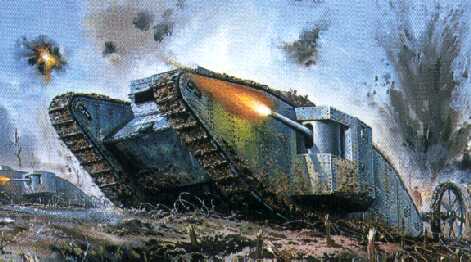
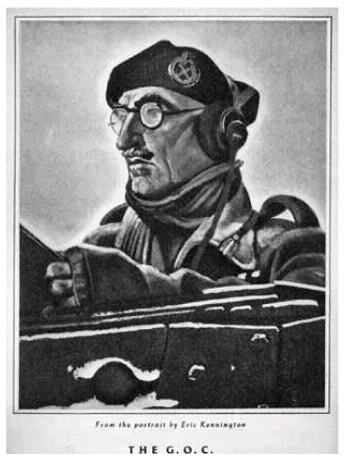
Wrong Tank Ethos? Or Command Post "Horse Cavalry" on Wheels?
"Wars cannot be fought with dream stuff"
--General Percy Hobart


Sapper Tanks Inland: Infantry Support Tank History
 www.youtube.com/watch?v=zAT4_r6zvto
www.youtube.com/watch?v=zAT4_r6zvto
Churchill AVRE with Petard Demolition Gun Medium Tank
At the dawn of the 20th century, Armies around the world began to adapt machines to the conduct of war which had previously been human and animal-muscle-powered though with chemical firearms--essentially a one-way engine to propel projectiles. Later on, reciprocating engines burning fossil fuels were found able to propel armored boxes on tracks that could rumble over mud, trenches, wire and overcome enemy firearms, this invention was called the "tank".
The tank, the brainchild of Royal Engineer Lieutenant-Colonel Edwin Swinton, had first appeared on the battlefields of the First World War as a combat engineer's tool for breaching the German defensive fortifications on the stalemated Western Front. It was felt that if Soldiers, armored only with cloth fatigues, could not do the job, perhaps a tracked, steel-armored "engine of war" could. After all, specialized assault engineering equipment had been used in siege warfare to breach hostile fortifications since antiquity by Alexander the Great and Julius Caesar (indeed, back to Ashurnasirpal II and the Assyrians). British General Francis Tuker was in North Africa, the Far East and Italy in WW2 and suffered from a lack of siege engine capability resulting in bloody stalemates which he wrote about in his masterpiece:
These early tanks were, in fact, more akin to the recently retired M728 Combat Engineer Vehicle (CEV) than the medium and later heavy, defensive tanks that have become dominant since the beginning of World War II. These first tanks were "sapper vehicles", frequently crewed and commanded by combat engineer personnel. They were designed to breach barbed wire obstacles, employ fascines (an ancient engineer implement for filling in gaps) and "bust" hostile bunkers by direct-fire. They were not intended to "joust at tournament" with other tanks, rather they were "battlefield bullies" whose mission was to destroy anything that held up an infantry advance.
 www.youtube.com/watch?v=kLjGRmFJSIU
www.youtube.com/watch?v=kLjGRmFJSIU
Note that these sapper tanks did NOT have a turret (see artwork above) and a gun to duel other tanks as some today try to miss-define what a "tank" is. However, there is an even greater miscalculation which has placed us at the dawn of the 21st century in an even more precarious position, where the viability of ground maneuver and the survival of the United States is now in question: the idea that the tank is an implement of a non-battlefield functional "Armor" branch and thus has lost its relevancy in the competing demands of bureaucracy and dire battlefield tasks. The tank is actually a COMBAT ENGINEERING VEHICLE when its used to breakthrough for infantry. Tanks that exploit the breakthrough and lead the way for the infantry in maneuver are CAVALRY VEHICLES. However, as described in detail in my previous article, "Heavy Tanks, Helicopter Fighter-Bombers" the U.S. Army made a fatal mistake in 1940 by failing to fire Chief of Cavalry General Herr who wanted to stick to animal horses and instead created a work-around non-battlefield functional "Armor" branch that is neither Combat Engineers nor Cavalry. The cost in WWII would be thousands of U.S. maimed and dead. The ultimate cost may be the survival of the United States.
VIDEO & WEB PAGES: British Infantry Support Tank Development
PART 1: British tanks breakthrough in combined-arms warfare and win WW1, then they go to sleep in the '20s/'30s and the Germans take their reformer's ideas, infantry support tanks only have to go 4 mph plus lack of funds equals atrophy
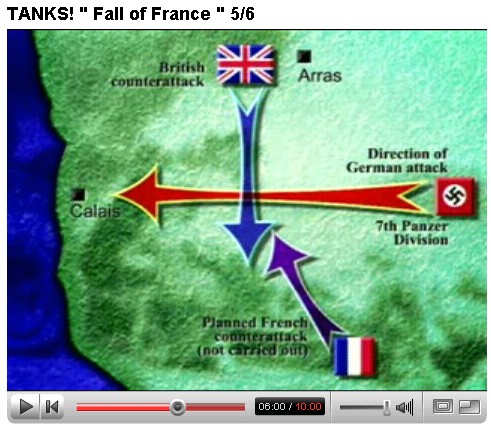
Mathilda 1's finest hour saves BEF at Arras in 1940 with its good armor causes Germans to pause offensive long enough for BEF to escape at Dunkirk to fight another day
 www.youtube.com/watch?v=_ej4d4dES8A
www.youtube.com/watch?v=_ej4d4dES8A
PART 2: much bigger 12 mph Mathilda 2 can't be penetrated by Italian weaponry leading to victories in North Africa, but it doesn't have a HE shell to destroy enemy positions to help infantry, just destroy other tanks, German 88mms could knock them out, the small Valentine tank was very reliable but still too slow to battle other tanks; act as cavalry, yes--but not heavy armored to do infantry fire support, 1/3 of all British tanks made in WW2 were Valentines, Churchill tank with very long chassis was designed for trench crossing of WW1, not properly tested was mechanically unreliable at first
 www.youtube.com/watch?v=6o_pPa7dxMQ
www.youtube.com/watch?v=6o_pPa7dxMQ
PART 3: forgot to have water drainage holes, problems fixed by '42, not prone to catch fire like Sherman, lots of escape hatches, roomy to live in, Dieppe raid beach small pebbles even Churchills couldn't traverse, Experimental Churchill unit does well at Alamein and later in Tunisia because it can go up very steep slopes, able to withstand the German 88mms!,
 www.youtube.com/watch?v=GoMYZesBZLA
www.youtube.com/watch?v=GoMYZesBZLA
PART 4: panzerfaust type AT weapons force tank-infantry cooperation, 4:20 EUREKA!! in open country the tanks lead, in closed country, the infantry must lead! Dieppe raid forced development of Hobart's "Funnies"; AVRE shot 290mm bunker-busting "dust bin" shell, seawall defeating bridge/ramp layer, fascine bundles to fill-in ditches, flails to detonate minefields, trailer fuel tank flame-thrower tank finished off bunkers cracked open by dustbin shells, Germans would surrender just on sight of a Crocodile flame-thrower tank, only tank with adequate armor to withstand Panther/Tiger hits on front, German tanks smooth and quiet compared to our running gear, Allied tank guns inadequate, Super Churchill "Black Princes" too late for WW2 but ready for Korean war where they went up steep hills well
 www.youtube.com/watch?v=5_L9a1qMQh4
www.youtube.com/watch?v=5_L9a1qMQh4
Sapper Tanks From the Sea: British Army Pioneers Amphibious Warfare--not the USMC
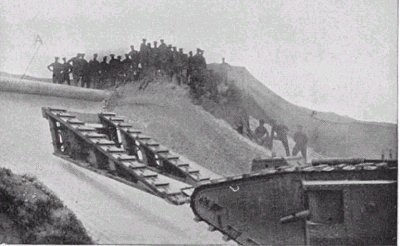

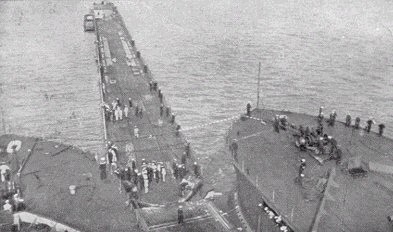
"Hitler knows that he will have to break us in this island or lose the war. If we can stand up to him, all Europe may be free and life of the world may move forward into broad, sunlit uplands. But if we fall, then the whole world, including the United States, including all that we have known and cared for, will sink into the abyss of a new Dark Age made more sinister, and perhaps more protracted, by the lights of perverted science. Let us therefore brace ourselves to our duties, and so bear ourselves that, if the British Empire and its Commonwealth lasts for a thousand years, men will still say, "This was their finest hour!""
--Winston Churchill on Warding off German Amphibious Attack--which they called off, so much for "amphibious inevitability" the USMC BS artists pontificate for themselves
Hitler wasn't ready to invade England with the necessary amphibious and airborne MEANS because he was successfully conned by British appeasement and friendship with RAF Captain Winterbotham into thinking they would stay neutral and let him head EAST to destroy Communist Russia.
www.combatreform.org/hitlerwantedtogoeastbutwewouldntlethim.htm
So much for "ad hocery" the incompetent fucktards in the USMC expound on endlessly. FIDO cannot save you if the situation is stacked against you--one must GET IT (overmatch) and then, "Drive On". It never ceases to amaze us what incompetent liars U.S. marines are as well as their camp followers.
When I was in the U.S. moron corps, as I progressed in knowledge of actual, factual military history and practice, the USMC bullshit fed to me became more and more untenable. I had thought I had gotten the most of it until I read British tank expert, David Fletcher's Vanguard of Victory: The 79th Armoured Division which details the actual history of modern amphibious warfare which dates back to World War 1---with the British Army NOT THE UNITED STATES MARINE CORPS. Talk is cheap and the USMC was only talking in 1915 while the British Army actually did amphibious landings at Gallipoli. The amphibious operation was indeed a failure, but it was the British not the USMC who tried it first in the Industrial Age against machine guns and artillery. That the British Army used multiple amphibious movements to thwart our land-locked Continental Army during our war for Independence and that Washington crossed the Delaware to do a surprise attack and that it was the French Navy who put an end to this advantage so we could win the war does not register in the brain housing group of the AmeroFascist U.S. marine morons who boast that they invented amphibious warfare and are who we owe our freedom too. All lying bullshit. That Union Army General McClellan landed troops by sea to threaten the Confederate capital, Richmond or that Grant/Sherman used sea maneuvers to do "maneuver warfare" in 1863 at Vicksburg also doesn't show up on the weak ego radar screens of U.S. marines. Its become increasingly clear that the USMC is a charlatan racketeering outfit that cannot do amphibious warfare because its too busy drooling over themselves in mirrors wearing dress uniforms [malignant narcissism]. When marine commandant, Al Gray ordered these narcissists to wear camouflage uniforms each day to stop having orgasms over themselves, they responded during the last month of his tenure by wearing dress uniforms to work at HQMC to spite him. What a bunch of egoclowns.
If you think this is all a fiction, consider that in 1991 the 4th MEB COULD NOT EVEN LAND ON KUWAITI OR IRAQI BEACHES because Saddam had dropped a few thousand sea mines into the Persian Gulf by trucks backed up to the water's edge and by small boats. The vaunted USMC were stopped by mere sea mines. WHAT HAD THEY BEEN DOING WITH ALL THE $$$ BILLIONS WE HAVE GIVEN THEM during the intervening years after Vietnam?
They were not preparing for amphibious warfare--or any form of warfare as a matter of fact.
Reading Fletcher further, one realizes that the British having a vast overseas empire whose strength was its Royal Navy had every reason to pursue amphibious warfare developments while their American cousins were land-locked and without any imperial impulses until of late thanks to the selfish Neo-Cons. After their Gallipoli misadventure, the British realized they cannot continue to do amphibious operations by simply landing foot-slogging infantry--which is exactly what the USMC does. They realized as far back as WW1 that they needed to mechanize amphibious assaults to overcome beach obstacles and this takes THOUGHT, WORK and MONEY which U.S. marines are not interested in doing one iota. The British realized that if they persisted with pre-industrial age beach landings of foot troops from boats they'd either a.) get slaughtered or b.) not be able to do the mission in the first place. The racketeering USMC is perfectly content with a and b forms of failure as Iwo Jima and the aborted Kuwaiti Desert Storm landings prove.
Fletcher reveals that the British planned to land by large pontoons Mark IV female and male tanks (the British who invented "marines" invented the tank, too) pushed by gunboats onto Belgium and attack the German rear in concert with a land push up the coast.
Operation HUSH
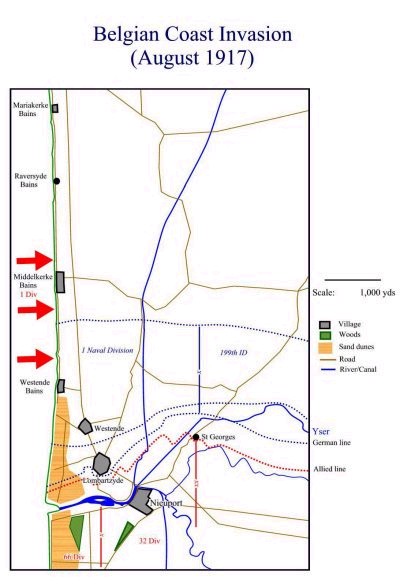
When the land push bogged down, the amphibious maneuver was cancelled but amazing technical progress was made in tanks with ramps to drive over sea walls, tanks with spiked tracks to overcome sand and mud as well as winches to lift guns and supplies. All of this is a TECHNOCRACY of thinking professionals with their hands dirty on a daily basis doing trials and experiments, tinkering with gear like good Northern Europeans with "Yankee Ingenuity" which is NOT the MORONOCRACY that the USMC has created of lazy, southern rednecks who think everything is about their personal ego and bodily self-validation--which lead to their defeat in the Civil War. The bottom line is that today, if an enemy obstacles and mines its beach shores, the USMC cannot land there except by heavy casualties as its not progressed at all from its deficient WW2 practices and is in many ways weaker since we lack naval gunfire battleships and close air support aircraft guided by observers in the air. The USMC has no counterpart to the British who had actual swimming tanks of many variants to include "male" fire support types with guns. The USMC persists in just bloated amtracks trying to carry too many men at one time rendering them as huge targets and somehow hopes what few M1 Abrams heavy tanks they have will somehow make it to shore by unarmored vulnerable LCAC hovercraft.
Fletcher says the number one thing the British learned about amphibious warfare is that SPECIALIZED TASKS NEEDS SPECIALIZED MEANS--the exact opposite of the lazy human body ad hoc mentality of the USMC which doesn't want to prepare for anything in advance if it requires mechanical gadgetry and takes away their narcissist time mowing lawns, polishing floors and chasing chicks in dress blue uniforms. When the USMC drops its parade ground crap it thinks all it needs to do is foot slog with hand weapons--the same disease the socially-conscious British Army types had before WW2 that resisted the efforts of reformers like J.F.C. Fuller, B.H. Liddell-Hart and Percy Hobart to properly mechanize on land let alone from the sea. Fletcher makes another profound remark:
"Since there was no specific body charged with development, ideas burst forth or fizzled out according to the whim of individuals or units".
This was the situation before the wars when despite it all, the British Royal Marines were using flat-bottom landing craft to land light tanks. What was the USMC doing? Nothing. It was still having foot-slogger infantrymen hop out from wooden boats. With WW2 underway, blood baths at Tarawa and Dieppe lead to the USMC using the tracked amtrack (amphibious infantry-carrying tanks) in greater quantities and the British to make ALL of their fire support and infantry-carrying tanks swim themselves to shore and not be clusterfucked several at-a-time in a flat bottom landing craft having to expose itself to drop non-swimming vehicles onto the enemy fire-swept beach. Once ashore, they would need a host of special task tanks to defeat mines, wire, walls, strong points and the earth underneath them. The British made the effort the USMC has never made to date---and this discrepancy is telling. In future days it will be fatal. Its not even surprising that it again was the British Army--not the USMC--that did the world's first helicopter air assault from ships in the 1956 Suez Canal operation, they have been the real leaders of amphibious warfare all along.
Sapper Tanks from Air, Sea and Land: Percy Hobart saves the Day in Europe with Maneuver Warfare and Combat Engineer Tank Forces
"You ask, What is our policy? I will say; "It is to wage war, by sea, land and air, with all our might and with all the strength that God can give us: to wage war against a monstrous tyranny, never surpassed in the dark lamentable catalogue of human crime. That is our policy." You ask, What is our aim? I can answer with one word: Victory-victory at all costs, victory in spite of all terror, victory however long and hard the road may be; for without victory there is no survival."
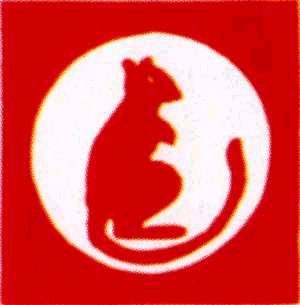
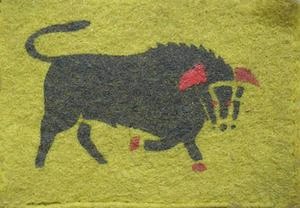
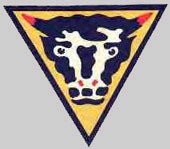
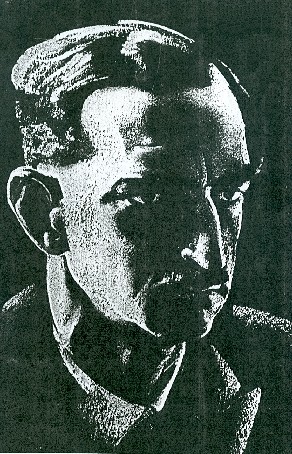
The men that created the tracked tank, Colonel Ernest Swinton and legendary Lord of Admiralty, Sir Winston Churchill who sponsored it, were joined in the 1920s by a man who almost lost his life when his spotter plane was shot down---decorated WWI Royal Engineer veteran-turned-armor corps officer, then Major Percy Hobart. Hobart was spotted from the air by another aircraft crew and saved by a daring ground rescue. In the 1930s, combined air-ground arms visonary, Hobart created the world's first tracked tank experimental brigade, gave its men the distinctive black beret and outfitted their vehicles with wireless radios. This mailed, mobile "fist" became the WWI-style trench breakthrough enabler, making the mechanized infiltration dreams of B.H. Liddell-Hart and J.F.C. Fuller a working reality. He made essentially a tank cavalry force. But as the clouds of war loomed over the pacifistic west, the clear-thinking and straight-talking Hobart made many powerful British Army egomaniac officer enemies resistant to innovation who wanted to perpetuate slow infantry linear war along with the horse cavalry with its class distinctions and by 1939 as a Major General, he was forced out of the Army! When Germany attacked lead by men like Guderian who incorporated Hobart's ideas fully, its light tracked, mechanized panzer 2D formations infiltrating cross-country through Allied WWI-style lines were led by assault pioneers glider-landing onto Belgian forts and Airborne parachute troops taking key mobility corridors by 3D maneuver from the air. As the Germans swept across Europe and infiltrated through Allied lines and encircled them, Hobart's other creation, the 7th Armored Division "Desert Rats" withdrew to Dunkirk where thanks to a heroic, desperate and doomed tank-infantry counter-attack at Arras gave the Germans just enough pause so that the British Army was able to escape back to England, saving the war effort. Yet while Britain was on the verge of ruin, her greatest fighting General, Percy Hobart was a Corporal in the Home Guard until one man made a difference and saved a nation, perhaps even the free world. Military theorist and WWI Captain Liddell-Hart wrote to Churchill directly and reminded him that Britain's greatest tank General was now a Corporal in the home guard during England's hour of need due to ego and greed.
The courage of Hobart and his humility to not give up, but to serve his country even as an enlisted Corporal is without equal and is worthy of a Hollywood saga like the recent film, "Gladiator" where a General becomes a foot Soldier and eventually leads a fight to save his country, except this time its all true. As Hobart's 7th Armored Division rebounded with new tanks and defeats the Italians and Afrika Corps in North Africa, he is called back to active duty at Churchill's orders and builds the 11th Armored Division which blazes a trail across Europe. But England, unlike the U.S., had been stung by mechanized, large-scale, total war not being ready for a major nation-state war, lulled into smug complacency fighting small, colonial wars in the 1920s/30s where some aircraft bombing and some armored car motorized infantry was thought to validate Army force structure and readiness.
However, by 1942, the anti-tank mine had become such a threat to armored vehicles in North Africa, that once again, sappers in cloth fatigues were forced to take the lead in the breach. Thus producing the seemingly absurd situation of cloth-clad sappers clearing the way under fire for the thick-skinned tanks. For this reason, the questions of how to effectively clear or neutralize Axis mines were ones that continually exercised the minds of many combat engineers in the Middle East. As the 7th Armored fought across Africa, Sicily and Italy it became readily apparent that something was amiss; tanks and men were being lost by the thousands to landmines, obstacles, strongpoints, and could not fly to get into positions of advantage deep in the enemy's rear to unhinge him. The British Army was slamming into an alert enemy creating counter-measures, head-on and losing thousands of men from a nation that never was the same after losing a generation of manhood in the trenches of WWI and thus, couldn't afford the losses. The tank as a form of cavalry was in use, but the tank as a form of offensive combat engineering had not been fully developed.
LTC William Schneck writes in his technical report on the breaching Operations at El Alamein that British Engineers began to devise sapper tanks in their own workshops in desperation not unlike today's "Junkyard Wars" cable-TV program except if your device works you don't die in battle:
"The mine flail tank idea began in 1941, with Abraham S. J. du Toit, a motor engineer in civilian life and a sergeant in the South African artillery, who developed a novel device that detonated mines by beating the ground with heavy chains or wire ropes driven by a rotating drum. A test rig was built on a truck and demonstrated in Pretoria, South Africa, where a short film was produced. After General Auchinleck saw the film, he thought it was a brilliant idea and sent Sergeant du Toit to England to pursue his invention in secrecy. The general felt that secrecy was vital in order to maintain the device's tactical surprise and value, but keeping it secret in the Middle East or South Africa was impossible. It was intended to mount it on a tank chassis for combat use. Sergeant du Toit was soon promoted to major and was closely involved in the development in Britain of what became the Matilda Baron. Although the Baron never saw combat, it did provide the knowledge and experience that eventually led to the development and fielding of the highly successful Sherman "Crab" flail tank which General Hobart used during the Normandy landings in 1944.
Before Sergeant du Toit had left for England, he had sketched out his idea for Captain Norman Berry, the South African Chief Mechanical Engineer for the 8th Army. Captain Berry soon became tired of waiting for results from England and, on his own initiative, went ahead with some free-lance experiments while the 8th Army was still entrenched along the Gazala Line in the spring of 1942. There was no precedent for frontline troops to design and build a piece of equipment of such importance and complexity. Later, during the summer, Lieutenant-Colonel Mill Colman, a member of the South African Engineer Corps, developed what he thought was a novel idea for mine clearing. The idea had come to him when he noted a tracked vehicle driving by with a length of wire entangled in its track sprockets. With each revolution of the sprocket, the wire hit the ground with great force. Based on this, he thought that it might be possible to build a thrashing device that could detonate mines. Major L. A. Girling, Commander of the 21st South African Corps Field Park Company, was tasked with constructing the first experimental unit. They called it a "mine destroying device." Captain Berry, hearing of the latest rebirth of the flail idea, told Major Girling of similar previous developments and described how Major du Toit had been sent to England by General Auchinleck to work on a similar idea in conditions of tight secrecy. So secret, in fact, that the Allied command in the Middle East had forgotten about the matter. Captain Berry gladly unearthed the remains of his earlier experiment and handed the contraption over to Major Girling's team of engineers, consisting of himself, Captain G.J. Barry, Lieutenant Hofmann and
Lieutenant C.D.B. Cramb. Work on the prototype flail tank commenced within twenty-four hours and by 6 August, the first mock-up was completed. This first flail prototype was christened the Durban Mark I, after Lieutenant-Colonel Colman's hometown in South Africa. The Durban Mark I incorporated many of Captain Berry's ideas, including an auxiliary 105-horsepower Ford V8 engine mounted in a sponson (an armored box) on the right hand side of the Matilda Tank's hull powered roller supports to a level box and then to the drum suspended above the ground. The horizontal flail rotor was held by two lattice girder arms about six feet in front of the tank and three feet above the ground. The rotor covered the entire width of the tank and was rotated in the same direction as the tank's movement, at a speed of approximately 100 revolutions per minute. The rotor was equipped with 24 flails, or chain assemblies, that hit the ground with a contact length of approximately 20-cm. On later versions, fielded after the Second Battle of El Alamein, the boom that carried the rotor was modified so that it could be elevated and depressed by means of hydraulic cylinders to aid in mobility when not in use.
After the tests, Major Girling's team continued to refine their design. On 12 September, the Durban Mark I was demonstrated for the 8th Army's corps commanders and their chief engineers. Generals Alexander, Commander-and-Chief, Middle East, Montgomery, Commander 8th Army, and Morshead, Commander 9th Australian Division, witnessed Scorpion demonstrations and were impressed with its capabilities, considering the short amount of time invested in the project. Major Girling was congratulated for bringing the project to such a successful conclusion so quickly. Brigadier Ray remarked that, in appearance, the prototype resembled a scorpion and the name stuck. General Montgomery, a deeply religious and austere man, felt the name appropriate and quoted from the First Book of Kings (Chapter 12, Verse 14): "My Father has chastised you with whips, but I shall chastise you with scorpions." Having observed the new, unprecedented invention, General Montgomery said that he wanted twelve for the coming attack. Brigadier Kisch had explained that the production of so large a number would have to be approved by General Headquarters and that it would mean suspending other production work. To this, General Montgomery replied, "Don't belly-ache, order two dozen." The next day Brigadier Kisch ordered the fabrication of an additional twenty-four of the new "Scorpion" mine destroyers, combined with the first prototype, this would provide the 8th Army a total of twenty-five Scorpions for Operation Lightfoot.
According to Major Reid of the New Zealand engineers, "This idea had great possibilities, especially from the sappers' point of view, as if we could get tanks to clear gaps through minefields we could anticipate a much longer life." Compared to the other available alternatives such as rollers and hand clearance, the flail-type mine clearance system appeared to be far superior.
Dieppe: prequel to the USMC's future--amphibious defeat on defended, obstacle-laden beaches via ad hocery
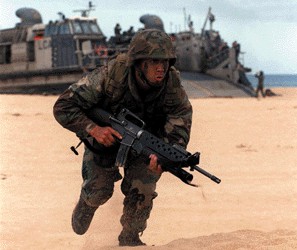
Today's beaches can be defended by not only obstacles and sea and land mines, but by guided munitions in a surveillance strike complex. Massing surface ships with thousands of marine victims trying to relive WW2 beach landing glory is fatally unsound as General Gavin warned us in 1947 in Airborne Warfare and later in 1958 in War and Peace in the Space Age. As did LTG Tuker in The Pattern of War--which is ironically offered as a USMC publication--that marines don't read--because if they did they would realize they are fucked-up and would stop packing thousands of men in bloated, vulnerable surface ships asking to be sunk. Gavin wisely advocates using submarines as the launch platforms for amphibious assaults. Yet, the incredibly dumb American marines still want to charge defended beaches straight-ahead into sea/land mines, obstacles in even more bloated amtracks than their WW2 predecessors absurdly claiming that high water speed will help when the fact is they are still going to a location where the enemy is waiting in ambush and/or in a defense-in-depth. "Over-The-Horizon" (OTH) assault only helps the Navy's amphibious surface ships from being sunk IF the enemy lacks basic anti-ship missiles that can be launched from a pick-up truck or a business jet. Instead of this linear, frontalist madness, smaller amtracks based on M113 Gavins that can FLY OVER MINES AND OBSTACLES by VTOL helicopters and STOL/parachute drop fixed-wing aircraft significant distance outside of the range of enemy guided munitions not just OTH line-of-sight---to include transport seaplanes---should land in an unpredictable, NON-LINEAR fashion deep behind enemy lines and take beaches from the inside-out with light tank/infantry shock action, and then do "maneuver warfare" AKA non-linear warfare inland. Talk is cheap; a foot-slogging and truck road-hopping marine corps is all TALK and no action when it comes to doing maneuver warfare.
However, this mechanical assistance bruises the weak USMC ego so it wants to foot-slog from overly complex V-22s and deposit some walking-victim rifleman ashore to be overwhelmed and die at the hands of the enemy's mobile reserves. This is total unprofessional ignorance from a malignant narcissist bureaucracy of the lessons learned fighting the competent Germans while doing combined Airborne-Amphibious operations which is to deploy Paratroopers en masse to shield amphibious landings from counter-attacks; such Airborne operations is a Congressionally-mandated mission but the egomaniac gyrenes are not interested. The U.S. Army has more landing craft, anyway and should pick up the torch the USMC has dropped and improve joint logistics-over-the-shore (JLOTS) to effect STRATEGIC MANEUVER. The Army has more amphibious warfare expertise than the USMC and most importantly, actually THINKS about what its doing if it hasn't turned a practice into a self-serving racket to take advantage of these lessons to forge maximum Airborne-Amphibious Maneuver Warfare capabilities:
There are two ways of landing troops on a defended beach IF you get even this far. One is to rely on a combination of bombardment and rapid movement to land assault troops as far up the beach as possible, trading perhaps lower human casualties for higher material loss. This technique is favored by the U.S. [dumbass] marine corps but as the record shows their frontal assaults are bloody--to themselves.
The other is to land troops when low tide exposed obstacles and made mine clearance easier, but at the risk of higher casualties among the assault units but fewer material losses among landing craft and other specialized or hard-to-replace equipment
For D-Day the latter course was chosen as extensive reconnaissance had shown the extent of German defenses and the risk they posed to landing craft at high tide. The British response to this decision, as well as the lessons learned at Dieppe, was to develop a number of specialized armored vehicles that could support the first wave of infantry and breach the German coastal defense line.
Dieppe Debacle
PART 1: German Army defeated by the Earth in Russia, Stalin asks for Allies to attack Germany from west to relieve pressure, Dieppe raid will be division-sized raid, Royal Navy can't protect big ships from air attack so no big gun cruisers/battleships were available to bust German guns (sound familiar as our Iowas sit unused?), paras will get this job
 www.youtube.com/watch?v=H4bBGQAaUic
www.youtube.com/watch?v=H4bBGQAaUic
PART 2:
 www.youtube.com/watch?v=pXUPD32dhHg
www.youtube.com/watch?v=pXUPD32dhHg
PART 3: Peter Young's force lost to boat sinkings, handful men vs. Goebbel's battery withdraw when run out of ammo, other battery to south taken out, wiped out by the many German guns NOT taken out
 www.youtube.com/watch?v=TJBbCLT3sUM
www.youtube.com/watch?v=TJBbCLT3sUM
PART 4:
 www.youtube.com/watch?v=Ej4koFuyoLg
www.youtube.com/watch?v=Ej4koFuyoLg
PART 5: Dieppe lessons; Mulberry portable harbors, Deception Plan, counter-air, Hobart's "Funnies" to overcome beach obstacles that USMC ignores today wanting to relive Iwo Jima clusterfuck/blood bath
 www.youtube.com/watch?v=NyiRkbta9oU
www.youtube.com/watch?v=NyiRkbta9oU
The deciding factor for the British Army was the disastrous amphibious raid at Dieppe in 1942 where tanks couldn't get off the beaches and infantry were slaughtered without adequate on-scene fire support. Witnessing the disaster at Dieppe from a British destroyer was Commander Ian Fleming RNVR and his intelligence gathering 30 Commando Unit (later became 30 Assault Unit) "Red Indians" who couldn't land to due to the failure of combat forces to clear the way for them to raid German intelligence centers. All the mental James Bond 007 intelligence-gathering in the world isn't going to help you if you are not PHYSICALLY prepared to act on it. A lesson today's C4ISR panacea-ists have yet to grasp. Fleming's intelligence gathering redoubled their efforts thanks to OSS-SOE spies dropped behind enemy lines to sabotage German reinforcements and get an exact plan of Rommel's defenses.
However, if something wasn't done immediately to fix the landing forces being pinned down by obstacles and enemy fires like they were at Dieppe, there would never be a forced-entry onto France to oust the Germans and win the war. If the Allies delayed, there was good chance that the excellent German scientists and engineers could develop an atomic bomb, jet aircraft and ballistic missiles to deliver them and the Nazi "Third Reich" could really indeed last 1,000 years. The allies needed a man that understood combat engineering and tanks who could create an entire Armored Division of them with sapper devices to breakthrough Hitler's western wall being built by the enemy's technotactical genius, Field Marshall Erwin Rommel.
That man was Major General Percy Hobart.
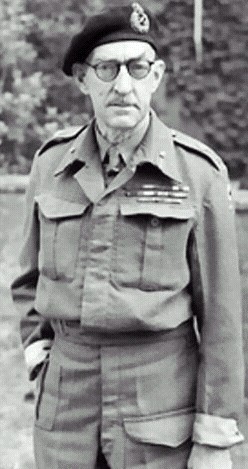
Colonel William Schneck, U.S. Army National Guard writes:
"The Royal Engineer, on the other hand, carefully considered their experiences at the Second Battle of El Alamein and the failed raid on Dieppe (19 August 1942). They continued to vigorously press the development of special purpose armored engineer vehicles as well as the organizations that could use them most effectively. It was apparent from their combat experiences, that although every Soldier had to be able to emplace and breach landmines, special units, focused on the problems of mobility were essential if the knowledge and experience in combined arms breaching was to be retained, analyzed and utilized. This trend ultimately culminated in the development of General Percival Hobart's famous 79th Armoured Division ('Hobart's Funnies'). If the Germans were the leaders in mine warfare, then, certainly the British became the leaders in breaching operations. Their famous 79th Armoured Division was probably the most advanced combat engineer organization ever put in the field by any country. This unit had capabilities that the U.S. Army does not have to this day. The development of the 79th Armoured Division was strongly encouraged and supported by General Montgomery as he prepared to assault through Generalfeldmarshall Rommel's defenses again, this time the Atlantic Wall in Normandy. General Montgomery was determined to be better prepared for the tricks of the Desert Fox than the pioneers on D-Day than he had been at El Alamein. It should be noted, that some historians attribute the disparity between British and American casualties on D-Day to the decision by General Omar Bradley to use primarily dismounted engineers to breach the beach obstacles, while the 'funnies' of the 79th Armoured Division were able to execute a mounted breach of the Atlantic Wall".
VIDEO: D-Day Secrets
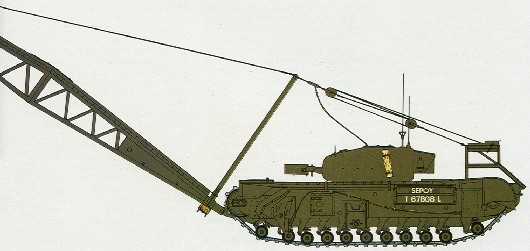
 www.youtube.com/watch?v=cWMpotV21E4
www.youtube.com/watch?v=cWMpotV21E4
Part 2 jeeps driving off front ramp of Higgins boats, DD tanks
 www.youtube.com/watch?v=jhLFyXc50lQ
www.youtube.com/watch?v=jhLFyXc50lQ
Part 3: DD tanks continued
 www.youtube.com/watch?v=qgYAySZ_xIk
www.youtube.com/watch?v=qgYAySZ_xIk
Part 4: Airborne, General Hobart to the Rescue!
 www.youtube.com/watch?v=UN6Lyh2tEN0
www.youtube.com/watch?v=UN6Lyh2tEN0
Part 5: Hobart's Funnies, Pegasus bridge stand-off glider assault
 www.youtube.com/watch?v=uPHWero8ueE&NR=1
www.youtube.com/watch?v=uPHWero8ueE&NR=1
Part 6: Soft blue clay spurs creation of "BOBBIN" mat-laying tank, Pegasus bridge pilots recount their assault
 www.youtube.com/watch?v=hdBt2SvHHGk
www.youtube.com/watch?v=hdBt2SvHHGk
Part 7: 29 x DD tanks launched too early towards Omaha beach, 27 sank
 www.youtube.com/watch?v=30XOuEX2ETg
www.youtube.com/watch?v=30XOuEX2ETg
Part 8: rocket ships miss Omaha beach so there's no shell craters to offer cover from enemy fire, 85 machine gun positions await, dismounted beach assault means heavy casualties, need amtracks, why didn't Higgins boats have machine guns and cannon to blast the enemy? In contrast British DD tanks clear out enemy machine guns on their beaches
 www.youtube.com/watch?v=KKySxT6i0bw&NR=1
www.youtube.com/watch?v=KKySxT6i0bw&NR=1
Part 9: Hobart's dustbin tanks explode walls and crabs flail for mines, GIs on Omaha need gunshields, DD tanks push inland, American incompetents rejected offer of Hobart's Funnies as "an eccentric British invention"
 www.youtube.com/watch?v=3HCu6Sx7Qxk&NR=1
www.youtube.com/watch?v=3HCu6Sx7Qxk&NR=1
Part 10: Funnies clear commonwealth beaches while anti-mechanization Americans still stuck, 2, 000 dead on Omaha beach, survivors meet years later
 www.youtube.com/watch?v=kCxTnDp2G2A
www.youtube.com/watch?v=kCxTnDp2G2A
So in top-secrecy and utter desperation, Hobart created the 79th Armored Division, symbol the bull's head. The Division was composed of entire units with a single specialty type vehicle to solve basically one battlefield problem type. Its critical that readers understand this attention-to-detail. In 1942, there was simply no time to rebuild the entire Allied Army to improve vehicle and equipment with totally new designs to overcome the countermeasures the Germans had been throwing at them. There was no time. The simple steel-construction armored vehicle technology was not sufficient to make multi-functional vehicles. There was just enough time however, for a Division's worth of specialty vehicles to be adapted from existing vehicles that could act as specialty spearheads to overcome the battlefield problems the Germans created and then hope that this TEMPORARY relief would be just enough so the as-is forces could then proceed and fight the types of combats their designs were optimized to perform.
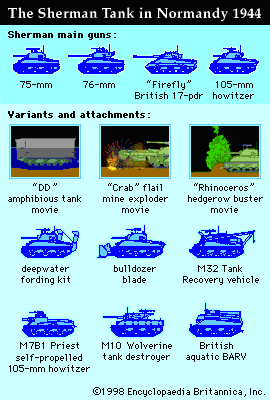
1942 Army Problem---------------------->Specialty Solution
Need Enabler
Fly------------Airborne light units by parachutes/gliders
www.combatreform.org/airbornetanksnoexcuse.htm
Fly or Swim:


Clears Drop and Landing Zones to makes airfields for Airborne 3D maneuver forces, clears beach of obstacles for 2D maneuver forces
P.S.: Yes, Virginia these are "tanks"--anything that is TRACKED and ARMORED is a tank.
Swim-----------Amphibious Tanks (swim selves) Landing Craft (swim others)
Amphibious medium Duplex Drive (DD) medium tanks
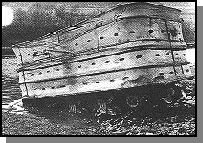
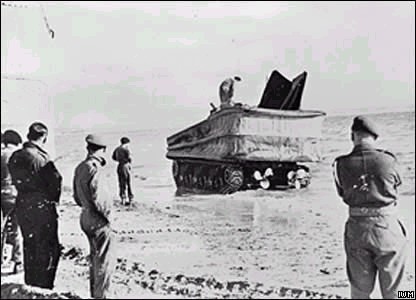
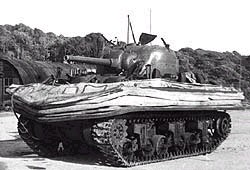
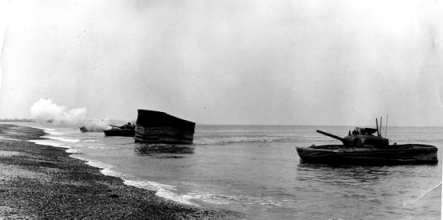
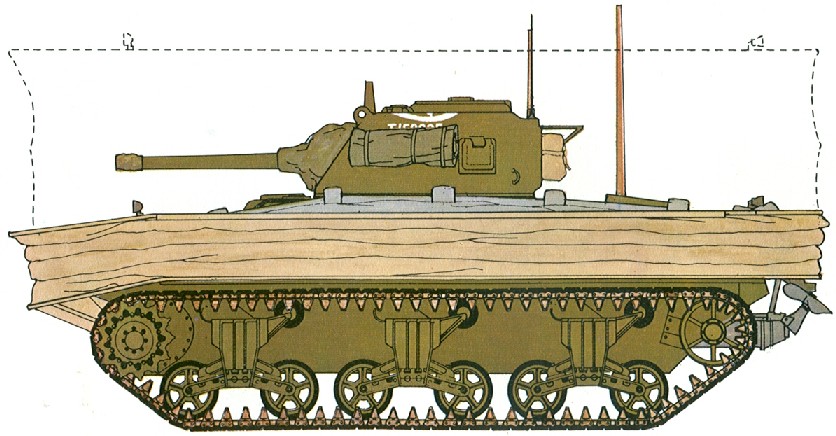
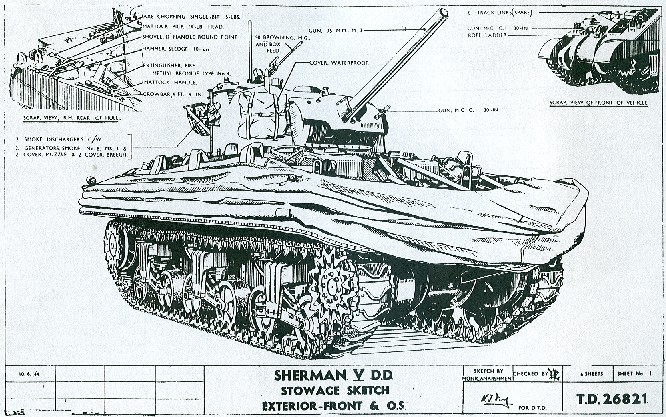
Amphibious Armored Personnel/Vehicle Carriers: "Buffalos"
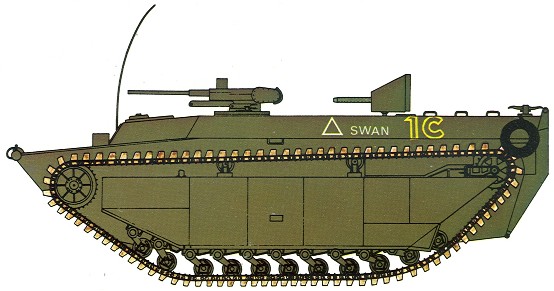
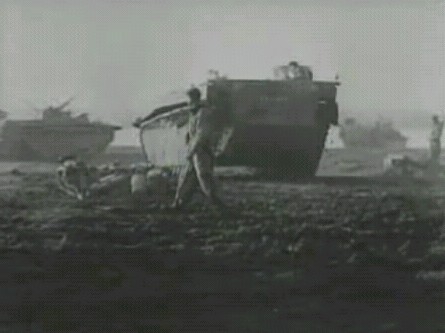
British LVT-4 with Polsten 20mm autocannon
The American-made LVT-4s were not available until after the D-Day landings, and were used extensively thereafter by the 79th.
www.combatreform.org/armorhistory/amphibiousinfantrytanks.htm
Landmines--------------Flail medium tanks "Crab"
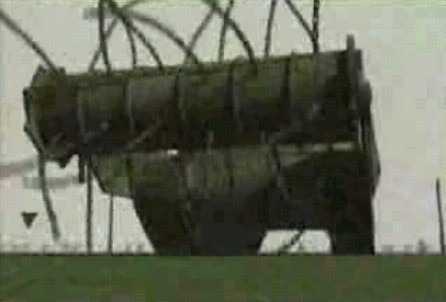
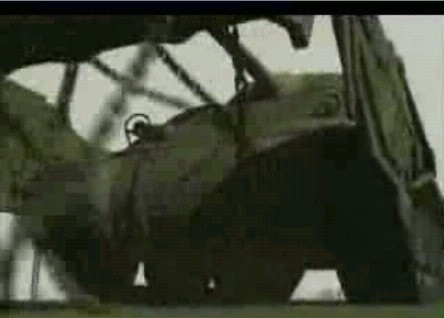
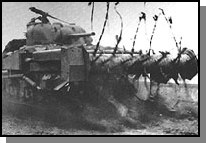
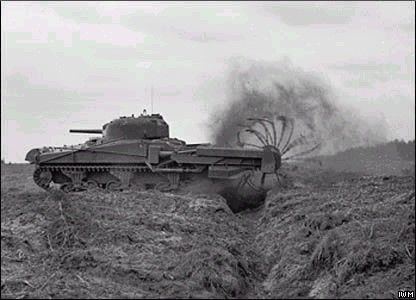
Mine Rakes/Plows
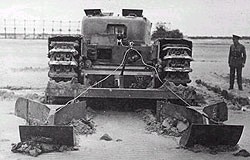
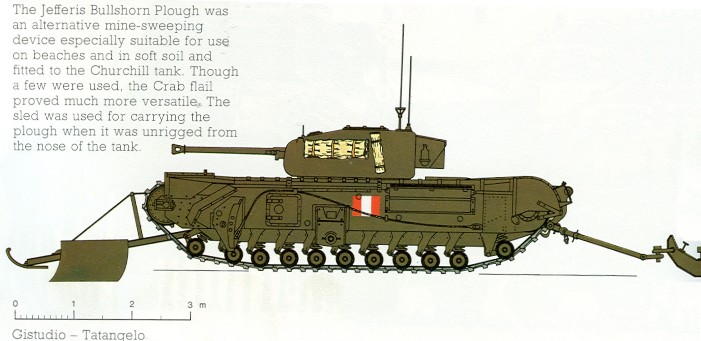
Rocket line Charges "Conger" and Vehicle-Emplaced Bangalore (VEB) pole charges "Snake"
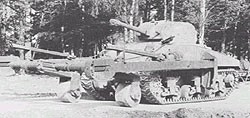
Obstacles
Soft sand bogging down wheeled trucks-------------Matt-laying medium tanks
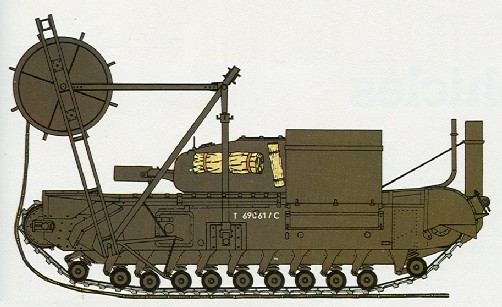
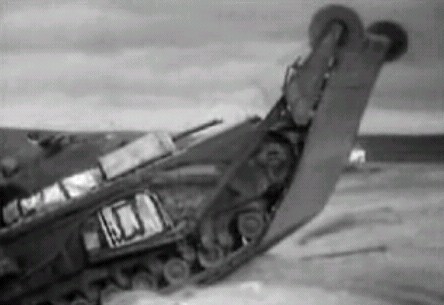

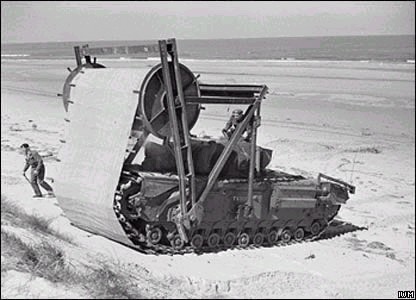
Destroyed and Inoperative vehicles-----------High water fording tanks "BARV" Beach Armoured Recovery Vehicles
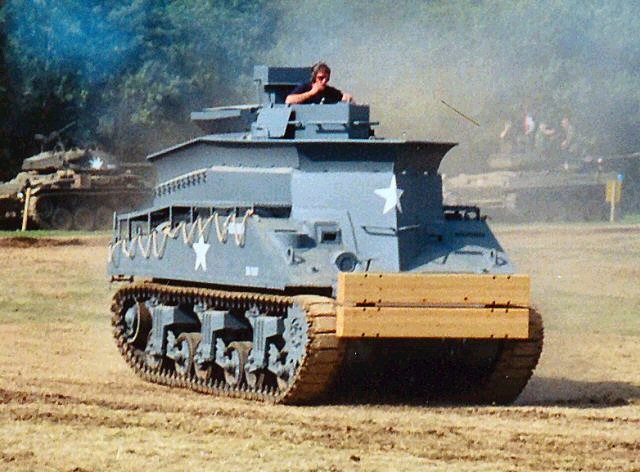
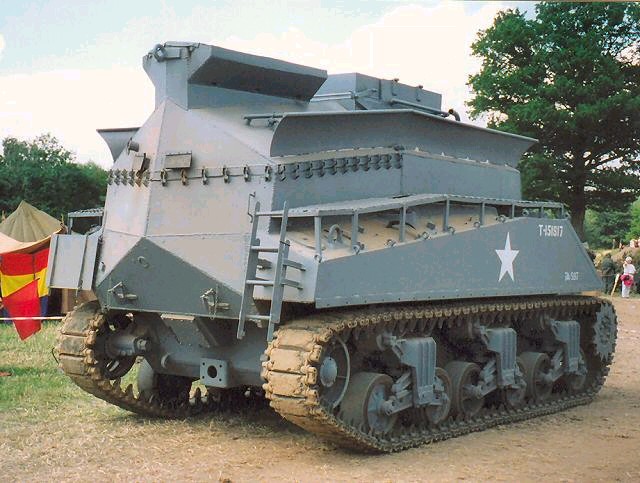
Ditches/Sea Walls-------------------Fascine bundle dropping medium tanks
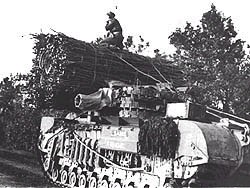
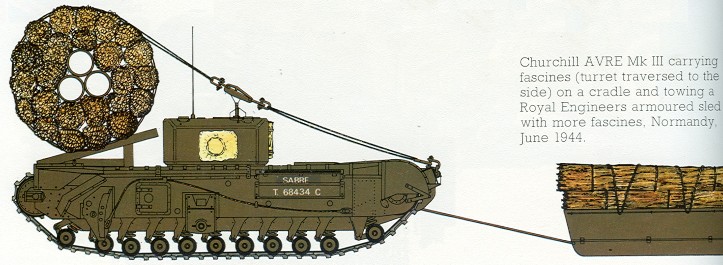
Medium tanks with overhead ramps "Ark"
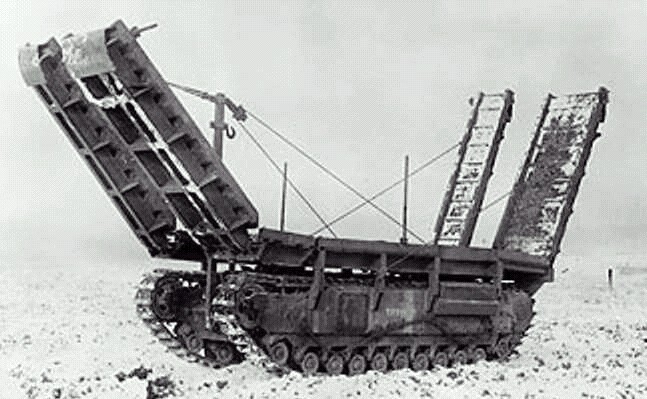
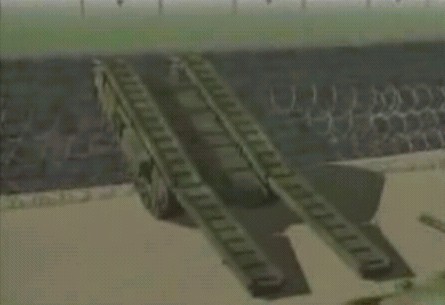
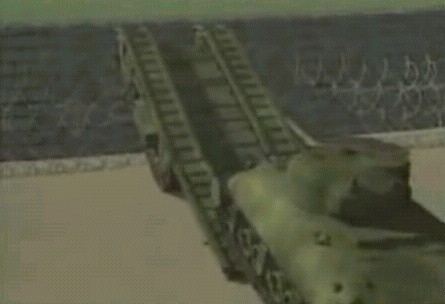
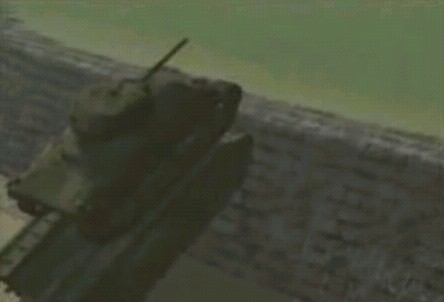
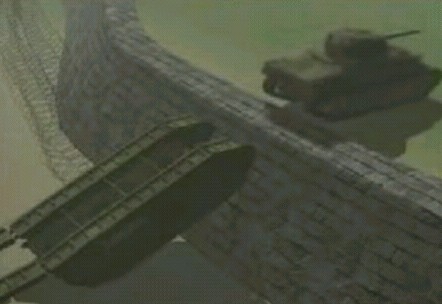
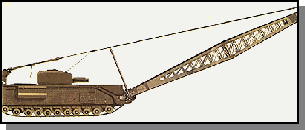
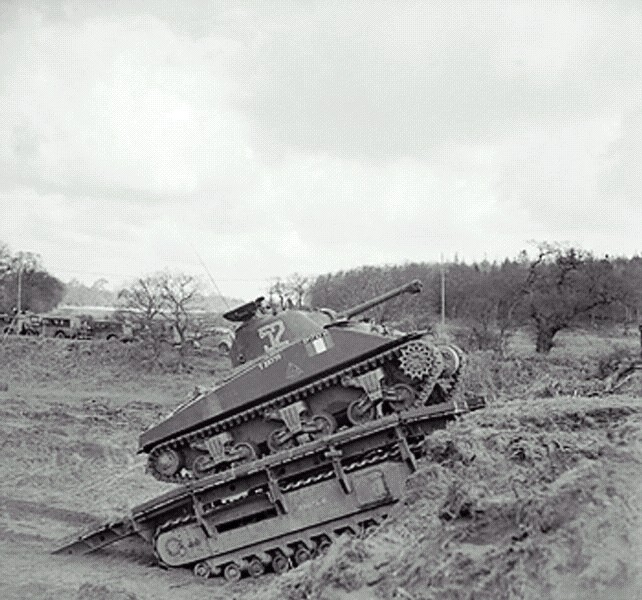
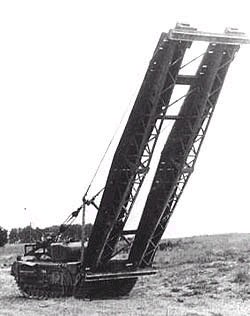
Strongpoints and Steel Girder Obstacles-------AVRE medium tanks with Petard demolition guns shooting "Dustbin" shells
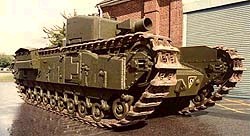
Enemy inspiration: the German Sturmgeschutze turretless assault gun light tanks were THE MOST SUCCESSFUL GERMAN TANKS of WW2. Their doctrine of infantry having their own light tanks capable of following them wherever they go like the British concept that gave the Churchill tank is correct, and the lazy American turreted, medium tank-for-everything mentality which has morphed into Tiger heavy tank clones of today THAT CANNOT GO WITH INFANTRY INTO CLOSED TERRAINS, stranding them to foot-slog and use wheeled trucks is unsound. Details:
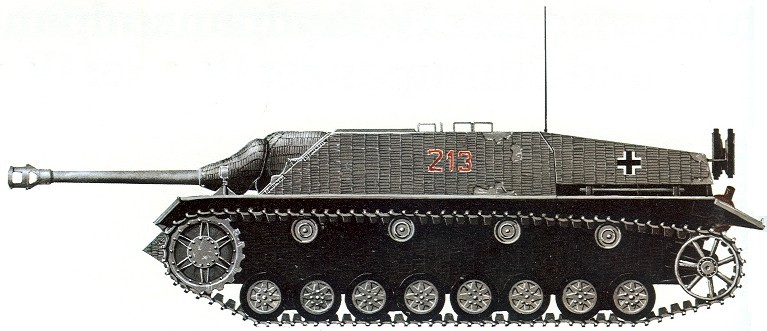
Flame-thrower medium tanks "Crocodiles"
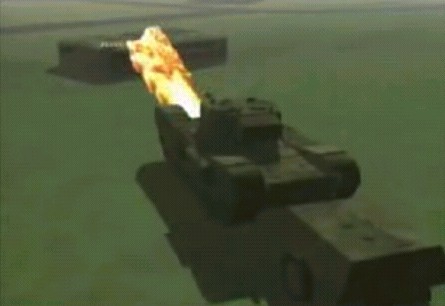

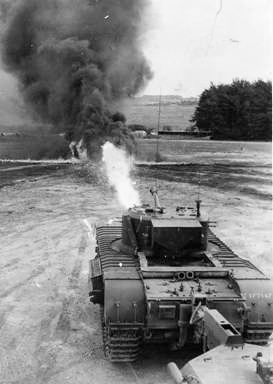
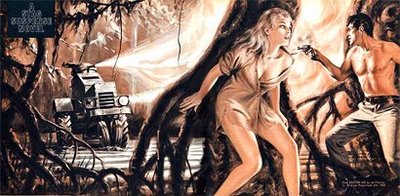
After WW2, Commander Fleming became the world-famous writer of the James Bond Agent 007 novels; in Dr. No he has the evil villain's fortified, underground base defended by a flame-throwing swamp-mobile tank, taken from his knowledge of Hobart's Crocodile flame-throwing tanks. We in the U.S. Army had extremely effective flame-throwing tanks in the Vietnam war based on the legendary M113 Gavin light tank chassis.
 www.youtube.com/watch?v=D0N-xWxsOOw
www.youtube.com/watch?v=D0N-xWxsOOw
Automatic weapons fire----------"Kangaroo" medium tank Armored Personnel Carriers
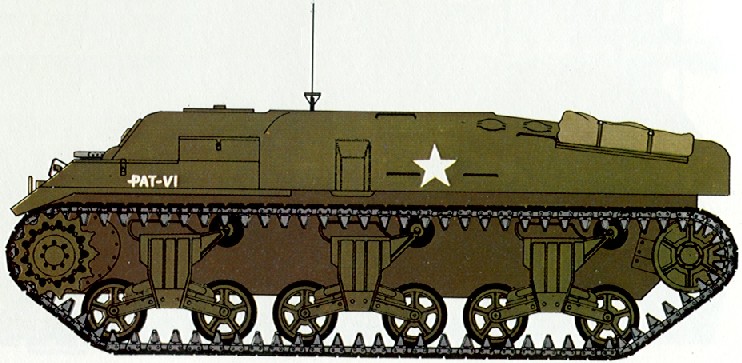
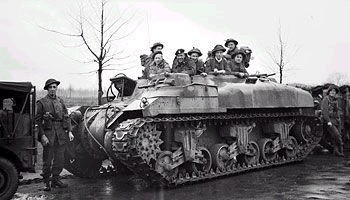
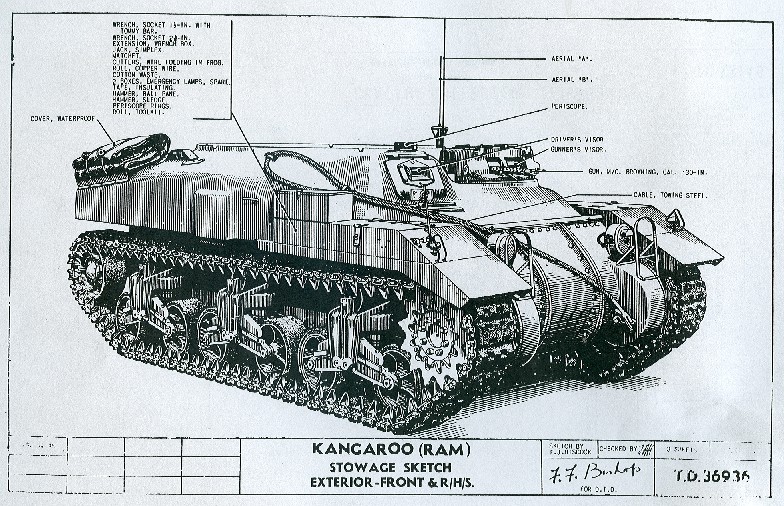
Sherman medium tank turrets were removed to create open-topped Armored Personnel Carriers with better protection than light Bren gun carriers but less cross-country mobility, though they were the lightest and most mobile of the narrow-tracked Sherman family
Night Fighting---------------------Vision-blinding "Canal Defense Light" (CDL) Grant Medium Tanks
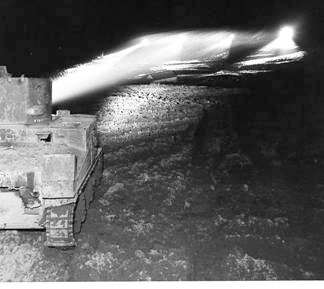
Before the age of lasers, the British could temporarily blind foes with powerful searchlights fitted to surplus Grant medium tanks. Since the D-Day landings were made during the day, it was not until late in the wear that CDL units got into combat action. They were available for night combat to keep 30 Corps moving to link up with the British Paras at Arnhem but nobody thought of using them to help.
On the evening of June 5th, 1944 the skies over France were filled with criss-crossing anti-aircraft fire as the Airbornes of America and England performing as "3D cavalry" parachuted and glidered into France to seal off the invasion beaches as a screening and covering force from enemy counter-attacks.
So far so good.
As morning's fog lifted, so did naval gunfire and aircraft bombing runs, leaving the Germans intact on the beaches ready to repel the Allies just like they had two years earlier at Dieppe. But this time, emerging from the water were Duplex Drive (DD) amphibious M4 Sherman medium tanks whose 75mm guns began barking high-explosive shells into German gun positions at point-blank range. Sherman flail tanks beat the sand ahead, exploding mines as the 79th Armored Division's elements spread throughout the Sword, Gold and Juno beaches stormed ashore and overwhelmed the unexpecting Germans under well-laid smokescreens. As more sea landing craft arrived, dozens of "Hobart's Funnies" drove ashore laying mats for wheeled vehicles, filling in ditches and finishing off pillboxes with projected demolition charges. In a matter of hours, the British were 10 miles inland with light casualties.
D-Day SITREP as of 2400 Hours on June 6, 1944
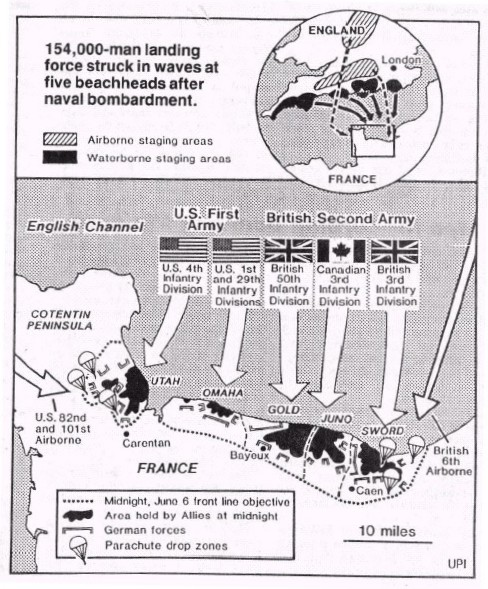
American Luck at Utah, Near Disaster at Omaha Beach
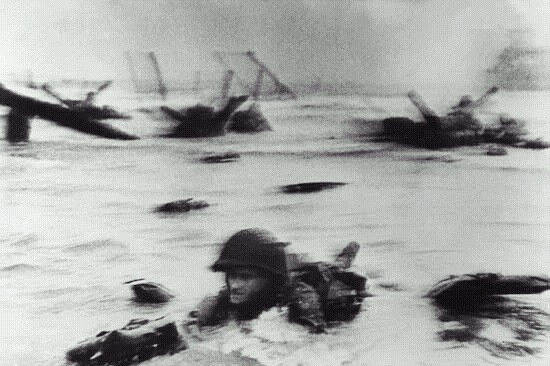
"You can always count on Americans to do the right thing-after they've tried everything else."
--Winston Churchill
The American 82nd and 101st Airborne landings sealed off Utah beach and the sea landings came ashore with few casualties. But at the junction of the Anglo and American beaches, Omaha beach---things were desperate; the aircraft had bombed too far inland and had hit nothing, there were no smokescreens and the men were getting clobbered by murderous inter-locking fire from the dug-in Germans high on the bluffs. Fortunately a grassfire had created a defacto smokescreen and some infantry had made it ashore. The others, overloaded with gear, foot-slogged and plopped onto the beaches and either died or got up and took matters into their own hands ala Saving Private Ryan since their superior officers had failed to provide them a winning hand. While General Omar Bradley considered pulling off the beach, American National Guard General Norm Cota found a group of Combat Engineers and Rangers and asked them to "lead the way". At great human cost, an explosive breach was made by direct hand emplacement through the vertical bluffs and Americans poured through the hole.
Supreme Allied Commander, General Eisenhower wrote:
"Apart from the factor of tactical surprise, the comparatively light casualties which we sustained on all beaches, except OMAHA, were in large measure due to the success of the novel mechanical contrivances which we employed, and to the staggering moral and material effect of the mass of armor landed in the leading waves of the assault. It is doubtful if the assault forces could have firmly established themselves without the assistance of these weapons".
Liddell-Hart reports in his book, The Tanks that the U.S. 70th, 741st and 743rd Tank Battalions were trained by Hobart to operate DD Shermans. On D-Day, two companies of DD Shermans were launched prudently 2 miles from shore and all except 2 made it and rendered valuable fire support on Utah beach. 2 entire BATTALIONS of DD Shermans were to launch for Omaha beach; one battalion launched too early drowning everyone except for 2 tanks and the other battalion completely chickened out and did not launch at all. Someone should have been court-martialed for the cowardice of launching too early and murdering a bunch of men and for not launching at all. We know for a fact from official Army photos (see below) that at least one of the prematurely-launched American DD Sherman amphibious tanks reached Omaha beach and offered supporting fires and continued up to the cliffs until knocked out. Of course this doesn't fit into the foot-slogger, hero-worship of a movie like "Saving Private Ryan" and was not depicted.
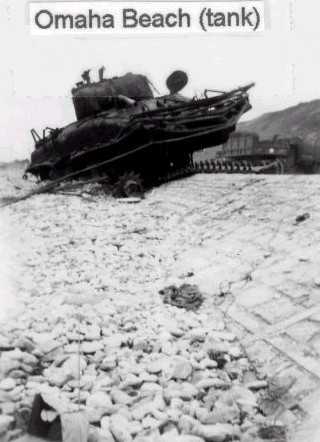
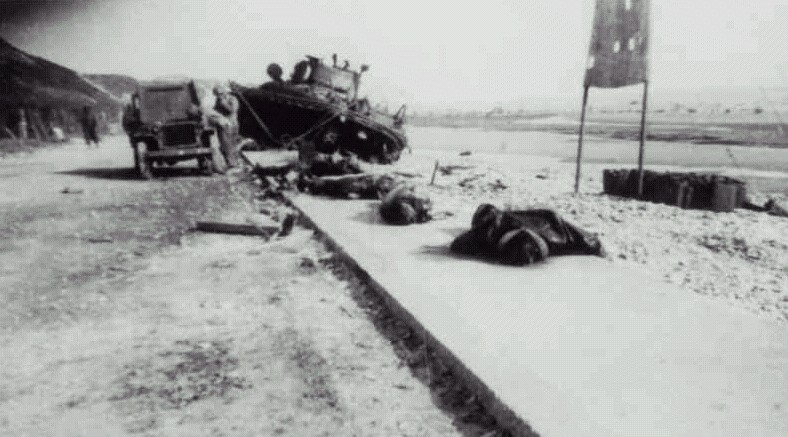
However, the lesson to have specialty combat engineering tanks in the assault was not learned by the Americans, as General Hobart pointed out in his final post-war report on the 79th Armored Division.
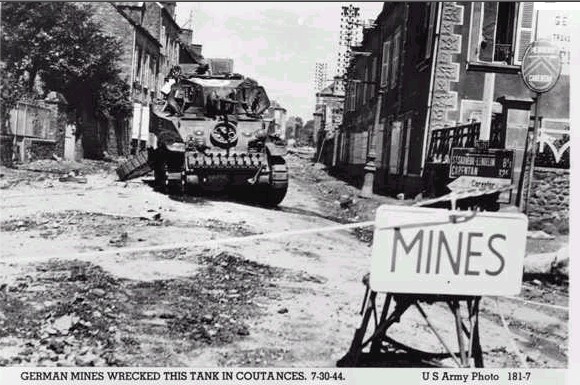
The Americans by doctrine, had failed to develop a Combat Engineer tank ethos because such clear thinking and doing was stultified by tanks being developed under a vague "Armor" branch without a solid battlefield function and direction. U.S. Armored units were/are a quasi-combat engineer breakthrough force (couldn't storm beaches) and a quasi-cavalry force able to cover the main body from German heavy tanks, it was something in-between. It was in essence another main body needing specialty engineer armored tank support! To screen ahead for German tanks, General McNair's "tank destroyers"; units with towed and self-propelled anti-tank guns; the latter in open-top turrets that roamed ahead but were never in enough quantity and the right places. Hobart had lent the Americans some DD Sherman amphibious tanks but a coward running the landing craft let them off too far from the beach and most sank. A few were able to land on Omaha beach and make a small difference. Had they arrived in force, the DD tanks could have saved the majority of the 2, 000 lives lost on Omaha beach. The dumb USMC still doesn't have any amphibious tanks to do fire support yet claims its amphibious warfare skilled---its more like they will get killed. On June 6, 1944, the U.S. Army's lack of mechanization-for-mechanical-advantage troubles were just beginning.
Moving inland, without optimal Combat Engineer tanks, the U.S. Army ran into French farm irrigation hedgerows and couldn't cut through the thick vegetation. Meanwhile the Germans with heavy, defensive tanks and shaped-charge anti-tank rocket ("Panzerfaust" and "Panzerschriek") teams ambushed American medium tanks while our infantry duked it out with their infantry, rifle-versus-rifle, machinegun-versus-machinegun, grenade-versus-grenade.
While this was taking place, the British Army found the limitations of their Army doctrine and equipment trying to take the cross-roads city of Caen. While they had superb specialty 2D maneuver axis combat engineering armor and a 3D Airborne infantry to force an entry ashore, their tanks in a cavalry role had not kept up with the Germans in ballistic and armor development and their medium offensive tanks were decimated by heavy defensive and turretless light tanks hiding in hedgerow vegetation and immune to their main gun fires while themselves having longer ranging and more powerful guns. The British Firefly 17-pounder anti-tank gun equipped Shermans were few in number and the Germans attacked them first--ALL Allied Sherman tanks should have been fitted with 17-pounder (76.2mm) guns so all could kill even heavy German tanks. A cavalry force must be able to screen ahead and cover, but this is only a temporary remedy; something must be coming from behind to actually solve the battlefield problem at hand. With a medium tank with a gun only capable of infantry breakthrough (quasi-combat engineering) support and not heavy, defensive tank destroying, British tank losses were horrific. Realizing the problem was the low-velocity gun on the Sherman medium tank, the British retrofitted more high-velocity 76.2mm gun "Firefly" tanks as a stop-gap measure as WW2 went on while the dumb American tankers died waiting for the 90mm gun M26 Pershing to enter the war too late. A German heavy-tank killing gun could have been fitted to a HULL of an American light tank chassis starting as far back as North Africa had we payed attention to the success the German STUGs were having as tank destroyers and assault guns for their infantry. Today, we have no excuse for not having turretless, STUG light tanks.
Operation Cobra: the Normandy break-out made possible by field-expedient combat engineer devices
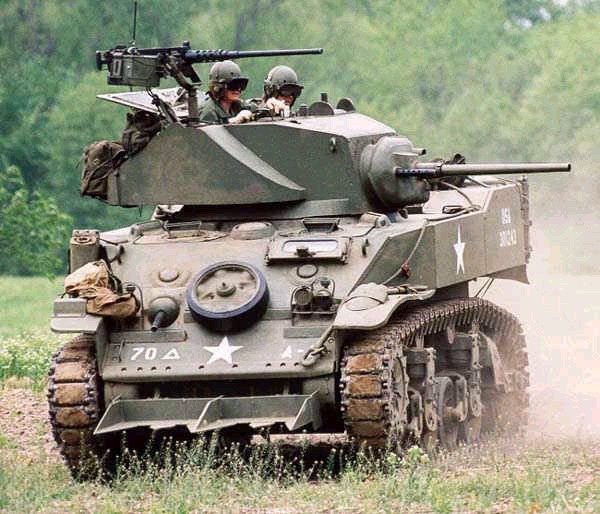
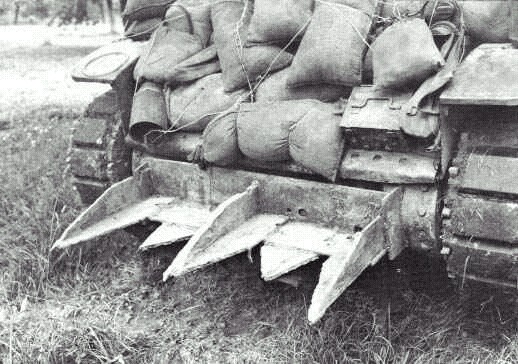
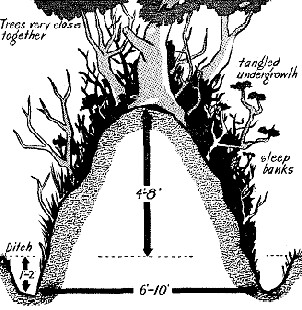
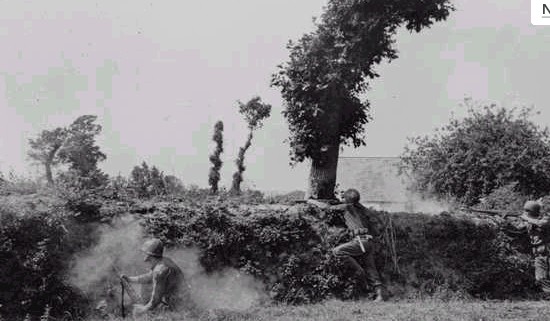
Since the British were far better mechanized to withstand German heavy tank attacks since they had 17-pounder (76.2mm) guns fitted to their "Firefly" Sherman medium tanks while American tanks had ineffective 75mm guns, Operation Goodwood, the taking of Caen by Montgomery's Armies drew away German panzers so Patton's 3rd Army could break-out at St. Lo from bocage country. Of, course Patton never thanked Montgomery for this.
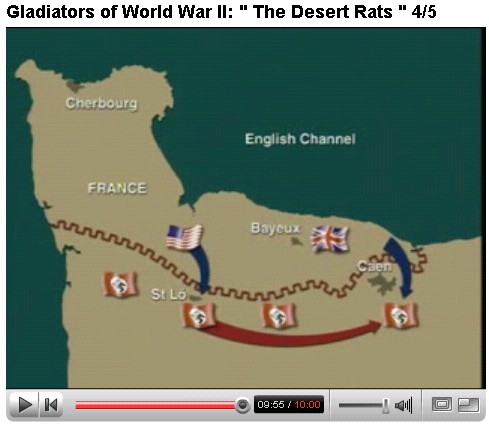
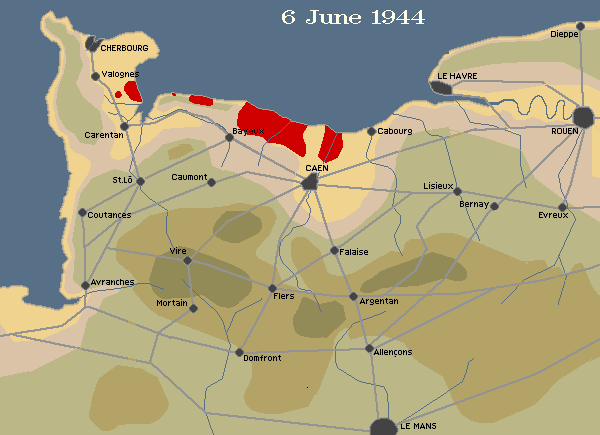
In the south, a U.S. Army enlistedman finally came up with the solution; optimize the tanks we have to be better adapted to overcome the terrain. T/SGT Cullins welded steel hedgerow cutters to the front of the M4 Sherman tank and discovered a way to breakthrough just in time as American heavy strategic bombers, having little success bombing Germany into surrender were brought in to carpet-bomb the way ahead for the American 1st Army. The strategic bombs used in a focused, tactical manner had devastating effect on the Germans (Billy Mitchell would have been proud) and Patton's 3rd Army poured through to run free around the German Army to collapse and encircle it as a giant offensive cavalry formation. The British took Caen, and supplies began to flow from its ports and the British and Americans raced across France. What is not well known is that the Germans laid 100,000,000 (MILLION) land mines in France. But thanks to Hobart's flails, they were negated to such a degree that by the time the Allies reached Germany the enemy had figured it was futile to lay landmines if flails would just blow them up, thus thousands of lives were saved, a success-by-prevention you'll likely never read in a newspaper or history book.
What was not realized in either the American or British Armies as they raced to Germany, was that serious water and fortified obstacles lay ahead. While Patton used cavalry-type maneuver to try to find a less defended way to get around obstacles and enemies to encircle and "bag them"; when he ran into them like at Aachen, he did not have combat engineers with specialized tanks to overcome enemy resistance mechanically and had to rely on hand-emplaced engineer actions resulting in heavy casualties and loss of time, nor did he have tanks that could swim. Even Patton needed bridges built for him to cross, though he wished he had a parachute brigade or even dozens of artillery spotter planes to fly across and drop men off to secure the far banks.
So where was the 79th Armored Division at Arnhem?
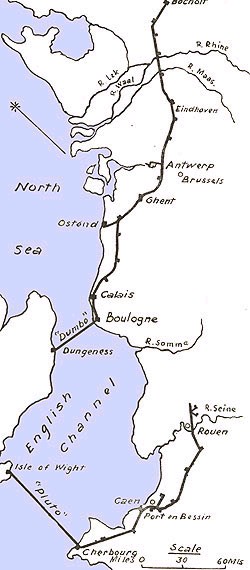
"The British always lose every battle--except the last one"
Vyvyan Adams, Men in our Time
http://books.google.com/books?id=uY-MwzNZRQ8C&pg=PA12&lpg=PA12&dq=the+british+always+lose+every+battle+except+the+last+one&source=web&ots=xAeCLNbhQX&sig=eFtujcmyMDE9cguLWis--BJFu4s
Adams elaborates further..."by and large and always when her independence is at stake, Britain does prevail in the final stages of wars. The last battle is the battle to win...Must we always, it may be asked, move so slowly into action that nine battles have to be lost before we win the decisive tenth?"
By 1944 the allied supply lines were over-extended and a focus of main effort had to be chosen to direct supplies to weight either the U.S. or British advance. With a fuel pipeline in place from England, General Eisenhower chose to back Montgomery's plan to 3D maneuver U.S./Anglo Airborne Divisions ahead to take bridges over the major rivers in Holland (Operation Market) while the 2D force of XXX (30th) Armored Corps (Operation Garden) rushed up a single, narrow highway to relieve the Paratroopers and cross the bridges. So the question arises, where was the 79th Armored Division in all this? If they had the 79th's Combat Engineer tanks which could swim, and tracked transports to ferry men and vehicles across why did the British Army need the bridges?
Wikipedia [http://en.wikipedia.org/wiki/Operation_Market_Garden] reports:
The terrain was also ill-suited for the mission of XXX Corps. Little contingency had been made in the event of blown bridges along the route.Montgomery initially suggested Operation Comet, a limited airborne coup de main to seize the bridge in Arnhem on September 7, but weather postponements and a fluid enemy situation made it evident that Arnhem was too distant a target for an unsupported airborne attack. Comet was replaced by a more ambitious plan that bypassed the Siegfried Line, crossed the Rhine with large-scale forces, and trapped the German 15th Army between Arnhem and the shores of the IJsselmeer. This would also isolate the V-2 launch sites that were bombarding London and Antwerp. However, the plan aimed the British Second Army northwards through terrain with numerous water obstacles; this moved them away from the U.S. First Army.
WW2 Mystery: A Bridge Too Far or We Didn't Go Far Enough? P4
 www.youtube.com/watch?v=7WftY4JUHMo
www.youtube.com/watch?v=7WftY4JUHMo
Here is the crux of the issue and why we noted that the existence of a specialty 79th Division provided TEMPORARY relief to an Army's mobility problems. At Normandy, the 79th had to perform only one major act, get the Army ashore. At Arnhem, there were 4 major rivers to cross. Where was the 79th?
Reactive Funnies
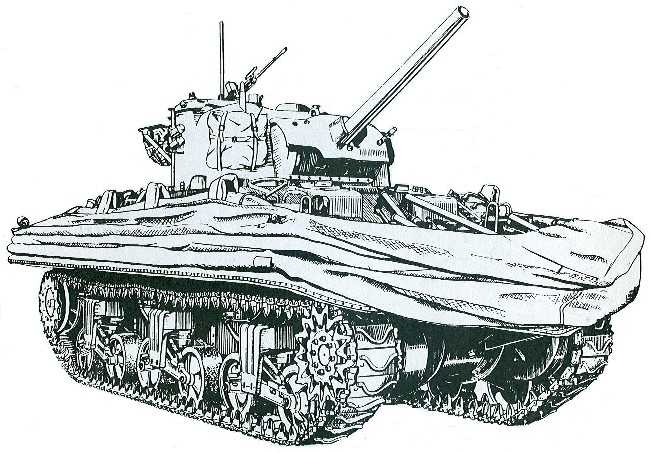
Their official history on the bottom of this web page shows during Operation Market-Garden they were fighting to take the channel ports on the left flank of the British and Canadian armies. However, by day 4, with LTC Frost's men removed from the north side of Arnhem bridge, the rest of the 1st British Airborne division that couldn't reach them because they dropped too far away and didn't Hamilcar glider-land light tanks or Bren gun carriers with big guns to act as mini-STUGs to blast a way open were still holding a defensive perimeter over the Rhine that could have been reinforced by LVT-4 Buffalo personnel and vehicle carriers and DD Sherman swimming tanks--had Hobart's men been asked to provide them. The DD Shermans could have warded off the German tanks with the help of fresh infantry delivered by the Buffalos--some of which had Polsten 20mm autocannon and flamethrowers to assist. We know wheeled DUKW amphibious trucks crossed the Rhine to deliver ammunition to the 1st Airborne's Osterbeek perimeter but got stuck in the mud. Why not send in Hobart's tracked funnies with some mats? In fact, a Buffalo could swim across a smaller Bren gun carrier with troops inside!---so a few handfuls could go back and forth delivering a growing amount of infantry shielded from German fire by their carriers to effect terrain and firepower dominance. Higgins boat landing craft could also be trucked to the south bank of the Rhine river and debark Bren gun carriers/infantry, too--in fact M3/M5 Stuart light tanks could also be ferried across this way. Why wasn't a contingency plan in place in case one of the bridges couldn't be secured for whatever the reason (blown up, too many Germans defending it etc.) to get tanks and troops across knowing failure to get just one river crossing jeopardizes the whole mission? The British Army had the world's most powerful amphibious armored force in existence, perhaps to date, yet one gets the feeling the planners of Operation Market-Garden perhaps for reasons of weak ego vis-a-vis Hobart getting yet another triumph or whatever--did not seem to even CONSULT HIM OR THEM on how to force a river crossing while they had been doing such things constantly over the water-sunken edges of Europe ever since breaking out from Normandy 2 months before. The official 79th Armoured history (at bottom of this web page) gives scant mention of Arnhem, as does prolific author and protégé of Hobart, Major Kenneth Macksey in his book Armoured Crusader. There were several options to get tanks across the Rhine, and Montgomery, Horrocks and Browning tried none of them! Thus, the failure at Arnhem is on their hands, too!
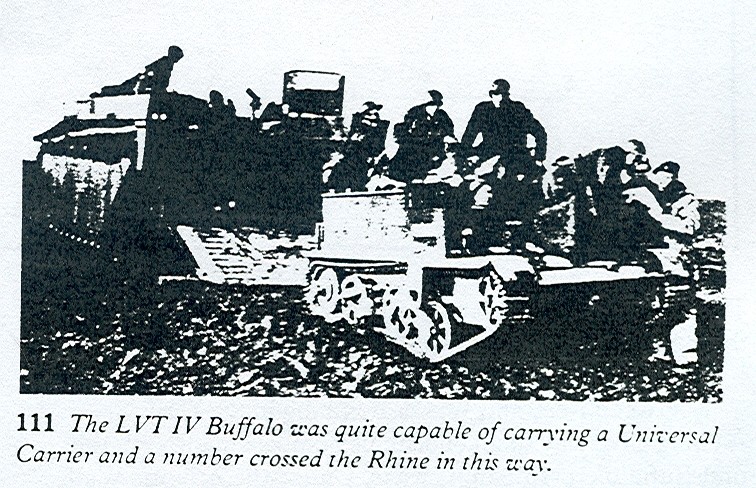
Where was General Montgomery as Market-Garden was going sour?
Why didn't he intervene and dispatch some of Hobart's amphibious funnies to salvage success at Arnhem?
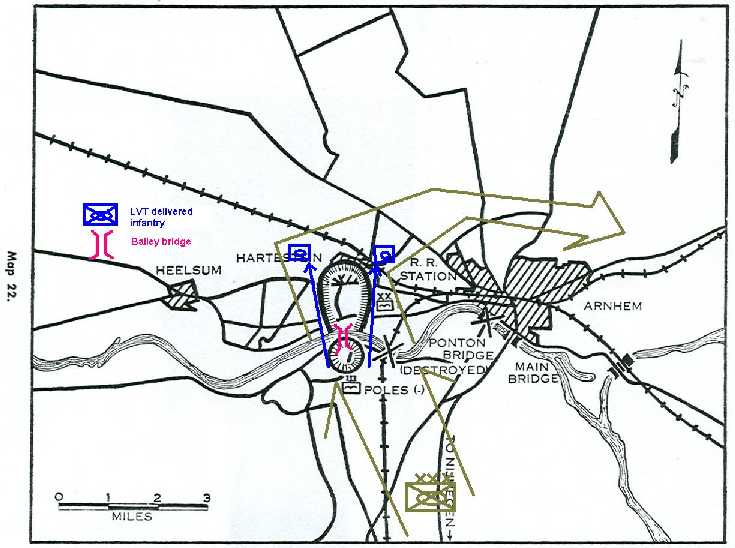
The map above derived from General Gavin's maps shows how Hobart's Funnies could have made Market-Garden successful even with the loss of the Arnhem road bridge to the east.
Pro-Active Funnies
If Market-Garden had planned all along for amphibious carriers and tanks, and the 79th detachment forces across the first river, the 2nd, 3rd and 4th bridges might be blown up by the enemy. Then, the 79th would have to force a river crossing 3 more times against an alert enemy, but they are better prepared to do this then what actually took place--Paratroopers in flimsy boats had to paddle across when engineers couldn't erect a Bailey bridge across in a timely manner.

General Gavin Asks Major Julian Cook to Assault Nijmegan Bridge
 www.youtube.com/watch?v=ACiWrHFMeYY&feature=related
www.youtube.com/watch?v=ACiWrHFMeYY&feature=related
Nijmegan Bridge Boat Assault
 www.youtube.com/v/Lj6sbcyVsqw
www.youtube.com/v/Lj6sbcyVsqw
Hobart's Unemployed CDL Tanks Not Used: Night Fighting, Anyone?
General Hobart trained his armored divisions, the 7th, 11th and 79th to fight at night. Apparently the rest of the British armored units "didn't get the memo". What of the 79th CDL beam light Grant medium tanks? What were they doing? Playing checkers? Why didn't Montgomery put them to work to keep the XXX/30 Corps advance going during the night?
http://en.wikipedia.org/wiki/Operation_Market_Garden
Wikepedia reports:
The common doctrine for armour at that time was to halt at night, and although some night attacks had been made with armour by 21st Army Group in Normandy during Operation Totalise, no attempt was made here.Despite the capture of Nijmegen bridge and the clearing of the town on the previous evening, the Guards Armoured Division did not begin their advance until some eighteen hours later, at noon. Lieutenant General Brian Horrocks claimed he needed this delay to sort out the confusion among his troops that had resulted from the battle in Nijmegen. This was a controversial decision that has been examined often in the years since.
Gavin's diary comment was: "Had Ridgway been in command at that moment, we would have been ordered up that road in spite of all our difficulties, to save the men at Arnhem." The historian Max Hastings wrote "It reflected poorly on the British Army...".
The actions of XXX Corps have also been questioned. Their advance was characterized by what was widely perceived, at the time, as a lack of drive. For example, XXX Corps did not jump off until mid-afternoon of the first day and were delayed by pockets of German resistance and the need for engineers to replace the bridge destroyed at Son. They arrived at Nijmegen on September 19 when the plan called for them to be in Arnhem by that afternoon. Their major unexpected delay arose from the need to support the 82nd's assaults on Nijmegen and its bridges. After the river had been crossed, the Guards waited 18 hours to resume their advance; in the words of Colonel Reuben Tucker (commander of the 504th) the Guards "...stopped for tea". While not literally true, Tucker's statement summed up the view some U.S. troops had of the XXX Corps units. Ridgway added that he was "much dissatisfied with the apathy and lack of aggressiveness of the British forces".
The point for us today is that having a specialized force is NOT the optimal answer to an Army that lacks its own full 2D mobility even if its on hand. The optimal answer is that an Army must be able to 2D swim and 3D fly itself and not need bridges in the first place. The result was that by the time the 2D maneuver XXX Corps arrived to link-up with the 3D maneuver Airborne, the Germans had reinforced the far back of the Rhine such that even if a crossing was forced there was no easy path to the industrial heartland of Germany to end the war Sherman-style with flying columns of mechanized cavalry. Montgomery was trying to use the 3D Airborne to take bridges by coup de main as a work-around for the weakness that his Army couldn't 2D swim. He should have realized his plan wasn't working and dispatched some of the 79th Armoured's swimming APCs/tanks to secure the breakthrough over the Rhine river and pour on through later with bridges for non-swimming tanks. That the WW1-style linear British Army was content to use Arnhem as a bulge to advance their front lines and continue to plod slowly to Berlin is further indictment to the lack of military competence for modern, non-linear war that ignored and sacked General Hobart who was offering ways to prevail in the new ways of war.
Months later, the 79th's specialized tanks were brought forward and the Rhine river was crossed after a massive Airborne drop of Paratroopers to secure the far bank. Soon WWII was over.
Here is how the WW2 Germans in LIGHT tanks coped with river crossings. Note that all the British had to do at the Osterbeek pocket was to gain the heights and stop enemy direct fire and indirect fire observation and BUILD A BAILEY BRIDGE. They already had the BRIDGEHEAD.
River Crossing: German Assault Pioneer Style
Part 1: Fascinating conceptual presentation using animation; engineers act as terrain cavalry for main body, More excellent outboard motor to push assault boats fast across the water to the far bank means less exposure to enemy fire than paddling as 82nd Airborne had to to cross Waal to take Nijmegan bridge, minimalist ferry concept pushed by motor assault boat at least gets towed AT guns across, ferries become pontoon bridge
 www.youtube.com/watch?v=X4HptS5iQG4
www.youtube.com/watch?v=X4HptS5iQG4
Part 2: pontoon bridge enables excellent Czech-built 38T light tanks and pioneers in motorcycle sidecars to cross, Dragon's teeth tank obstacles blown up, rubber boat to cross another small river where a girder bridge is projected across, minefield encoutered they launch some form of smokescreen shell to mask themselves as the bangalore torpedo some wire and mines to make a breach, smoke grenades used liberally, flamethrower and pole charge against a pillbox
 www.youtube.com/watch?v=ipcL7WyJN14
www.youtube.com/watch?v=ipcL7WyJN14
River Crossing: American Style: Wait Until You are in a Jam
101st Loses Bridge that Slows 30 Corps Advance
 www.youtube.com/watch?v=Tt4WdpOF4yg
www.youtube.com/watch?v=Tt4WdpOF4yg
I Need 60 Feet of Bridge...
 www.youtube.com/watch?v=5pMeb4ZSHh8
www.youtube.com/watch?v=5pMeb4ZSHh8
Rebuilding the Son Bridge
 www.youtube.com/v/oTrO-B9sx3g
www.youtube.com/v/oTrO-B9sx3g
When the Rhine was crossed belatedly in 1945, Hobart's Funnies lead the way, so there's no excuse why the year before they hadn't been employed. Even American tankers swam across in their own DD Sherman tanks of the 739th Medium Tank Battalion. Of course, after WW2 such units were de-activated and the equipment and the skills to counter mines, obstacles and swim was lost.
Battle of the Rhine
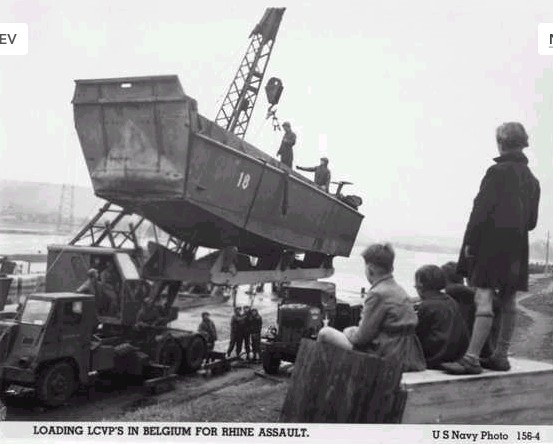
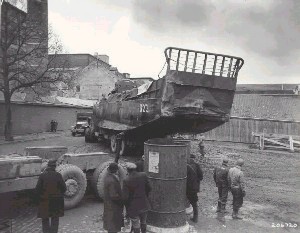
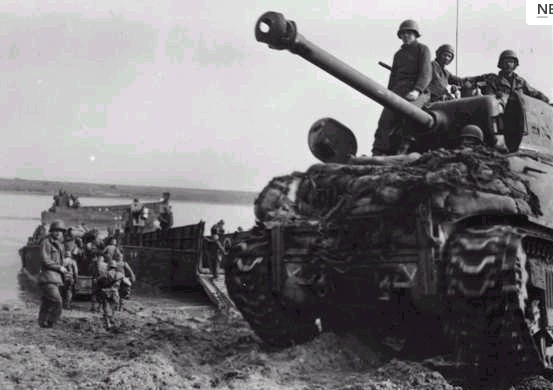
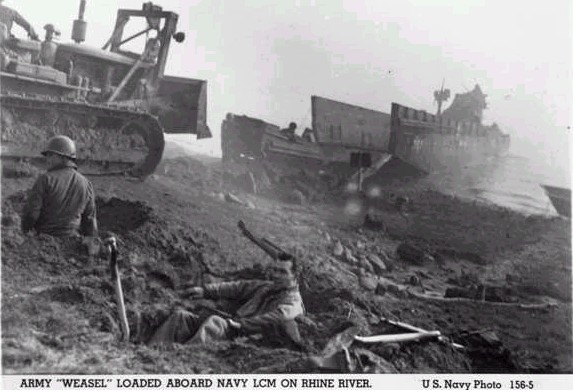
In the following videos, you will see Hobart's Funnies in action but not specifically noted by the documentarian's verbage. You'll see LVT-4s brought in by trucks, swimming across German rivers, Sherman tank mine flails, Churchill tank flamethrowers etc. Notice the smoke pots to create smokescreens for optically masking assault vehicles during the river crossings. These videos will give you the "BIG PICTURE" of where the Arnhem failure fit in, and the terrible aftermath.
Courageous FDR: failing health desires WW2 to end realizes British and American Alliance must stay strong
 www.youtube.com/watch?v=Auxz7kcq9Mo
www.youtube.com/watch?v=Auxz7kcq9Mo
 www.youtube.com/watch?v=jHVBoU-6YW0
www.youtube.com/watch?v=jHVBoU-6YW0
General Eisenhower: politician, not tactician, bungles war termination
 www.youtube.com/watch?v=6WGT1_FBiqA
www.youtube.com/watch?v=6WGT1_FBiqA
Germans hope v-weapons and counter-attack British-American alliance to shatter it stop them at Siegfried line
 www.youtube.com/watch?v=fCjv6ceIhU0
www.youtube.com/watch?v=fCjv6ceIhU0
Antwerp port taken but river seamined covered by nearby Germans on nearby land, Operation Market-Garden to outflank Siegfried line, but British bungle it
 www.youtube.com/watch?v=pfYi1zK5eug
www.youtube.com/watch?v=pfYi1zK5eug
Order of Battle
 www.youtube.com/watch?v=_b7ZsWcbtSE
www.youtube.com/watch?v=_b7ZsWcbtSE
The Siegfried Line, not bypassed at Arnhem must be pierced, lowlands leading to port of Antwerp cleared by Canadians with Hobart's Funnies leading with amphibious tanks/apcs
 www.youtube.com/watch?v=Tb5KfMb6AMo
www.youtube.com/watch?v=Tb5KfMb6AMo
The Bulge
 www.youtube.com/watch?v=JlSAWfKU3tc
www.youtube.com/watch?v=JlSAWfKU3tc
Advance to the left Rhine: Operation Veritable
 www.youtube.com/watch?v=ts_0IXqCmcg
www.youtube.com/watch?v=ts_0IXqCmcg
Operation Plunder: Ground part of British Army right Rhine River Crossing
 www.youtube.com/watch?v=TDjEb8YYte8
www.youtube.com/watch?v=TDjEb8YYte8
Allies meet Russians at Elbe River
 www.youtube.com/watch?v=f0L5PqLCWlQ
www.youtube.com/watch?v=f0L5PqLCWlQ
Russians take Berlin
 www.youtube.com/watch?v=nvoCi0Ehdlc
www.youtube.com/watch?v=nvoCi0Ehdlc
General Hobart After World War II Continues to Innovate with Engineer Tanks
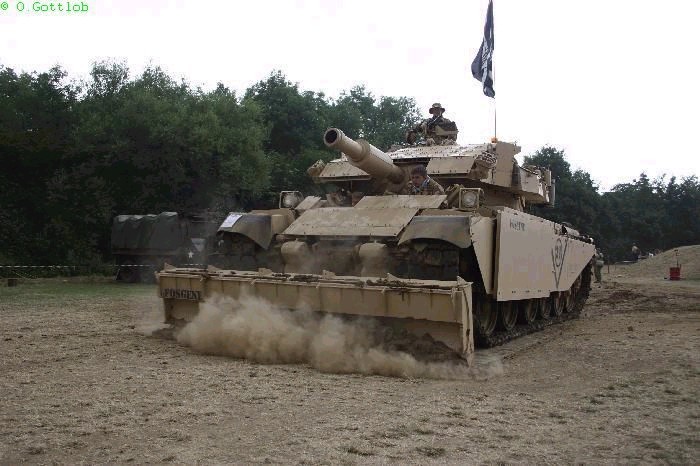
"Don't be content with things as they are, the earth is yours and the fullness thereof"
--Winston Churchill
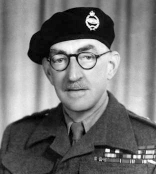
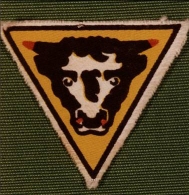
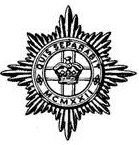
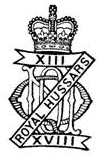

Many pundits even the otherwise sound Simon Dunstan condemn the British tank design categories of WW2--the slow infantry support tank--some with combat engineer devices, the light tank for reconnaissance, the cruiser medium tank to exploit breakthroughs the infantry and support tanks gained because these tank types were not optimized for tank duels. Of course British generals didn't value tanks, they wanted to foot-slog and fight war at a snail's pace! However, going to the other extreme that EVERYTHING revolves around the tank and tank-versus-tank combat is just as misguided. The heavy metal idiots don't understand that the mistake of the British General officer majority in WW2 was NOT that they didn't want to duel other tanks, it was that they wanted to FIGHT LINEAR WARS WITH INFANTRY BREAKING THROUGH THE ENEMY'S LINES slowly instead of breaking in and fanning out quickly with mechanized mobility to collapse the enemy from within Hobart blitzkrieg-style--which is NON-LINEAR WARFARE. An example of this was Operation Market-Garden. As bad as this operation was planned and equipped, an easy victory was possible by sending XXX/30 Corps to another bridge over the Rhine that was undefended and circles back behind the Germans fixated on the British Paras holding the Arnhem road bridge. General Montgomery rejected this request by the suddenly daring instead of cautious Corps Commander, General Horrocks.
Wikipedia reports:
Arnhem bridge was not the only available Rhine crossing. In fact, had the Market Garden planners realized that a ferry was available at Driel, Frost's paratroops might well have secured that instead of the Arnhem bridge, making a profound difference in the campaign because at a shorter distance away from their western drop and landing zones--the whole of the 1st Brigade could have concentrated to hold the Osterbeek heights instead of just one battalion farther away at the road bridge. In this case, Arnhem was "one bridge too many". The commander of XXX Corps advocated another course of action. About 16 miles (25 km) to the west was another bridge similar to Arnhem, at Rhenen, which he predicted would be undefended because of all the efforts being directed on Oosterbeek. This was in fact the case, but the corps was never authorised to take the bridge; if they had, it is almost certain they would have crossed unopposed into the rear of the German lines. By this time, it appears that Montgomery was more concerned with the ongoing German assaults on Market Garden's lengthy 'tail'.
For an example of what medium tanks can do against foot troops in "rear" areas, the following film clip from "Kelly's Heroes" is instructive:
 www.youtube.com/watch?v=8NmsiFfS3lY
www.youtube.com/watch?v=8NmsiFfS3lY
The heavy-tank-o-philes folks fail to understand the operational art that wins battles and wars and instead see tank warfare against their mirror images as some sort of "ultimate" in self-validation. Wars are about VICTORY not ego trips. The heavy tank egotists buy into the "universal" one-tank-for-everything non-sense that is now known as the "main battle tank" (MBT) for a "main battle area" ie an area you are defending--which is a HEAVY TANK mentality driven by the fear of tankers being hit and incinerated by German medium-heavy 46-ton Panther and 50-60 ton Tiger tanks that were ON THE DEFENSIVE that were made heavier to compensate for a lack of numbers to attain overmatch over the swarms of American Shermans and Russian T34 30-ton MEDIUM tanks attacking them. We have simply switched places with the Germans of late WW2 with our tank designs awaiting a replay of the eastern WW2 half of the final offensive. LTG Gavin rightly condemns this "deification of heavy armor" in 1954 as being out-of-touch with physical planet earth reality where there is much closed terrain not passable by medium-to-heavy tanks that need man-made strips of firm open terrain--called roads/trails which are easily blocked and ambushed by more mobile enemies like the North Koreans, the Red Chinese and the Vietnamese.
Most tank enthusiasts today don't get it; the mistake in the British tank categories was that they did not have a category of tanks to destroy other tanks--the TANK DESTROYER. If they had trouble fitting a heavy tank killing gun in a turret with equal 2, 000 meter range of the German 88mm, THAN DO WITHOUT A TURRET and place the gun in the hull like a STUG that was the German's most successful tank because of its lightness for mobility and low silhouette meant it was not spotted before it killed its high silhouette Allied tank.
However, with tankers driving tank development out of self-centered desires for individual self-preservation ("Mech Pussies") what is needed to WIN BATTLES according to necessary FUNCTIONS got lost in the shuffle for a tank that could withstand a direct hit of a German 88mm gun yet be faster than the slow Churchill infantry support tank and have a turret to swivel 360 degrees for tank dueling peace-of-mind. The British couldn't do this in WW2 at medium tank weight of 40 tons so the result was the 57-ton Centurion HEAVY tank, an excellent tank for firm OPEN TERRAIN but hardly an "universal tank" for everything a mechanized army needs to do. This dangerously false idea that ALL tanks must be heavy and capable of withstanding a main gun hit of an enemy heavy tank has destroyed OFFENSIVE MANEUVER WARFARE capabilities in the West by saddling us with tanks that cannot operate in closed terrain and can only move in open terrain at enormous fuel costs.
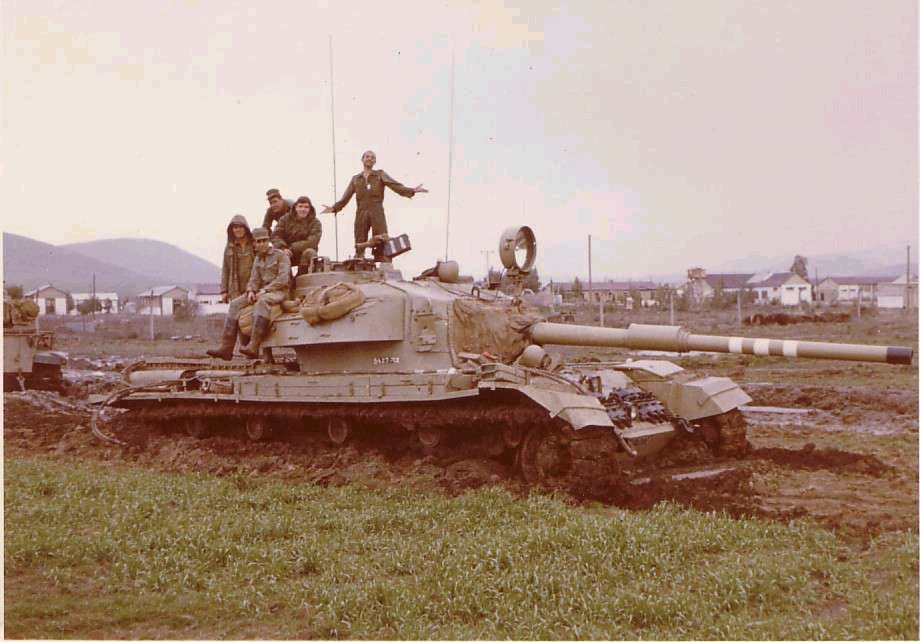
We CAN make a light-to-medium tank able of withstanding a direct hit by an enemy main gun IF WE ARE TURRETLESS and not squander power/payload efficiency with a turret. The amazing Swedish "S" tank is proof of this. The entire force including the main body can SWIM across lakes and rivers and wouldn't need bridges avoiding Arnhem-like fiascos.
 www.youtube.com/v/NT-8X2JOcAc
www.youtube.com/v/NT-8X2JOcAc
We are now stuck with DEFENSIVE heavy tanks with huge turrets asking to be blown off that are ill-suited to go overseas in the offense to get bandits that hide in closed terrains and populations and that if they are used to defeat an enemy nation-state army lack an effective cavalry in light tanks that can keep moving in all terrains, to include patches of open terrain where its too soft for medium-to-heavy tanks to not get stuck in.
World renowned tank expert, David Fletcher writes in his Vanguard of Victory: the History of the 79th Armoured Division:
The Specialized Armour Development EstablishmentThe wartime activities of the 79
th Armoured Division ceased when Germany capitulated; they never went to the Far East. Similar equipment was employed in the war against Japan, the Americans making extensive use of amphibians in the island campaigns and the Australian Army developing what they called "Circus Equipment", based on the Matilda, which mirrored much of what had been used in Europe. The return of peace separates the Citizen-Soldier from his professional counterpart in that the former discards his uniform as soon as possible while the latter carries on with his duty. So it was with Hobart; he saw the post-war world as another challenge and his faith in the peculiar services -of specialized armour encouraged him to continue its development. With War Office approval, he established a new organization at Woodbridge in Suffolk, with an amphibious wing at Gosport in Hampshire which was known as the Specialized Armour Development Establishment, SADE. It lasted for six years. The dual tasks were to improve existing equipment and develop new ideas.
Despite the fact that it was hardly used during the war, the CDL idea was continued. An automatic carbon-feed system was designed to obviate the need for manual replacement and a more compact form of light was produced for fitting to the turret of the new Centurion tank. This had the advantage of retaining the tank's main armament so that special types of tanks were not required. An alternative system using mercury vapour lights was also tested on a Cromwell.
The Churchill Crocodile, which again saw service in Korea, was modified in various details. The internal controls for the flame projector were improved and the pressure system for fuel delivery was changed to eliminate leakage which had bedevilled the wartime models. The Crocodile trailer was fitted with floatation apparatus which permitted it to be towed by a DD tank and a prototype Centurion Crocodile appeared. However the trend was towards self-contained tank flamethrowers instead of trailers so no further versions of Crocodile were made.
The Sherman Crab had more than vindicated its potential and by the end of the war a Mark II version, which was better able to follow ground contours, had been evolved. SADE experimented with smaller diameter rotor drums to reduce the incidence of damage by blast and a reduction gearbox was inserted into the rotor drive on a Mark II in order to reduce the flailing rate. This was in answer to a German practice of linking pairs of mines as an antidote to Crab. The problem of station keeping between flail tanks in action was investigated in a variety of ways including the unlikely expedient of chaining two tanks together; needless to say, this was not a solution that worked very well. Other minesweeping options were tried using rockets and jets. The jets, 5-inch ATOG type, of the kind used for assisted lift-off on aircraft, were mounted at the front of a tank. Starting with single and triple mountings, the theme was extended until a Mark IV Churchill appeared with no less than twelve of them on an angled framework. They could clear mines alright but they burned out too quickly and further development was not considered worthwhile.
The unit employed was a W2/700 gas turbine which was mounted on the nose of the tank at an angle, pointing downwards. It was worked up to full revs at which time the tank moved slowly forwards against the mines. The blast from the jet carved a shallow trench in the soil and the offending mine was thrown some 8 metres (9 yards) without detonating. However, results varied to such an extent that this scheme, too, was soon abandoned.
Numerous detail improvements were also made to the DD Sherman. Special driver's periscopes [EDITOR: we'd use micro-cameras today to improve driver vision through the floatation screen] were tried and remote control machine guns were mounted on the rim of the screen. The most impressive devices, however, were connected with the beaching trials. These were a continuation of the experiments conducted on the Maas. Two different schemes were examined. One was another Straussler idea called Gin-and-It, suggesting that it was conceived in a bar! It consisted of a complicated ~ arrangement of canvas on tubular metal frames which extended from the bow of the tank upon landing and formed a solid path across the mud. An even more spectacular solution was rocket egress. It involved further use of the ATOG rockets mounted, eight a side, on the tank. If it became stuck in the shallows, the rockets were fired and, in theory at least, the tank leapt ashore. The results were reasonably successful, unlike the Gin-and-It, which failed every time, but somewhat overawing to on-lookers due to the amount of flame which enveloped the tank at the critical moment. On dry land A TOG was tested for unditching and an unmanned Universal Carrier did some spectacular rocket-assisted departures from a muddy hole.
Returning to the DDs, it is interesting to note that the Kangaroo idea was developed to the extent that a Sherman DD Kangaroo was built, or at least converted from a redundant service tank. The idea was eminently practical but never developed. At the same time an American amphibious device, the T12 system, was tested. This employed vast rubber pontoons attached to the sides of the tank. The main advantage was the fact that the tank could fire while afloat, but it was impossible to launch it from an LCT because of the great width. The American LVT and its British equivalent were tested with a variety of fittings, including a flame-throwing system called Sea Serpent.
The wartime Churchill AVRE was gradually replaced in service by a new version based on the Mark VII, mounting a 6.5 inch demolition gun, while improved types of fascine, using lighter materials, were developed and at least one tank was fitted with a fascine-launching platform above the turret.
Improved versions of the ARK appeared with longer, wider ramps, and one version, known as Woodlark, launched its ramps by rocket like the Great Eastern.
Even an august body like SADE was not entirely free from flights of fancy - quite literally, in one case. This was the famous gap-jumping tank, which was designed to fly across impassable obstacles. The object was to lift tank bodily into the air by means of rockets. This device, tested first on a carrier and subsequently on another turret-less Valentine, consisted of a battery of rockets which were fired together to catapult the tank through the air. No problem was encountered in lifting the vehicle off the ground; the difficulty was getting it to land the same way up. Quite what happened in the air was never clear since the tank was invisible in a cloud of smoke, but despite a series of tests the stability problem was never solved.
The Specialized Armour Development Establishment, which later became known as the Specialized Armour Establishment (SAE), lasted until 1951. Its final report, the cover of which still sported the famous bull's-head device, revealed the great range of ideas that it had been connected with, from prosaic improvements in rapid refueling to the advanced concept of using television for reconnaissance purposes. But it also records a trend to deviation that exceeded its brief. On one level, it got involved in the user trials of a new quarter-ton truck called the Land Rover which, with suitable modifications, it reckoned an adequate substitute for the Jeep! On quite another level it undertook a far-reaching assessment of the modern fighting tank itself.
Arguing that recent increases in size and weight would in time prove prohibitive, the SAE produced a design and a full-sized wooden mock-up of a revolutionary light tank which took advantage of the most up-to-date, indeed futuristic, developments in engine and weapon design coupled with ingenious new proposals for crew stations. This move brought it into competition and conflict with the official War Office body charged with such matters, which no doubt hastened its closure. The mantle of its more "legitimate" work passed to the 7th Royal Tank Regiment at Bovington, while General Hobart retired.
History was bound to repeat itself. The Centurion was the last British tank to appear in a variety of specialized versions including A VRE, ARK and DD. True, some of its functions have been taken over by the versatile Combat Engineer Tractor, but others have vanished altogether, although the memory lingers on and the fighting in the Falkland Islands has aroused new interest in mechanical minesweeping.
General Hobart's Last Tank: A Light One
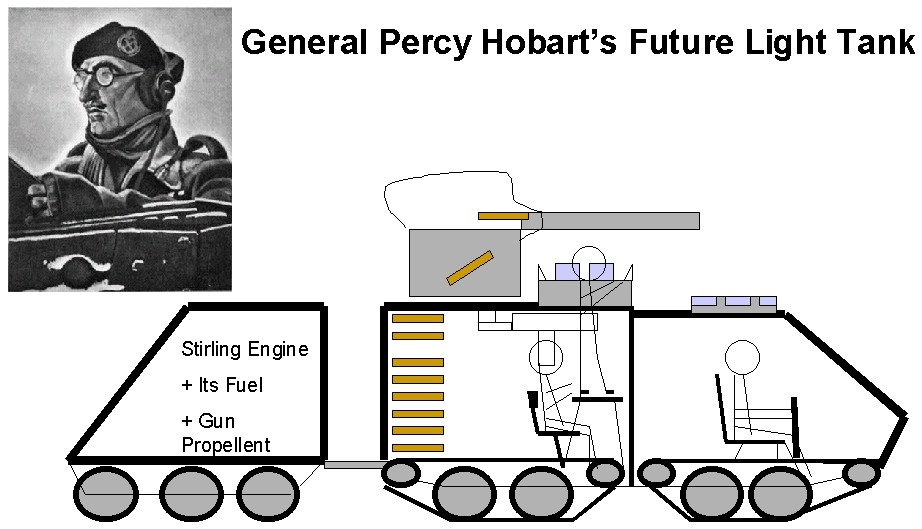
It is important that the world's greatest tank innovator, Major General Percy Hobart's last tank be examined in DETAIL. Here shown for the first time to the world is the LIGHT tank Hobart and his men concluded necessary. It looks like.....
A M113 Gavin!...with possibly a rear car like a Bv206....
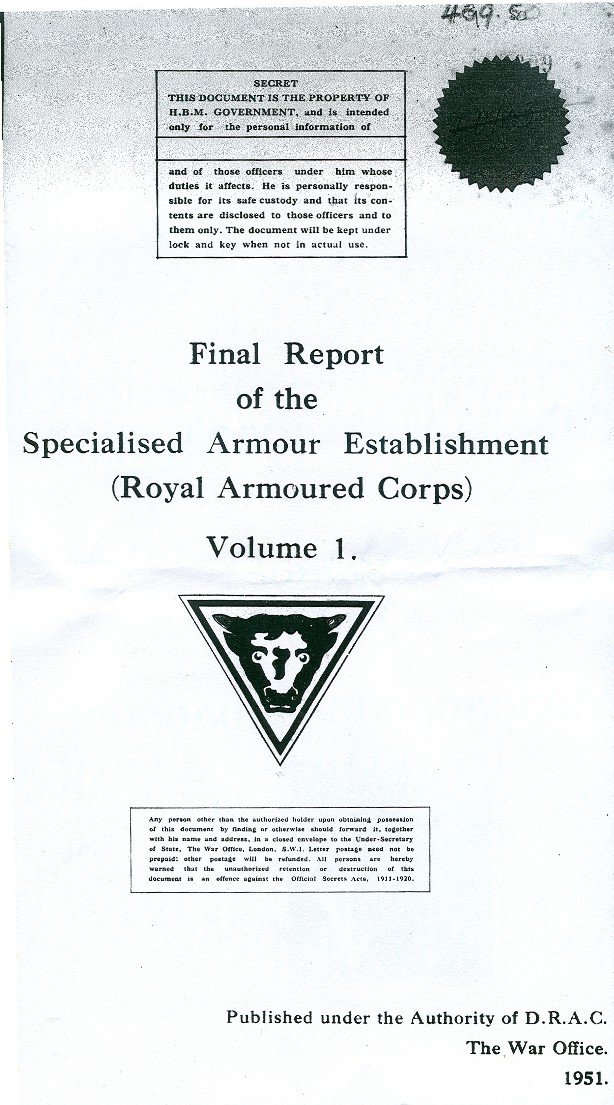
Serial 89
Task NO. 11 (UNORTHODOX TANK)
REQUIREMENT
1. It is apparent that further development of armoured fighting vehicles, if continued on present orthodox lines, will impose unacceptable restrictions on fire power and will reduce tactical and strategic mobility to a dangerously low level.
2. It was decided therefore to examine the possibility of designing an A.F.V. which, whilst providing better armour protection and a reduction in size, would still fulfil the present specification.
DESCRIPTION
3. As a result of the various considerations which are discussed at length in the Final Report (Volume II, Report No. 65), the conception was formed of a tank consisting of three separate and distinct compartments for the crew, the armament and the engine.
4. The crew of three are housed in a heavily armoured compartment where all sighting, firing, direction keeping, navigation and telecom instruments are ready hand, easily maintained and replaced. In the closed down state the compartment might be heat and sound controlled and thus provide collective protection against and bacteriological attack; it would also divorce the crew from fire risks.
5. The greatest economy in space and weight is obtained by getting rid of the orthodox turret and housing a solid gun in a mounting. The gun is therefore mounted in the separate armament compartment, is remotely controlled and would be loaded by fully automatic means; this automatic loading would of course only be possible by the employment of the solid type of gun, using bi-fuels as propellant and thus dispensing with the cartridge case.
6. The prime mover envisaged is an engine on the Stirling (or Philips) principle which, besides other attractive characteristics, offers the advantage of a smaller shorter engine with few auxiliaries.
7. The complete vehicle would be built up from the three sections, each portable on its own suspension.
RESULTS
8. The situation on the 1st June, 1950, on the disbandment of S.A.E. was as follows:-
(a) Layout of the crew compartment had been finalised.
(b) Design of the optical system for the crew and armament compartments had been completed.
(c) Design of the electrical fire control system had been completed. This equipment, and the optical components, were under production at Messrs. Barr & Stroud of Glasgow.
(d) The hull wooden mockup, with range finder and vision device mockups, had been completed. This formed the design basis for the steel frame (nearing completion) which was to be fitted into a gutted Challenger chassis for field trials.
9. The project was handed over to F.V.D.E. on 1st June, 1950.
REPORT
10. See Vol. II Report No. 65.
-168-
Serial 87
PHILIPS (STIRLING) ENGINE
ORIGIN
1.
(a) A long-standing requirement for AFVs and other WD vehicles is a prime mover better than the conventional IC and CI engines. The improvements required are better torque-speed characteristics (particularly at low r.p.m.), higher power-weight ratio, higher overall efficiency, simpler construction and maintenance, silence, ability to use lower grade fuel, easier starting, immunity to extremes of ambient temperature, and long life.(b) During World War II, PHILIPS of EINDOVEN (Holland) revived the closed cycle hot-air engine originally invented by Dr. STIRLING early in the 19th Century. The PHILIPS engines, though small, were very quiet and made good use of the high theoretical efficiency of the closed-cycle; this type of engine has a speed-torque characteristic similar to that of a series electric motor. These qualities make it attractive for use in WD vehicles.
DESCRIPTION
2. The engines built in the 19th century did not realise the high potential efficiency of the closed-cycle. The great superiority of the PHILIPS engines is due to their highly efficient heat regenerator, which is essential to true isothermal expansion.
3. Because of the promise shown by these engines SAE took an early interest in their development and progress has been continually watched with the object of trying them eventually as prime movers for AFVs.
4.
(a) In this country SRDE are in close liaison with PHILIPS and are experimenting in the building of small engines of about 1/5 BHP for 150 watt charging sets. Their main object is to keep their engineers in touch with problems and techniques.(b) PHILIPS are experimenting with engines of larger sizes. They have built a 325 HP 4-cyl 1500 r.p.m. version, which, however, is presenting development problems about which they are somewhat reticent. The larger sizes promise to show the following advantages over conventional 10 and 01 engines:-
(i) "Series" torque-speed characteristic.
(ii) Low weight.
(iii) Simple construction giving easy maintenance.
(iv) Silence.
(v) Ability to use low-grade fuels.
(vi) High efficiency.
CONCLUSIONS
5. The factor in 4(b)(i) above should make it possible to eliminate the conventional gearbox. PHILIPS have always stated that very low grade fuels can be used. Although in practice this is NOT true of the small engines, on account of the small burners necessary in the external heaters, it should apply to the larger sizes. The high efficiency is very important, as it offers chance of much bigger operating ranges for AFVs.
-163-
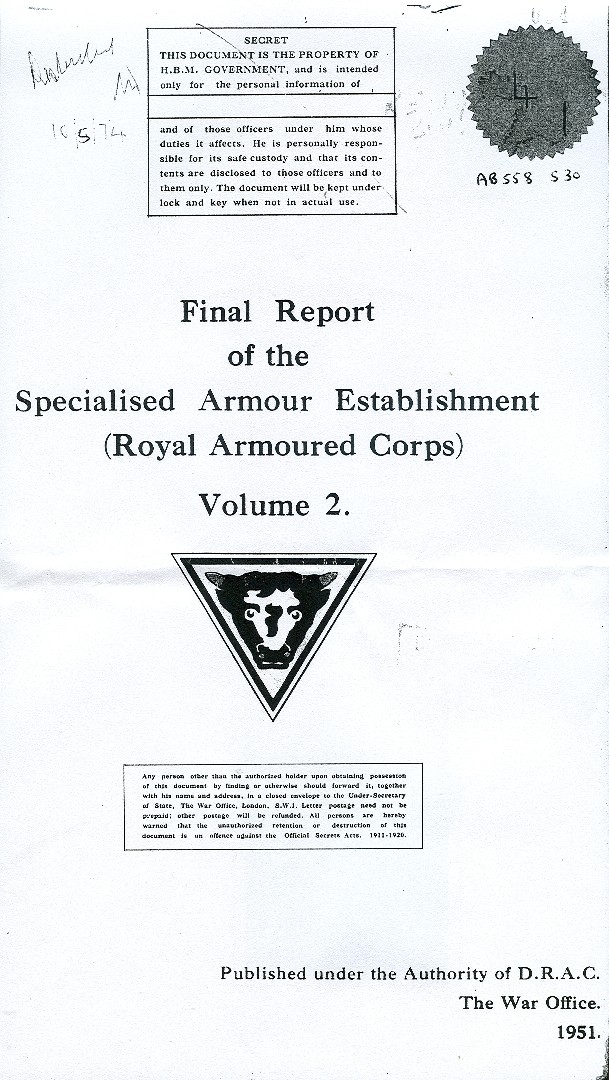
Report No. 65
S.A.E., R.A.C., FINAL REPORT
ON TASK NO. 11
REQUIREMENT
1. It is apparent that further development of armoured fighting vehicles, if continued on present orthodox lines, will impose unacceptable restrictions on fire power and reduce tactical and strategic mobility to a dangerously low level.
2. The great size and weight of these vehicles and their complexity in may well produce a crippling load on available industrial resources.
3. The enormous demand for skilled labour in production of such massive and complicated equipment may absorb a disproportionate amount of man hours for this task, leaving an inadequate force of skilled. labour available to the Army for maintenance and repair. in the field.
4. The original specification given in War Office Policy Statement No. 1 was in its essential points by FV 201, but only at a weight of 55 - 60 tons and a width of 13ft. The transportation of vehicles of this weight and size present:
great difficulties in that not all ships are constructed to lift such weights, and transporters for land movement have to be so large as to cause traffic difficulties. In addition, such vehicles aggravate the military field bridging problems and the width may severely hamper the tactical movement of armies in the field.
5. If components such as armour, armament and power plants, in their present stage of development are utilized, there would appear to be only two possible methods by which an A.F.V., which is an advance on present tanks, could be produced, viz:-
(a) The addition of armour to provide better protection.
(b) A reduction in size whilst retaining the present specification.
6. The F. V. 201 Series gun tank is now in the region of 55 tons in weight. Any appreciable increase in weight to give thicker armour would lead to all the well known troubles associated with overloading.
7. The second method would be to reduce the size whilst still retaining the armament and armour thickness. A worthwhile reduction in size can only be obtained by reducing the size of the fighting compartment which would mean less ammunition and a more cramped fighting chamber.
The number of rounds at present carried is considered to be a minimum and space available for loading and fighting cannot be reduced to any worth-while extent without seriously affecting the fighting efficiency.
8. It is therefore clear that unless some fundamental advance is made in either armour of less specific weight, or armament of less bulk, or power plants with greater power/weight ratio, we are unlikely to achieve an A.F.V. which is superior to the present series.
9. Any big improvement in performance, therefore, can only be achieved by breaking away from existing ideas and practice.
OBJECT
1C. To investigate a new approach to the problem of tank design.
-400-
DISCUSSION OF THE PROBLEMS INVOLVED
11. Main Factors
The three main factors have been placed in the following order of importance:
(a) Armament.
(b) Mobility.
(c) Armour.
12. Armament
For A.P. fire the gun should be capable of defeating 12 inches of armour at 2,000 yards but 1,500 might be acceptable, For H.E. the filling should constitute a substantial increase in payload, about 25% of the weight of the shell or better.
13. The rate of fire, single aimed shot, should be not less than 8 rounds per minute and this rate should include time for selection, loading and firing.
14. The importance of the development of a specially designed tank main armament cannot be over emphasized. To demonstrate the type of weapon required S.A.E. made and fired some 80 rounds of 4.5 inches Schulman A.P. and H.E. shells from a Mk.II 4.5 inches How. This invention of Dr. J. Schulman of Cambridge University was selected for the following reasons:-
(a) The shell is unrotated, turbulence stabilized and therefore provides an ideal application to obtain 100% efficiency from a hollow charge filling.
(b) It is a lightly stressed thin walled shell and provides a maximum diameter 'd' of hollow charge cone, in this case 4in.
(c) From empirical results it would appear that a factor 'K' = .3 can be employed for armour thickness penetrated by this shell or a total of 12 inches in this case.
(d) From a very short shot travel (the 4.5in. How provided only 52.8in.) it is claimed that zero 'yaw' at ejection could be achieved; if so a rocket boost could be applied at the muzzle with maximum efficiency.
(e) A muzzle velocity of 1 ,000 ft. per sec was obtained from 14 ozs of WM 017 Cordite giving 10 tons chamber pressure. Using a propellant giving a flat pressure time curve and a longer shot travel it should be possible to obtain a much higher M. V. without exceeding the comparatively low chamber pressure of 10 tons. By using a tail rocket boost a peak velocity of 2,500 ft. per see might be obtained.
(f) A solid, balanced, light, short, easily manipulated smooth bore, dual purpose weapon can be developed on this Schulman principle. A final solution may be obtained by a combination of Schulman and Plastic or squash head for which this type of round is particularly well suited.
(g) By the increased internal ballistic efficiency of this method problems of obscuration can be greatly reduced.
15. As the Schulman projectile has not been tried out at M.V's above 1,000ft/sec basic data of its behavior at supersonic speeds has not yet been established.
Its stability depends on the relation between the diameter, length, density and velocity; as theoretically the Schulman has no yaw at ejection., it could therefore be boosted, but this has still to be proved under controlled firing trials.
16. Economy in space is of paramount importance in limited weight. The biggest offender against this economy is the ordinary cartridge case where only one sixth of the volume is occupied by cordite, and the size of their cases is increasing at an alarming rate with each increase in size of gun. It is for this reason that a liquid propellant offers such advantages.
-401-
17. Much work is now being done on the development of liquid bi-fuels; oxidants are:-
(a) Liquid oxygen.
(b) Nitric acid.
(c) Hydrogen peroxide.
Kerosene is the most popular fuel and in each case represents some 5% of the total volume employed. With the employment of bi-fuels a flat pressure/time curve, can be obtained and thereby a great saving of space can be achieved.
18. It is not claimed that the Schulman projectile is the only answer but it is maintained that some similar solution of attack of armour by chemical energy will be found provided the time and money is spent on development.
Mobility
19. Although placed second in importance to armament considerable advances are required in:-
(a) Speed - 40 miles in 2 hours, mixed going.
(b) Fuel range - 200 miles.
(c) Ground pressure - 8 lbs per sq. in.
20. The normal driving clutch and gearbox should be eliminated by the employment a prime mover giving a much wider torque speed range. A specification of 50 lbs ft. of crankshaft torque per ton weight of vehicle is called for, and a torque characteristic similar to a series wound electric motor is required.
The Prime Mover
21. When fully developed an engine on the Stirling principle appears to give characteristics called for in the specification of mobility. This selection made for the following reasons:-
(a) Highest possible efficiency; 40% overall and 62% thermal have been obtained.
(b) High m.p.d. - 220 lbs per sq. in.
(c) Highest power content - 40 B.H.P. per litre.
(d) High torque over wide speed band - equal to that of a series wound electric motor.
(e) High calorific efficiency - a wide range of low grade fuels
(f) Low fuel consumption. A heat regenerator efficiency of 95% and a fuel consumption of 0.2 lbs per B.H,P. hour can be obtained.
(g) Long life - small engines of the Stirling type have been run for 3,000 hours with no appreciable sign of wear,
(h) Simplicity and few working parts - there are no bouncing poppet valves, no carburetor and no ignition system.
(i) The engine is reversible,
(j) To obtain high thermal efficiency its fuel combustion chambers must be near to each other. This and the fact that fewer cylinders are needed' should result in a short engine - a highly desirable feature in A.F.Vs.
-402-
22. It seems highly desirable that some better prime mover be found which will give the torque and fuel economy characteristics required for tank propulsion; the Stirling engine is the only principle, as far as is known, which is sufficiently far advanced to be worth development at present.
Armour
23. (a) Within the frontal 60 degree arc. The equivalent of 6in. or better.
(b) Roof and upper plates. Proof against 5.5in. HE direct acting impact fuze.
(c) Floor plates. Proof against 25lbs mine.
24. Armour, placed in order of priority after Armament and Mobility, was not given further detailed consideration at this stage as the allowable weight was so dependent on the tentative and unproved components of the other two factors.
THE FINAL CONCEPTION
25. As a result of the various considerations discussed above the conception was formed of a tank consisting of three separate and distinct compartments for the crew, the armament and engine.
26. Greater efficiency can be obtained by having the crew of three in a separate compartment where all sighting, firing, direction keeping, navigation and telecom instruments are ready to hand, well protected and easily maintained and replaced. In the closed down state the compartment might be heat and sound controlled and thus provide collective protection against gas and bacteriological attack; it would also divorce the crew from ammunition and fire risk.
27. The greatest economy in space and weight is obtained by getting rid of the orthodox turret and housing a solid gun in a mounting. With the gun in a separate compartment, remotely controlled, it would be essential to provide fully automatic loading; this would of course only be possible by the employment of a gun of the solid type using by-fuels as propellant and thus dispensing with the cartridge case.
28. The prime mover envisaged, besides the attractive characteristics detailed previously, offers the advantage of a smaller shorter engine with few auxiliaries.
Composite Construction
29. The vehicle would be built up from three sections each portable in its own suspension. Pending present investigation of the optical layout - no detail work or thought has been given to suspension.
30. Theoretical weights are as follows:-
(a) The fighting compartment - 14 tons.
(b) The magazine loader and mounting - 6 tons.
(c) Engine compartment - 18 tons.
31. The advantages of this construction are:-
(a) Ease of manufacture enabling large quantities of each section to be farmed out to comparatively small concerns who would not have floor space to undertake the production of the whole vehicle.
(b) Modifications and changes in design during production of anyone section need not hold up the output of other sections.
(c) For build-up supply, sections might be knocked down and flown in, a scheme which would not be possible in dealing with the complete vehicles.
(d) The complete vehicle is transportable by rail, but in sections ordinary road transport could be used and any ship's derricks could handle the smaller loads as ordinary merchandice.
-403-
(e) Composite construction would speed up field repair by offering the possibility of a field build up from cannibalized sections.
(f) Evacuation to base for repair need only concern the actual sections requiring 4th line attention. The remainder can be retained in the forward area awaiting new or repaired sections.
PRACTICAL IMPLEMENTATION OF THE DECISIONS REACHED ABOVE
The Immediate Object
32. To produce a working mockup which will enable the principle of indirect vision coupled with remote control of the main armament to be demonstrated to the user so that it can be ascertained whether the principle for such a design is acceptable the user or not. .
The General Design
33. Certain limitations were imposed on the practical application of the general design, by lack of adequate workshop facilities, personnel and finance, with the result that the design details had to be built up on certain existing components obtained through official channels. These major components were:-
(a) Challenger chassis into which the crew and armament compartments were to be built.
(b) Bofors 40mm elevating gear with 'B' type oil unit for control.
(c) Stuart turret ring for main armament turret.
(d) R.A.F. rear gunners turret ring for Commander's cupola.
Referring to the 3 compartments into which the tank is divided viz:-
The Crew Compartment.
The Armament Compartment.
The Engine Compartment.
34. For the purpose of this study, using the Challenger Chassis, the engine compartment was ignored and all design effort was concentrated on the Crew and Armament Compartments. Again as the automatic loader was tied closely to the Schulman projectile I which was still in the experimental stage, it was decided that, to fulfil the immediate object, only the fire control and optical gear should be - produced for the armament compartment; this would enable the user to formulate opinion on the lines laid down in para.32 above.
DETAILS OF THE DESIGN
Commander
35. The Commander is seated on the near side of the hull and is provided with a rotating vision cupola.
36. In the cupola are mounted seven wide angle episcopes, each episcope giving a total horizontal field of 900 and a total vertical field of 4-4-0; these figures nearly double those obtainable with the present type of episcope. The actual instruments to be used are the American M13B1 plastic periscope with glass faced entrance and en t windows.
37. Also mounted in the cupola is a 50 cm stereo rangefinder complete with two:
2in. magslip transmitters (angle of sight and tangent elevation) which are connected to the main fire control system. To the immediate right of the Commander is the' eye-piece unit for the 41 basic range finder and on it, for use by the Commander's an eye-piece to enable him to take range through this rangefinder.
-404--
38. The 4' range finder can also be used as an observation instrument. For this reason the field has been split so that the inverted portion accounts for only 3/8ths and the remaining 5/8ths of the field is upright.
39. The Commander's seat is adjustable for three positions - down; when using the main R/F eye-piece; normal when observing through the episcopes or when using his stereo R/F; up, when observing with head out of the open hatch.
40. The escape hatch is located, as normally, in thereof of the cupola.
41. The cupola is power operated and, in addition, there is an overriding control to enable the Commander to take control of the gun turret in azimuth and the main armament in elevation.
Gunner
42. The Gunner is seated on the offside of the hull, facing across and towards the Commander.
43. Three episcopes in an arc are fitted in the hull roof to enable him to observe over a wide frontal arc.
44. Facing him, as he sits sideways, is the eye-piece unit of the main rangefinder with two eye-pieces, the right for taking range and the left in which he sees the actual range taken. Again, as in the case of the Commander, the gunner can use 5/8ths of the range finder field for observation purposes.
45. The Gunner's electrical controls enable him to control the gun turret in azimuth and to lay the main armament by means of the graticule provided in the rangefinder field.
46. A warning light tells the gunner when the commander has assumed overriding control and an escape-hatch is fitted in the hull roof immediately above him.
Driver
47. The driver is situated forward of the gunner in the right hand side of the hull. He is provided with a battery of five episcopes giving 180 degree field of view. This is considered essential if he is to operate a flame gun, which seems the most likely arrangement.
Gun Turret
48. The main armament represented in the mock-up is a short large recoilless gun of the Schulman type using bi-fuels as a propellant.
49. Immediately above the gun, mounted in the turret roof is a 4' base coincidence rangefinder. From this rangefinder an optical link leads down to the centre of rotation of the turret to an optical hinge whence, through a half-speed erecting prism, light is transmitted to the control box in the crew compartment and via the eye-pieces to the commander or gunner.
50. An alternative Mk.II turret has been designed to cater for a .30 Browning MG mounted on the right hand side of the main armament.
51. In order to demonstrate the equipment to the users the Browning MG can be fired from the mock-up turret using the whole of the f.c. system. In addition, to demonstrate the effect of A.P. fire, it was intended that a tank mounting a 75 mm gun could be placed alongside the Challenger and the gun fired from information obtained from the Challenger f.c. system. In order, therefore, to have the ballistics of the M.G. and the tank gun as similar as possible, the 75mm gun was selected and it is the ballistics of the A.P.C. M.61 (M.V. 2030ft/sec) ammunition which have been incorporated in the range finder conversion gears.
The Fire Control System
52. The f.c. system is designed to operate on 50 v 50 cycles with the exception of the three servo amplifiers, power pack and elevating oil motor which operate a 130 v 50 cycle, and traversing gears operating on 24 v D.C.
-405-
53. The f.c. system may be considered as consisting of the following:-
(a) Commander's stereo range finder with two built in magslip transmitters.
(b) Main 4' base coincidence rangefinder with electrical T.E. wide-out gear
(c) The control which mounts the angle of sight and range heads for the
R/F and the eye-pieces, and which houses the magslip transmission and mechanical gearing to drive the main rangefinder and main armament, and operate the half speed erecting prism.
(d) The three amplifiers and power pack are located in any convenient in the hull
(e) The elevation B type Bofors oil unit, operated by the electrical transmission, for elevating the gun.
(f) The traverse control gear which, for the purpose of this study, was consist of an electrical motor for the commander's cupola and the Churchill traverse gear for the gun turret.
54. Assuming the gunner in control of the gun turret, the commander, on sighting a target, rotates his cupola and lays the stereo rangefinder on it by means of the angle of sight head; he then takes the range by operating the range head. On switching over to overriding control the two magslips in the range finder transmit the angle of sight and tangent elevation via amplifiers to the control box where the total value (QE) is fed out to the main rangefinder and the gun; the wipe out gear now comes into operation and subtracts T.E. from the total angular movement of range finder O.G's leaving angle of sight on the range finder and Q.E. on the gun.
55. Simultaneously, the gun turret traverse gear has been set in motion turret aligns itself on the same bearing as the commander's cupola.
56. The commander should now be able to look through his Control Box eye-piece and see the target in the field of the main range finder. If he wishes, he can now take a more accurate range with the larger base range finder or can indicate the target to the gunner so that the later can take the range and/or carry on firing.
57. Operation by the gunner is normal by means of the angle of sight and range heads on the control box. Having taken-a cut, with the main rangefinder to determine range to the target, the point of aim must then be shifted down to the aiming mark (interrupted cross) which is positioned just below the centre of the field.
58. Messrs Barr and Stroud of GLASGOW are the contractors for the items (a) to (d) listed above, though the sub-contractors for the electrical transmission gear are Messrs Muirhead of BECKENHAM, with whom direct contact has been maintained.
SITUATION, 1ST MAY, 1950
59. The wooden mock-up with range finder and vision device mock-ups has been completed.
60. The steel frame, to be fitted into the Challenger chassis, has also been completed and requires only minor dimensional alterations to make it identical the wooden frame of the mock-up.
61. The Challenger has been gutted as regards the turret and its associated equipment and has been fitted with a platform at the rear to take a 2.5 K.V.A.
13CV 50 C/S generator as the power supply for the fire control gear.
62. Work at Messrs Barr and Stroud is much behind schedule. The commander's stereo rangefinder is nearing completion; all the mechanical and optical parts have been manufactured and assembly will commence shortly. All detailed drawings of the range finder have not yet been completed and, though some work has been done on mechanical components, no optical parts have yet been produced.
-406-
63. None of the electrical gear has yet been delivered to Barr and Stroud by Muirheads but could be made available at short notice.
64. This project is being handed over to F.V.D.E. with effect from 1st June, 1950.
APPENDICES
(a) Appendix 'A' - Photographs.
(b) Appendix 'B' - Rangefinder Data.
(c) Appendix 'C' - List of Drawings handed over to Chief Engineer, F.V.D.E.
ENCLOSURES
Drawings listed in Appendix 'C' - to F.V.D.E. only.
APPENDIX 'A' TO S.A.E. REPORT ON TASK 11
THE WOODEN MOOKUP
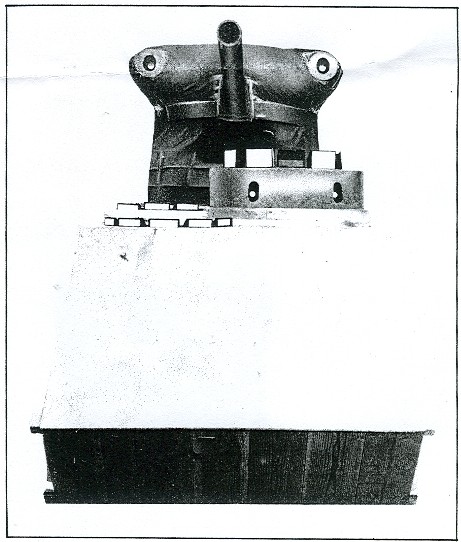
-407-
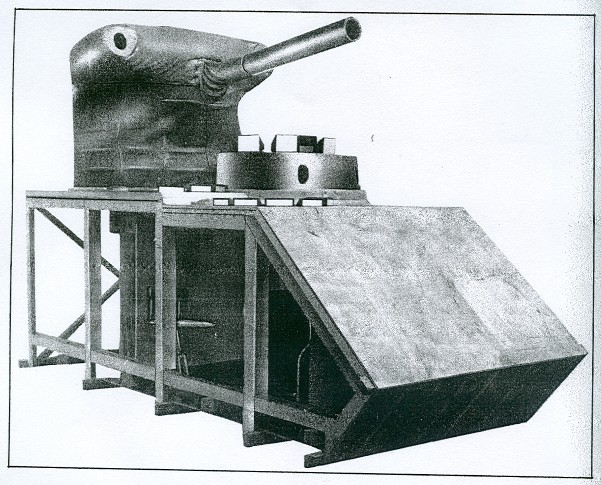
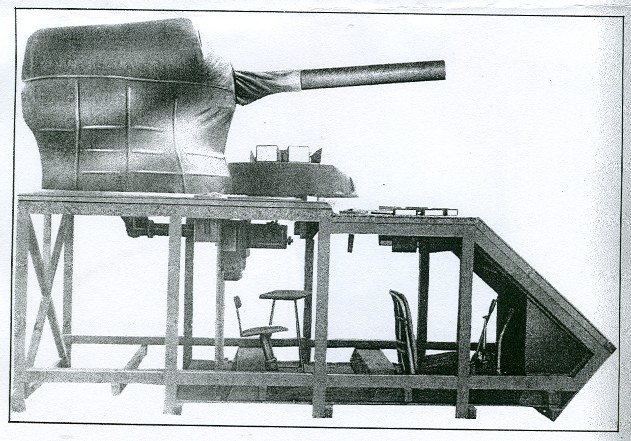
-408-
SECRET
APPENDIX 'B'
TO S.A.E. REPORT
TASK 11
RANGEFINDER DATA
Commanders Gun Turret Rangefinder
Type Stereoscopic with wandermark Coincidence
Base 50 cm 4 feet
Magnification X8 or X3 X8
Exit Pupil 4 mm 4.5 mm
Angular Field 5o 30' for X8 4° 30'
140 40' for X3
Elevation +150 to - 150
Type of Field Upper Inverted
Upper Field - 3/8
Lower Field - 5/8
Conversion for Tangent Elevation
300yds to 5000 yds 300yds to 5000 yds
Range Scale
300yds to 80OO yds 300yds to 80OO yds
APPENDIX 'C' TO S.A.E. REPORT ON
TASK 11
The following is a list of drawings which have been transferred to Chief Engineer1 F.V.D.E.
_______________________________________________________________________
Drawing No. Detail
SK 51, 52, and 53 General Arrangements
Barr & Stroud No. 17522 Sheets 1 & 2 Commander's Stereo R/F
Barr & Stroud No. 1754-3 4' Barr R/F - G.A.
Barr & Stroud No. 17596 Diagrammatic Arrangement of Electrical System
Barr & Stroud No. 17663 4' Barr R/F Sketch of Optical Parts
Muirhead Diagram of Wiring for Magslip Elements etc.
S.A.E. R.E.M.E. Workshops No. 25 & T.D. 25 Graticules 4-' & 50 cm base R/Fs
S.A.E. R.E.M.E. Workshops T.D. 56 Armament Remote Control
C.I.A. (FC) 14-49 & 1450 Wiring Diagram 40 mm Bofors
www.historyofwar.org/articles/weapons_centurion.html
http://convert.french-property.co.uk/
0.95 kg = 2.09 pounds
51, 820 kg = 114, 243 pounds = 57 tons = Centurion is heavy tank
www.israeli-weapons.com/weapons/vehicles/tanks/shot/Shot.html
www.diggerhistory.info/pages-armour/allied/centurion.htm
UK specialist Centurion variants
FV4003 Centurion Mk 5 AVRE 165 (1963) - AVRE (Armoured Vehicle Royal Engineers) vehicle with 165 mm demolition gun and a hydraulically-operated dozer blade. Can carry a fascine bundle or a roll of metal Class 60 Trackway; and tow the Giant Viper mine-clearance equipment. The vehicle was used in the Gulf War (1991).
Centurion Mk 5 AVRE 105 - Ex-Forward Artillery Observer vehicles converted to AVRE role.
FV4019 Centurion Mk 5 Bulldozer (1961) - Centurion Mk V with a dozer blade identical to that of the Centurion AVRE. One such tank was usually given to every Centurion-equipped squadron.
FV4016 Centurion ARK (1963) - Armoured Ramp Carrier. Can span a gap of up to 75 feet, can bear up to 80 tons.
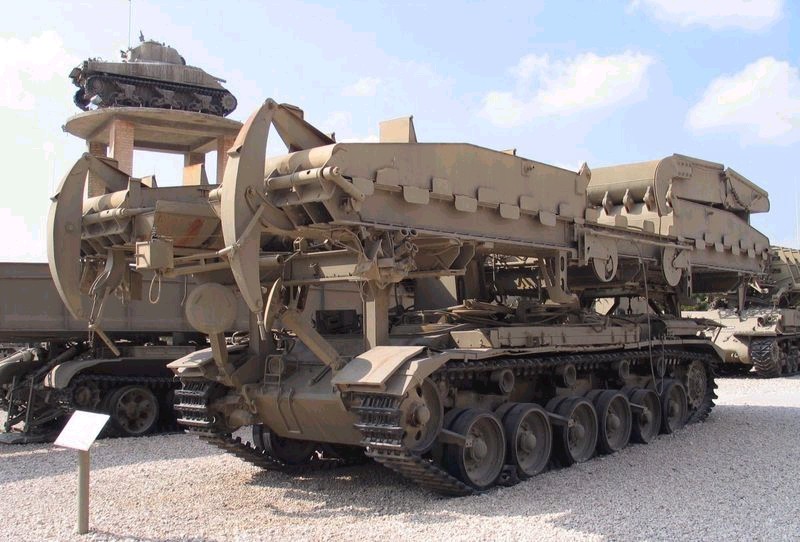
FV4002 Centurion Mk 5 Bridgelayer (1963) - Mk 5 chassis with a No. 5 Tank Bridge. The bridge can be launched in less then two minutes, can span a gap of 45 feet and can bear up to 80 tons.
The Swedish BroBandVagn 971
This T-55 medium tank made into a funny combat engineer tank uses the vertical scissors bridge type of the original Hobart versions.
 www.youtube.com/watch?v=UR_FOmmAo7Q
www.youtube.com/watch?v=UR_FOmmAo7Q
FV4013 Centurion ARV Mk 1 (1952) - Based on Mk 1 / Mk 2 hull. Turret replaced by a superstructure housing a winch driven by a 72 hp Bedford QL truck engine. About 180 units were built, some of them were used in the Korean War. After 1959 were used as training vehicles only.

FV4006 Centurion ARV Mk 2 (1956) - Mk 1 / Mk 2 / Mk 3 hull with turret replaced by a superstructure housing a winch. The winch is powered by an auxiliary engine and is capable of pulling of up to 90 tons using a system of blocks. Armed with single .30 inch medium machine gun on the commander's cupola.
FV4018 Centurion BARV (1963) - Beach armoured recovery vehicle. The last Centurion variant to be used by the British Army. As of 2003, one vehicle was still in use by the Royal Marines. Now being replaced by the Hippo based on Leopard 1 chassis.
What is really galling is that the braggadocio USMC doesn't even have any tracked armored vehicles like the BARV, its as if they are not going to suffer any mechanical break-downs on the beach landing site while an enemy is actively firing high explosives everywhere to cause such wreckages. This lack of American marine humility to admit to the fallibility of mechanical things and to respect the enemy shows the USMC is jerking off during their "training" exercises and not PRACTICING FOR WAR. With no one shooting during these scripted fantasies, there seems to be no need for Hobart's Funnies and BARVs because ALL MARINES LEAVE THE BEACH, all survive, all move inland. All BS.
So its now post-WW2, the rifled 105mm gun Centurion doesn't get fielded in time unlike the American M26 Pershing with 90mm heavy tank does. There is indeed a role for a heavy BREAKTHROUGH tank, it should be FAST to able to duel other enemy heavy tanks in the defensive, meaning the Centurion should REPLACE THE CHURCHILL INFANTRY SUPPORT TANK with a better understanding of mechanized infiltration tactics for THAT CATEGORY OF TANK, not to replace ALL TANKS with a tank that is clearly too heavy for exploitation of breakthroughs or be a forward cavalry. Hobart understood this and immediately splices his combat engineer devices to the Centurion tank which proves to be an excellent heavy tank as combats in Korea (1950-1953), North Africa (1956), Vietnam (1965-1973), South Africa (1968-present) and the Middle East (1956-present) show. The success of the Centurion is the source of today's misguided MBT mentalities of tanker individual survival fears against "boogie man" enemy Tiger heavy tanks driving mounted warfare to its current ruin of irrelevance because this plays right into the hands of the WW1-style linear war, foot-slogging, truck-hopping infantry narcissists who contend they should get the job against our real enemies which are mostly infantry in cities and other closed terrains. As the infantry gets itself blown up by land mines afoot and in "death-from-a-truck", the enemy prevails and grows as the majority of our tanks remain parked in motor pools.
However, what an excellent tank force needs is different tank types than just heavy tanks--even as good as the Centurion and its Israeli offspring, the Merkava are. At the very least lighter tanks need to be the forward engineer cavalry for the heavier main body during 2D maneuvers and there needs to be a 3D maneuver force completely in light tanks for a tactical and operational effect cavalry that can defeat foes, seize key and often closed terrains with their own powers. And to their credit, the British have LIGHT TANKS:
LIGHT
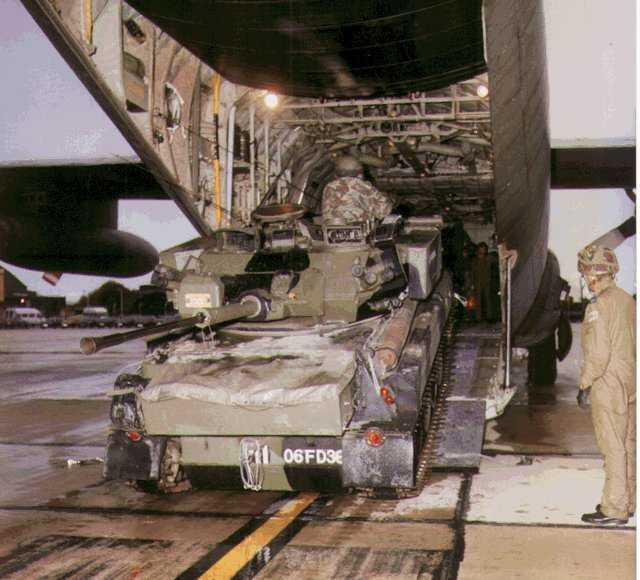
 www.youtube.com/watch?v=_qpN1VECZX4
www.youtube.com/watch?v=_qpN1VECZX4
Scorpion/Scimitar Light Tanks = 3D Cavalry; can fly by C-130 and CH-47 Chinook helicopters, low ground pressure offered critical mobility and fire support in the 1982 Falklands Islands war, forward ground cavalry for 2D maneuver forces in 1991 Desert Storm in Iraq

FV432 Bulldog Armored Personnel Carriers = Could be a part of a Cavalry carrying scouts, up-armored and in use in Iraq
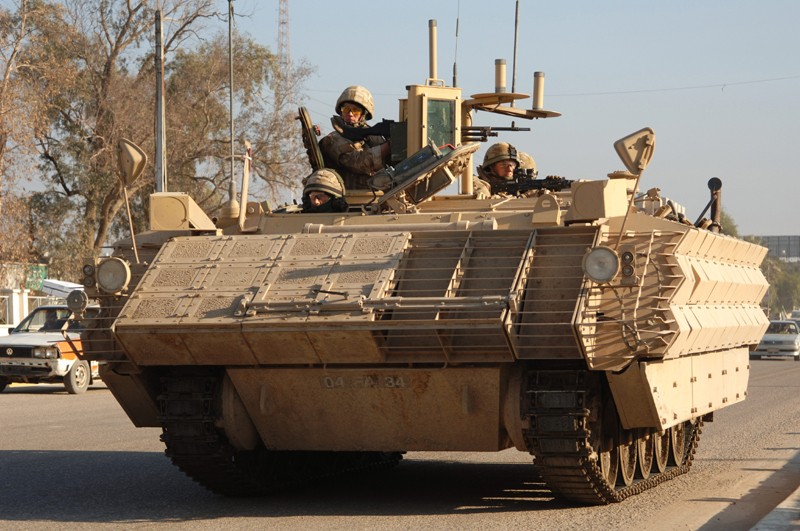
Bv202, BV10S Viking APC = Royal Marines Amphibious Cavalry
MEDIUM

Warrior IFV = 2D maneuver force main body, innovative in that they slap CHOBHAM armor skirts and have a built-in toilet, dismount troops have vision periscopes that swivel 360 degrees
HEAVY
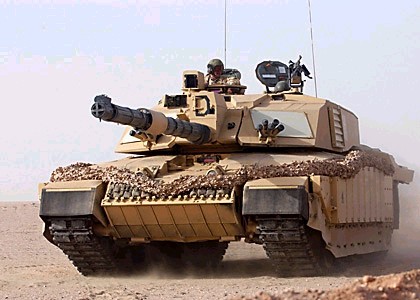
Challenger tanks: = 2D maneuver force descendent of the Centurion
So when you add that British Royal Engineers and Marines still have BARVs and other Hobart's Funnies for mechanical advantage despite their lack of funds, it shows there is absolutely no excuse that rich Americans are so poorly equipped that when the Sava river overflowed in 1995 that we were not ready to swim or fly across when we have thousands of M113 Gavins available to do this. If we needed to get to Pristina airport before the Russians, and needed to FLY over land mines we could have flown by CH-47s like the British did to get into their sector.
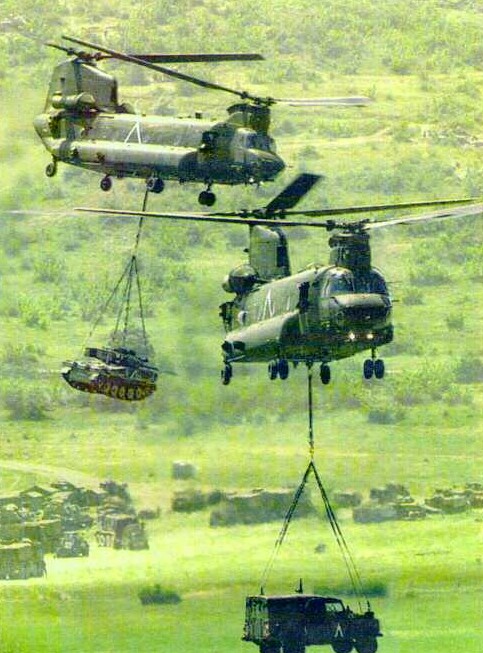
Russian Funnies put us all to shame
One group that has really paid attention to the success of Hobart's Funnies is the RUSSIANS. The Russians have exceeded in some ways, Hobart's force structure in mine-laying and defeat as well as entrenching their infantry mechanically. Their rapid assault river crossing bridging is the world standard as they created the ribbon pontoon bridge section concept. The Russians also have OBSTACLE CLERARANCE tanks with giant arms, something the U.S. military has no counterpart.
www.galope.com/mike/eng1_info.htm
www.galope.com/mike/eng2_info.htm
www.galope.com/mike/eng3_info.htm
Aftermath of WWII: the Cold War of NATO on the defensive
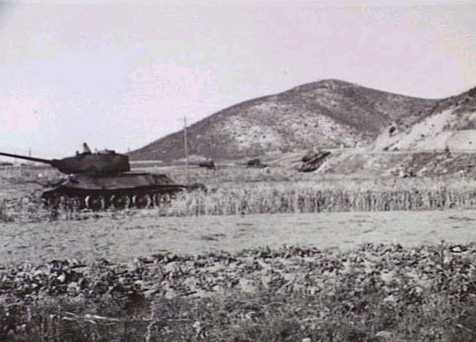
Despite General Hobart's final report, both the American Army and marine corps refused to develop a Combat Engineer tank force AKA an "Engineer Cavalry" to act as spearheads to breakthrough for the main body nor see to it that the main body is fully 2D and 3D maneuver capable. The lack of an effective cavalry was THE chief cause of the debacle in Korea as General Gavin pointed out in his brilliant 1954 Harper's magazine article; "Cavalry sand I Don't Mean Horses". The monolithic, egotistical U.S. military of weak ego-co-dependants wants everyone in the same "Pyramid of Ego" social class structure and can't tolerate a portion of the force that is more mobile than the main body because they would be DIFFERENT and hence "elite"--and make everyone feel bad. So instead, the main body gets lost when routes are not verified (because we have no cavalry) and slams into the enemy (because we have no cavalry) and is forced into decisive engagement as the 3rd Infantry Division's Humvee truck scouts couldn't survive out ahead when they Thunder Runned to take Baghdad in 2003. Fortunately the majority of the 3rd ID is tracked and armored to overcome enemy resistance--in contrast the marines 75% in wheeled trucks were stopped repeatedly by mere Iraqi rear guards with hand weapons and were late reaching Baghdad by 6 days allowing Saddam Hussein and rebel leaders to escape and start a guerrilla war against us that continues to the present day. Our light infantry without M113 Gavins sat on their asses north of Baghdad in WW2-style seize & hold BS when there was plenty of USAF C-17 and C-130 airlift to deliver them enough Gavins to fan out and block Saddam & subordinates' escape routes to Tikrit. They don't want to be cavalry, either. Everyone wants to hide amongst the strength of the main body and the result is we don't get PHYSICAL, positional, situational advantage over enemies who see us coming a long ways off and are long gone by the time we arrive.
During the Cold War, we turned to the east, where facing a massive onslaught of Soviet medium tank armies, the free nations of Europe band together into NATO and completely discard the hard-fought offensive lessons learned of WWII because they would be on the DEFENSE. Like the Germans, outnumbered, they would develop heavy, defensive tanks to duel and overmatch the enemy's medium tanks from at least a platform-versus-platform view. We created our own Panther and Tiger heavy, defensive "main battle tanks" (Leopards, Chieftains, Challengers, M60 Pattons and M1 Abrams) to ward off the enemy's M4 Shermans and T34 medium offensive tanks (T-55s, T-62s and T-72s). We became the German Army of WWII interested in defensive combat. Being able to fly, swim, cross obstacles, mines, strong points would not be vital because we'd be defending our own ground where we want such offensive impediments in place. So a fully capable offensive Combat Engineering tank force was not developed as Hobart would have advised. Major Robert A. Doughty writes in, The Evolution of U.S. Army Tactical Doctrine, 1946-76, Combat Studies Institute U.S. Army Command and General Staff College Fort Leavenworth, Kansas, August 1979:
www-cgsc.army.mil/carl/CSIPUBS/Doughty/doughty.htm
"Rather, they would be used to supplement the medium tank which was viewed as the primary antitank weapon, In contrast to the perceptions of other nations of the world, the United States concluded, in effect, that it could manufacture a tank that could outshoot and outmaneuver other tanks of the world.
Army tactical doctrine for the defense was much more specific than that for the offense, but only one type of defense was considered. Although it had no precise name, this defense was essentially an area defense which resembled J. F. C. Fuller's 'archipelago' defense. The major purpose of the defense was to maintain control of terrain, and the doctrine envisioned the selection and organization of a fighting position which was to be held 'at all costs'. Covering forces were to be placed forward of the main battle position to delay and disorganize the advance of the enemy, as well as to deceive him as to the true location of the battle position.
The main battle position consisted of a 'zone of resistance'25 in which there were a series of occupied defense areas organized for all-around defense. A line along the most advanced defense areas was called the main line of resistance, but the doctrine envisioned a defense in depth rather than a linear concentration of forces along the main line of resistance. Large reserves, especially large armored formations, were retained to relieve units in the main battle position, participate in a counterattack or to occupy a rear position. Relatively immobile infantry-heavy forces in the main battle area, however, were to bear the brunt of the heaviest fighting.
When an enemy attacked, he would initially encounter the covering forces and then enter the main battle area. Here, he would encounter a defense made up of islands of resistance which would canalize the attacker's forces and disorganize the cohesiveness of his attack. If the attack was halted, it would be by defensive forces toward the rear of the main battle area or by counterattack.26
But the objective was to maintain control of terrain, not to destroy the enemy's forces. The defense was considered a method used only to gain time or economize forces in order to permit the development of more favorable circumstances under which the decisive blow would be dealt. Under American doctrine, defeat of the enemy occurred through offensive or counteroffensive action which destroyed the enemy's 'effectiveness' and his 'will to fight.' Attrition was not necessarily a part of destroying the enemy's combat effectiveness, for the ultimate purpose of larger unit operations was destruction of enemy units not Soldiers".
What is tragic is that a few years after WWII, it became clear that freedom in the face of evil cannot be defended just from fortress Europe. Free world forces had to deploy to mountainous Korea and there was no 3D offensive, mechanized cavalry in action to screen ahead of U.S. infantry forces to prevent enemy mechanized breakthroughs like Task Force Smith in 1950 faced. And the reason is because U.S. Army "Armor" branch is a rudderless doctrinal construct without a solid battlefield function to guide it. Immediately after WWII, we began to design heavier and heavier German defensive Tiger-tank clones to ward off Soviet tank armies and forgot about the functional purpose of 2D cavalry which should also be 3D air-transportable despite the Army splintering apart with its Air Corps/Force becoming the "U.S. Air Force" imbued with horrendous ideas that wars can be won by air strike, conventional high-explosives bombing alone, even though it had failed miserably in WWII. The seeds of disaster sown in 1940 by not making Cavalry mechanize with tanks began to bear the bitter fruit almost immediately in WWII and then in Korea. The result was that the Army Air Corps---also another rootless doctrinal construct---spun off onto its own platform and self-centric mentality when it should have been an "Air Cavalry" to the "Ground Cavalry" insuring ground and air vehicles could operate together to create Air-Mechanized 3D maneuver capabilities by airlanding and parachuting.
What's very interesting is that 2D maneuver also suffered from a lack of vigor emanating from a defensive posture in NATO to create a combat engineer tank ethos to have even a specialty force to make breakthroughs if required. The optimal solution---to make tanks of the main body fly and swim, and be mine resistant has been totally ignored. Thus at the end of the 20th century, NATO was saddled with a collapsed Soviet Empire but a dangerous multi-polar world where she must rapidly, offensively deploy land armies to make the world stay at peace but her tanks are too heavy to do this. Liberals like to lambast NATO force structure by calling it "Cold War dinosaurs" in a dishonest attempt to find fault using age chronology when the truth is that what's wrong is that the force is too heavy and DEFENSIVE in its design (its battlefield function/ideas/concepts not its vintage) and the solution is to be OFFENSIVELY designed; an aggressive stance they cannot make themselves come to admit is the solution because they detest wars even when they are jusified to insure national survival. When the U.S. Army in 1995 was tasked to roll into Bosnia to keep the peace, the overflowing Sava river kept her from crossing for days because most of her tanks were too heavy to swim. We have not heeded the wisdom of Hobart to "get the lead out" of the Army and be fully 2D mobile to include swimming.
General Gavin sees the essence and creates the Air/Ground Cavalry force of the future in 1960
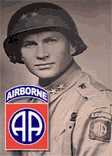
Amazing as Hobart's story of creating a Combat Engineer tank ethos that nominally lives on today in the Royal Engineers as a specialty solution spearhead, there was an amazing man in the U.S. Army who saw the essence of the problem and created a Air/Ground Cavalry tank ethos, his name was General James M. Gavin.
General Gavin, as Army Research and Development Chief started with the 3D Airborne which he admitted was essentially a form of air cavalry---realized we needed an armored personnel carrier that could be parachute airdropped and swim---essentially taking Hobart's tank APC and merging it into his amphibious tank; eliminating truck transporters to move the latter. One armored vehicle that could do it all at a reasonable weight and cost, that vehicle is the M113.
John Wilson writes in Firepower and Maneuver, Chapter 26 "The Army and the New Look"
[www.army.mil/cmh-pg/books/amh/AMH-26.htm]
"To provide the weapons and equipment for the nuclear Army, scientists, engineers, and designers, among others, combined to produce a steady stream of new or improved items. From rifles, mortars, semiautomatic and automatic weapons, and recoilless rifles at the company level to powerful rockets, missiles, and artillery in the support commands, more efficient instruments of war were fashioned to increase the firepower of the combat forces. Whole new families of surface-to-surface and surface-to-air missiles emerged, with both short- and long-range capabilities. With the emphasis on mobility, even the larger and heavier weapons and equipment were designed to be air-transportable.
A program to produce ground and air vehicles with the necessary battlefield mobility led to the development of armored personnel carriers, such as the M113 with aluminum armor, that could move troops rapidly to the scene of operations while providing greater protection for the individual soldier. Since highways and bridges might be damaged or destroyed, dual-capability amphibious vehicles that could travel on rough terrain and swim across rivers and swamps freed the fighting units from total dependence upon roads. Also, transportable bridges and bridge-laying equipment were designed to help speed movement of land-bound vehicles like the new, diesel-powered M60 battle tank that became operational in 1960. The M60 weighed over fifty-two tons, had a cruising range of 300 miles, and mounted a 105-mm. turret gun".
Next, to fire support for the M113 infantry under complete armored protection on a possibly nuclear battlefield, an amphibious floatation screen Armored Reconnaissance Airborne Assault Vehicle (AR/AAV) was created; merging the DD amphibious Sherman tank with a AVRE-type 152mm demolition gun into the M551 Sheridan light infantry fire-support tank. Combined with turboprop C-130 fixed-wing aircraft of the USAF, Gavin had created a 3D capable force that could airland or parachute airdrop anywhere in the world, which the 82nd Airborne would later do in combat in Panama in 1989.
After 1960, the light tracked M113A1s were supplied to the South Vietnamese Army fighting communists in the jungle, and they were soon rumbling freely all over the countryside. Battle experience born at the 3D/2D attack at Ap Bac tweaked the concept to include gunshields to protect the men firing from the M113A1, creating the Armored CAValry (ACAV) M113A1, an extremely powerful "gun-track" that bristled with machine guns, mortars, miniguns, recoilless rifles, mortars, flamethrowers, essentially "Hobart's Funnies" reborn in a ground cavalry form. The first U.S. ACAV unit, the 11th ACR would take this powerful 2D force into the jungles and cities of Vietnam, saving the day on numerous occasions by off-road armored mobility, immense firepower from itself and attached M48 and M551 tanks. Flying overhead, was a 3D "Air Cavalry" of the 1st Cavalry Division in turbine-engined Huey helicopters of a reborn Army Aviation branch; infantry could be landed on foot to hold key terrain, assault the enemy backed by HueyCobra helicopter and OV-1 Mohawk gunships. The U.S. has to date never fielded a more powerful, more mobile 2D/3D Air/Ground Cavalry offensive force combination.
Where are the Engineer Tanks in Today's U.S. Army?
The following videos shows the weak combat engineering means that exists only in U.S. Army Heavy Brigade Combat Teams. It was taken at tree-confined Fort Benning, Georgia where Armor school/center was sent to die by tank-hating former Army Chief of Staff, uber light narcissist Schoomaker. The rare open terrain of this range is used over and over again for live fire exercises and thus scripted and predictable, adding to the half-assed nature that does not realistically challenge troops.
Part 1: no smokescreens though Bradleys and Abrams can lay engine smoke, ostensibly to show the officers in the bleachers what's happening, but WHEN DO WE DO IT RIGHT? Will we know how to do it right when we need to if we never practice it? What about smoke pots?
 www.youtube.com/watch?v=SjOyF0krpF8
www.youtube.com/watch?v=SjOyF0krpF8
Part 2: Combat Engineer M113A3 Gavin light armored tracks with Sappers tow a tracked MICLIC rocket line charge to breach a path in a notional minefield.
 www.youtube.com/watch?v=ORcpsrkGbPQ
www.youtube.com/watch?v=ORcpsrkGbPQ
Part 3: the son-of-Conger rocket-line charge (MICLIC) trailer fires and blasts a narrow lane but is doubtful would be where the AVLB needs the mines cleared. The AVLB drops its scissors bridge without any penalty of landing on land mines so the "dog 'n pony" show continues.
 www.youtube.com/watch?v=oyK9aTH7NLY
www.youtube.com/watch?v=oyK9aTH7NLY
Despite tremendous success in Vietnam, the Air/Ground Cavalry team was not supported by wisely purposed doctrinal branches (No Cavalry Branch, no Sapper tank ethos in Combat Engineers) and was soon pulled apart after the war ended. The 1st Cavalry became a heavy defensive tank unit. Helicopter units became their own branch and "mini-Air Force" with their own agenda to exalt themselves as the sole instrument of decision rather than cooperate as a combined-arms branch player. Thus, to get Air/Ground synergy in the U.S. Army requires a herculean effort because doctrinally the Army's branches are at odds with each other fighting for budget share instead of working together as a team. The Air-Mech-Strike concept (actually light mechanized 3D cavalry by another name) proposed by retired General David Grange's team and many others like Ralph Zumbro, Stan Crist, Mike Robel can fix this by specific force structure using existing M113A3 and M973A2-type equipment beginning with an 2nd Advanced Armored Cavalry Regiment at Fort Polk, Louisiana---covering force for the XVIII Airborne Corps. Air-Mech-Strike using existing equipment is what General Hobart would do if he were in charge today because "wars cannot be waged with dream stuff". Armor branch should be renamed "Cavalry" branch and merged into Aviation Branch to solve this problem once-and-for-all by aligning with enduring battlefield functions.
2007 Army Problem---------------------->Usually No Solution
Need Enabler
Fly-----------> Airborne light units by parachutes/airland
Air Assault light units by fast rope, rappel/airland
Swim-----------> RRDF APS-3 sealift Landing Craft (slow)
Inland Lakes/Rivers
M113A3 AmphiGavin Amphibious Armored Personnel Carriers
M973A1 Amphibious SUSVs
Landmines--------> Flail/Roller medium robot tanks
Rocket line charge trailers
Obstacles
Soft sand-------------------> NO SOLUTION
Ditches----------------------> Heavy tanks with assault bridge spans
Strongpoints------------------------> NO SOLUTION
Automatic weapons fire----------> Light M113A3 and Medium M2 AFVs
High Buildings----------------------> NO SOLUTION
Troops are concerned with elevated threats but can only face in one direction at a time but can only strike if targets are in line-of-sight
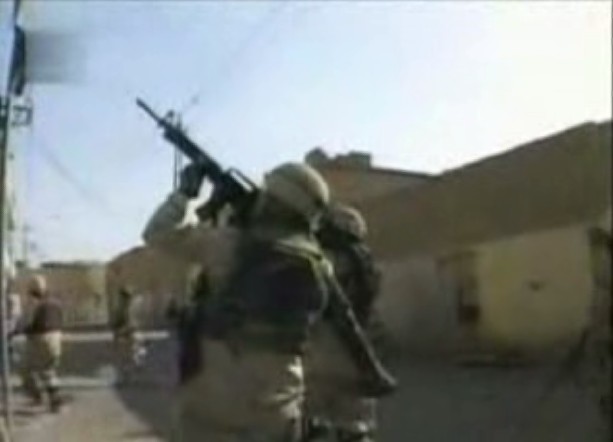
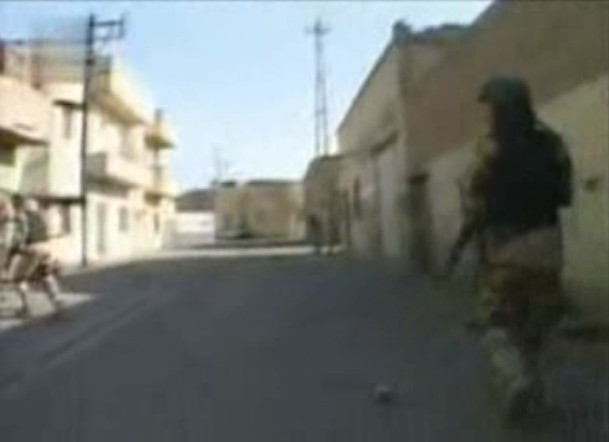
Rooftop threats not in line-of-sight of troops at ground-level
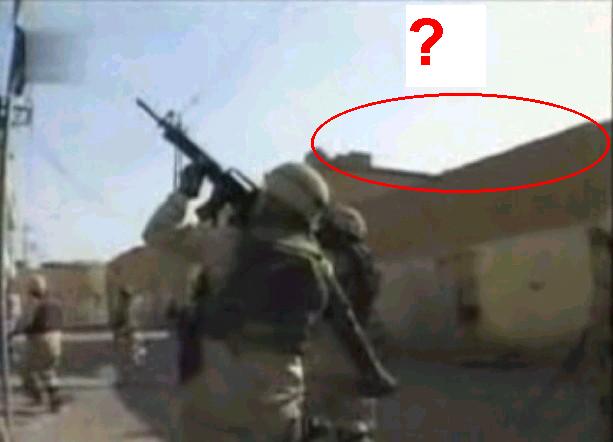
Clear example that no one was covering rooftop across the street

Firefighting--------------------------> NO SOLUTION
Deja Vu 1920/1930s all over again: wrong lessons learned?
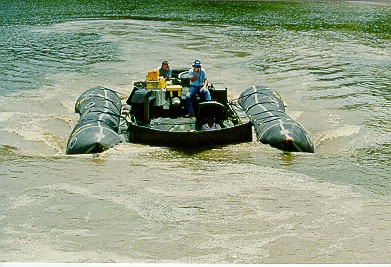
The Duplex Drive (DD) type skirt was the BS paper capability the 1980s Army lied to claim that somehow going to a 25-ton medium weight tank could still do the things the light M113 Gavin tank could do.....these rotted and were prone to holes.
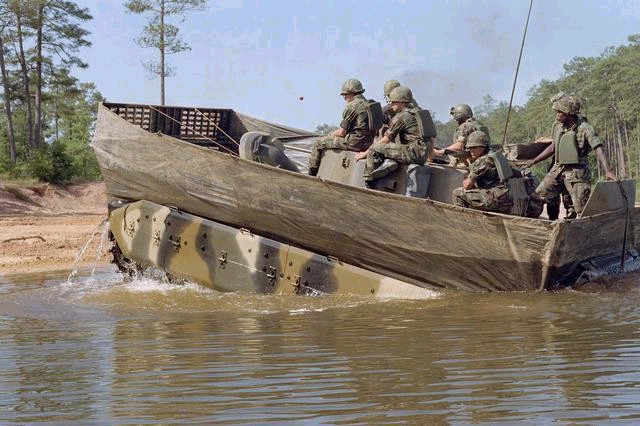
The dense, turreted M551 Sheridan light tank used to be swam with swim skirts by the energetic 3rd Battalion, 73rd Armor at Fort Bragg.
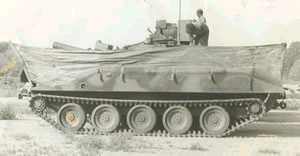
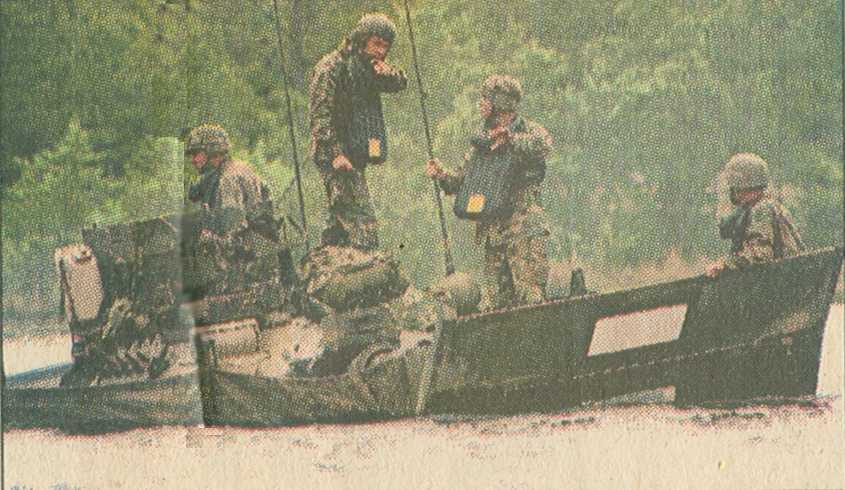
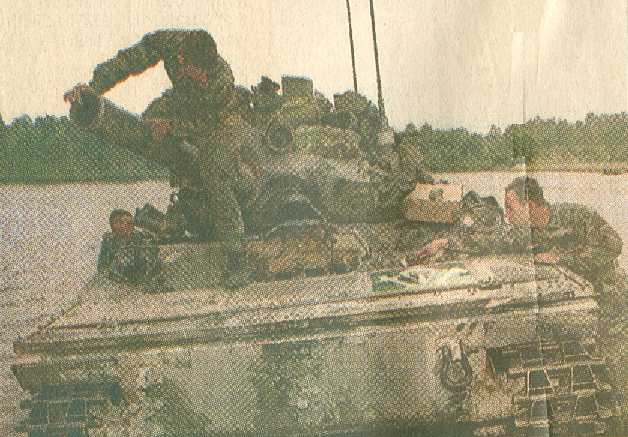
Something had to be done to not yield to the truth and need for M113 Gavin light tanks...so as you can see somebody bright added huge air-inflated pontoons to offer a floating set of crutches for Bradleys to swim. Maybe the non-floating USMC EFV needs the same things? The South Koreans have just fielded a 25-ton, semi-plastic and aluminum alloy armor New Infantry Fighting Vehicle (NIFV) that uses inflatable pontoons under its side-skirts to float.
Of course once the pontoons are blown open.....Ranger Larry Altersitz points out that the pontoons could be covered in ARMORFLATE to at least protect against small caliber bullet deflations....but the Army decided to give up on swimming across lakes/rivers (its job) than to admit its egobiscuit Bradleys can't swim and its humble Gavins can...
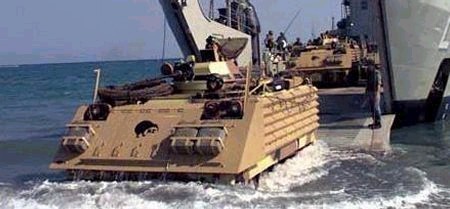
So now wev'e come full-circle; western nations in the same situation as they were in the 1920s/30s; fighting bandits (terrorists) in the third world and smugly thinking all can be made well by mouse-clicking some aircraft "precision" firepower and mopping up with some armored car infantry neither of which can reach cunning enemies hiding in closed terrains, while a major nation state lies in wait to strike (Red China). We are asking for a major disaster on the scale of Dunkirk in 1940 if we think vulnerable rubber-tired armored cars with computers unable to maneuver---will bring us victory against a competent nation state foe with a more physically adapted and mobile tracked combined-arms team with at least parity in electronic situational awareness. You overcome an enemy Surveillance Strike System (SSC) with an overmatching Surveillance-Strike Maneuver Capability (SSMC) using robust, all-terrain mobile tracked AFVs not by throwing rubber-tired, thin-skinned armored cars into the firing grids of the enemy and begging for help over digital radio nets.
Realizing that the tracked tank is both a cavalry weapon and a combat engineer weapon, we must reorganize U.S. Army Combat Engineers into a vigorous force that fully develops the tank into a 21st Century version of "Hobart's Funnies" because we simply do not have any time to waste for a "perfect" solution via a wunder-weapon Future Combat System (FCS). However, Army Combat Engineers are too distracted and diluted by politically-popular-with-naive-American liberals, civil engineering projects to be warfighting killers to win in war that can explode a way through enemy SSCs like Norm Cota's men did on Omaha beach. The world is urbanizing---and as British General Sir Francis Tucker concluded after WWII in a book by the name "The Pattern of War", if armies do not overcome strongpoints with machine siege engines (combat engineer tanks) there will be no decisive maneuver but bloody stalemate; this time not in trenchlines or beach obstacles but in cities. We have already had two nightmares of city fighting that warn us to "get our act together"---Somalia in 1993 and Grozny in 1996. In the former light infantry went in by helicopter without tanks and got hurt, the latter tanks went in without infantry and got hurt. We need to find a leader like a Hobart and put him in charge of an entire Combat Engineer Brigade with the power to fully develop the specialty armor "siege engines" we need to prevail in urban combat.
Therefore, we propose that the 36th Combat Engineers at Fort Benning, Georgia, co-located with the McKenna MOUT site, 75th Ranger Regiment and 3rd Brigade, 3rd Infantry Division be upgraded to a Light Mechanized Sapper Brigade and made into the U.S. Army's premier specialized armor force using the widely available M113A3 vehicle renamed the "Gavin" after its creator.
Even in WW2, Hobart's medium-weight Funnies often got stuck and they fitted combat engineering devices to unarmored Weasels with very wide tracks.

We can achieve this same low ground-pressure effect with M113 Gavins while still having EXCELLENT ARMOR PROTECTION as the M113A3 Super Gavins in Iraq have shown to be the BEST protected vehicles we have there. Another we can do today that Hobart didn't have access to is micro video cameras which could be placed on the arms holding things like fascines so the driver and tank commander can see ahead.
2007 Army Problem----->Light Mechanized Sapper Brigade Solution
Need Enabler
Fly--------------->M113A3 ESV Light Sapper Company (Airborne)
Parachutes/airlands by USAF C-130, C-17s
Fast rope, rappel/airlands by Army CH-47D/Fs
MICLIC/EMSC mine clearing rocket trailers
Sapper LGH, demo, mine probes, detectors
Mine sniffing dogs
Swim----------------->M113A3 Light Sapper Company (Amphibious)
Ocean
Swims to shore via ARIS GATOR modification
RRDF APS-3 sealift Landing Craft (slow)
CH-47D/F helicopter sling-load
Inland Lakes/Rivers
M113A3 AmphiGavin Amphibious Armored Personnel Carriers
M973A2 Amphibious Armored SUSVs
Landmines---------> Deep milling flail M113A3s
M113A3 trailer-deployed flail robots
Rocket line charge trailers
Mine rollers on heavy M1 tanks
Mine plow on heavy M1 tanks
Obstacles
Soft sand------>M113A3 ESV with/dozer blade or Backhoe
Ditches--------->M113A3 ESVs with fascines
Strongpoints--------->M113A3 ESV with TOW ATGM w/ HEP warhead with battering ram
High Buildings------->M113A3 ESV with fireteam hydraulic boom or ladder-guns
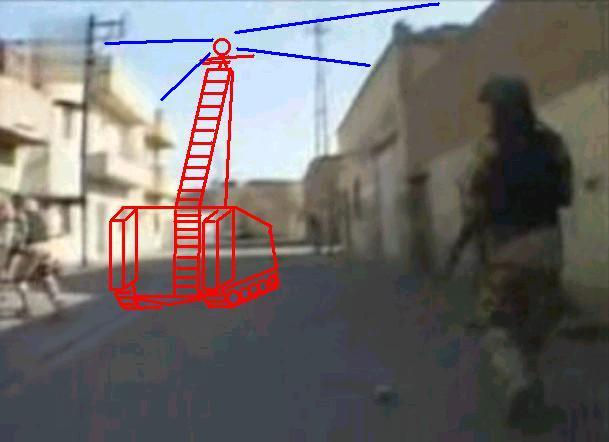
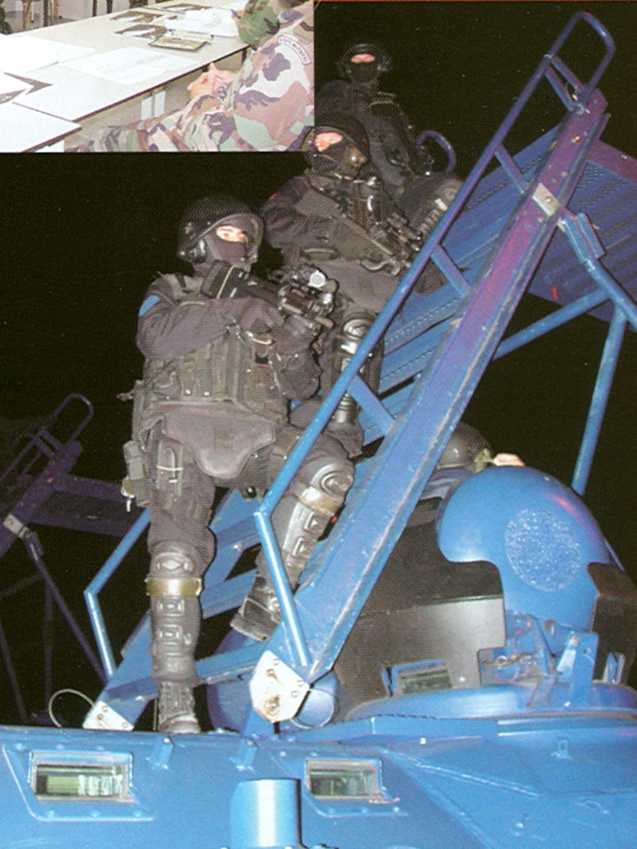
Ranger Larry Altersitz writes:
"The Dutch ladders are neat, but I'd like to see them protected with a clear shield, perhaps along the lines of a UDLP Transparent Armored Gun Shield, wrapped around the ladder to prevent a vertical burst from wiping out a fire team. Did like their shin greaves, too, but I wonder about weight. I also think your unit needs a long-term aerostat sensor/observer element and the much maligned UAVs to sweep rooftops and side look into windows, with a lot of noise for some and very quietly at a distance. I'd put a mast on a Ladder GAVIN with extendable " arms and let the sensors look in windows/rooftops, and pneumatically launch small sensors into "windows of interest".
Such an elevated machine gun tracked armored fighting vehicle capability is not a new idea; the British mechanization innovators during even the cash-strapped 1930s were able to create working prototypes like the Bren gun carrier below
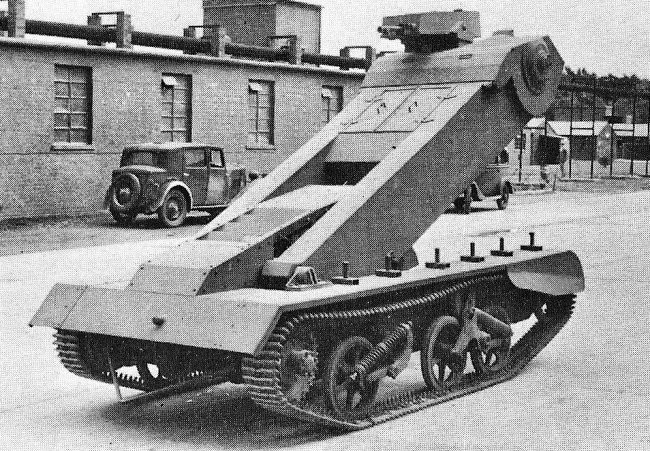
Rooftops---------------->M113A3 or M2 as a light fire support vehicle with a 120mm direct fire mortar and 25-30mm chain gun in the turret. Add some applique' armor, a tank roof for overhead cover and claymores on the sides to sweep streets, it can support the other M113A3-based ESV forces.
Automatic weapons fire---------->M113A3 ESVs with RPG-resistant armor
Firefighting-------------->M113A3 ESV with fire fighting pump/jet
 www.youtube.com/watch?v=EqjRwZSmdM0
www.youtube.com/watch?v=EqjRwZSmdM0
 www.youtube.com/watch?v=j65RfFpBSP0
www.youtube.com/watch?v=j65RfFpBSP0
The Future Combat System? No Physical Maneuver Advantage
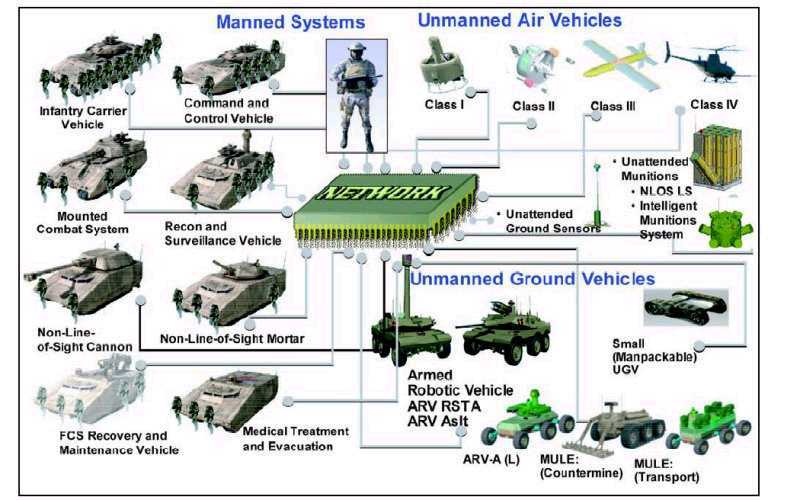
Its clear that since M728 Combat Engineer Vehicles with dozer blades and 165mm demolition guns, M551 Sheridan light tanks with 152mm infantry fire support guns have been retired, and M113A3 Gavins have not been supplied to the 82nd Airborne to fulfil cavalry and engineer assault functions that the U.S. Army has opted for "dream stuff" in the form of a Future Combat System (FCS) armored car (when wheels wouldn't work, a medium-weight tracked tank) network that ignores physical fire & maneuver for mental and unmanned gadgetry to steer firepower from afar to a target. The Tofflerian digital mental hubris underpinning the FCS O & O construct belittles the need for physical platforms that need to be mobile on the real earth we live on to include swimming, rumbling over obstacles and soft muddy terrain or even fly because the cost for the mental gadgets have cancelled out the purchase of a Future Transport Rotorcraft (FTR) [later renamed Joint Heavy Lift (JHL) aircraft--who knows what it's name now?] to fly the FCS [renamed "Ground combat Vehicle" (GCV)] over earth or enemy impediments.
 www.youtube.com/v/86__512svCY
www.youtube.com/v/86__512svCY
The less-than 2D capable, road/trail restricted, cannot-swim, FCS/GCV armored car/medium-weight tracked tank is actually a step backwards to the WWI contraptions that got mired in the mud, except made with a veneer of acceptability because its done in great style via computers and "Star Wars" robot gadgets trying to do Soldier's dirty work. Certainly the U.S. Army not having the right tank ethos that sees the platform in Combat Engineer and Cavalry terms is the cause, though actual Army leaders are still to blame for bringing the Army and by inference our nation to the verge of ruin.
The optimal FCS/GCV should be the ultimate future tank, in both 2D and 3D forms that can swim, fly by aircraft and be amazingly terrain mobile with a host of Hobart-esque siege engine attachments, but the very name "FCS" shows that its creators are not interested in gaining physical mechanical advantage but are instead imbued with Tofflerian "New Age" mentalism hubris and do not want to have to measure up let alone better combat proven platforms of the past. Capitalizing on the chance to gain the most powerful physical, mental and spiritual force structures possible through a fresh design would entail changing the military culture from unprofessional blind obedience and cronyism to egalitarian professionalism where everyone thinks, everyone fights---in a decentralized manner. Instead, to preserve top-down, rank-hath-its-privileges, the Army's FCS designers have in essence chosen to perpetuate their own war-toy favorite version of the 19th Century "horse cavalry" into the 21st Century---the Command Post (CP). The post-WWII U.S. military has been in love with trying to fight wars from CPs; this is what the FCS is, a digitized CP on wheels; to micro-manage subordinates, mouse-click computer icons and munitions strikes---to insure senior leaders do NOT have to physical involved and be required to be decent lead-by-example human beings worthy of the followership of the men. Instead they can mouse-click them to their deaths.
However, like the aloof British Horse Cavalry in the 1930s was fond of their riding exercises, and we of our senior officer computer simulations showing us what we want to see, the day of reckoning will come to the American military when the cunning enemy nation-state not imbued with "fantasy stuff" will yield the heavy sledgehammer of modern technology and practical physical mechanical advantage down upon our unshielded, unalert heads and the blow may be indeed fatal. If there is a chance to recover, there will be no time for FCS fantasy solutions to be built. We will need to take the proven mobility platforms we still have, built by wiser men in a wiser era---and adapt them in a hurry to get the mechanical advantage we need or we will not survive.
I say let's get on with it and build today's Hobart's Funnies--a real tank ethos and drop the Command Post "Horse Cavalry" on wheels.
NOTES
1. Captain Adam Geibel writes about this in the May/June 2001 issue of U.S. Army ARMOR magazine: "PT-76 Light Tank in the Indo-Pakistani Wars: the amphibious armor advantage"
www.knox.army.mil/center/ocoa/ArmorMag/mj01/3pt76-01.pdf
Today, we could put a 20-90mm gun stabilized turret system on the M113A3 AmphiGavin and have an even better capability than the PT-76! ...from the ocean.....too....restoring the bunker-busting capability we lost when the M728 Combat Engineer Vehicle (CEV) was retired and not replaced.
Britain's Visionary Non-Linear War Mechanized Reformers Persecuted, Germany Listens, Americans Sleep
www.ihr.org/jhr/v18/v18n1p-2_Constable.html
The Little-Known Story of Percy Hobart
By Trevor J. Constable
They Called Him "Hobo"

Winston Churchill threw down the Sunday Pictorial on the morning of August 11, 1940, with an angry scowl on his face. "We Have Wasted Brains!" blazed the headline to a slashingly critical article by Britain's top military analyst, Captain B. H. Liddell Hart. Dominating the page was a photograph of a hawk-faced officer in the black beret of the Royal Tank Corps, former Major-General Percy Hobart. He was Liddell Hart's classic example of Britain's "wasted brains."
Practical pioneer and developer of the now-dreaded Blitzkrieg technique and former commander of the world's first permanent tank brigade, Hobart's revolutionary innovations in armored warfare had won him international military fame -- and special attention in Germany. Dire peril now threatened Britain, but General Hobart was not commanding British tanks. He wasn't even in the Army. He had been found serving as a corporal in the Home Guard [overage men and other civilians otherwise unfit for regular military service, meagerly armed, whose "uniform" was an arm band] -- the highest responsibility Britain's military mandarins were willing to give to the progenitor of the Blitzkrieg.
Aroused by Liddell Hart's exposure of the situation, Churchill was determined to change Hobart's assignment. In the process, the prime minister was to launch and bring to its climax a drama of personal resurrection unsurpassed in military history. As Churchill pressed buzzers and rumbled memoranda to his secretaries, the country stood on the brink of ruin. The struggle with the Luftwaffe raged overhead. German armies were massing on the French coast for the projected invasion. The British Army had been routed in France with the modern tank methods first demonstrated to the world by Hobart, now a Home Guard corporal. The Germans had learned and applied only too forcefully the techniques pioneered by Hobart's tank brigade years before.
The prime minister directed that Hobart should be taken back into the Army. The chief of the Imperial General Staff should give him at least one of the new armored divisions to command. Delay was to be avoided. A personal meeting was to be arranged promptly between Corporal Hobart and the prime minister.
In a modest home near Oxford, lean, bushy-browed Percy Hobart was preparing to leave for his Home Guard duties. The one-time general who had commanded hundreds of armored vehicles in maneuvers and raised and trained the 7th Armoured Division in North Africa took a wry look outside his front door at what was now his "transport." A baby Austin driven by a member of the Women's Volunteer Services stood waiting. The telephone jangled, Corporal Hobart answered, and found himself talking to one of Churchill's secretaries. The tank expert was asked to have lunch with the prime minister at Chequers, the official country residence of the British leader. Bigger things were in store for the aggressive 55-year-old ex-general, whose stormy and controversial past held the key to his future.
From the early 1920s, when he had transferred to the Royal Tank Corps as a military engineer, Hobart had turned his thinking to the future. He was among the few pioneers in every major nation to whom the tank appeared as the decisive land weapon of any future war. These tank enthusiasts, British, German, American and French, took their tactical inspiration from two outstanding British theorists, J.F.C. Fuller and Captain B.H. Liddell Hart. Liddell Hart in particular was influential. He was even then winning recognition as Britain's leading military brain -- in or out of uniform -- and he wrote forcefully and persuasively in favor of the new doctrine of strategic mobility. This concept is basic to today's military teachings, but it was heresy in the 1920s. Liddell Hart held that tanks would restore to 20th-century warfare the ancient Mongolian idea of extreme mobility -- the Mongols' main instrument of conquest. Bloody slugging matches in the 1914-18 fashion were doomed. Generalship would again flourish and replace the dull butchery of mass frontal attacks by infantry.
Orthodox military minds of that time could not grasp such concepts, which demanded creative imagination no less than military understanding. Men with imagination, vision and ability to carry these qualities over into practical soldiering were rare in the static-minded, socially-centered British Army. Percy Hobart was one such man. His diversified background and interests ensured that imaginative, mobile thinking would be second nature to him. A student of history and its lessons, he had delved also into such creative non-military fields as painting, literature and church architecture. Vibrant facets of mind to which regular military life gave no scope sparkled brilliantly in Percy Hobart.
Liddell Hart's "Mongolian" concept of strategic mobility became the focus of Hobart's considerable intellectual resources. Development of these concepts and their adjustment to the mechanical twentieth century dominated Hobart's life from the time they were put forward. His creative imagination had been fired by the military revolution he could visualize, but his creativity was combined with a rock-hard realism. "Wars cannot be fought with dream stuff," he used to say, as he poured his life's energies into the development of practical machines for armored warfare, and the effective methods of directing these new mobile weapons. His goal was to break military science out of the straitjacket of trench warfare by updating the Mongol methods.
Where the Mongols lived off the country through which they ranged, Hobart planned to carry sustaining rations in the tanks. Refueling would be from lightly-protected dumps in the enemy rear, where the far-ranging armored columns would penetrate and strike. He worked with relentless zeal to cut "the tail" of non-fighting service vehicles which hobbled and almost immobilized conventional army units. Tank forces of the future were to be self-contained for the maximum possible range.
Down-to-earth problems such as these did not prevent Hobart from taking a prescient look up at the sky. He planned for the time when the increasing power and versatility of aircraft would permit mobile armored columns to be completely supplied by airdrop. Standard practice today, this concept was in those times often the subject of mockery. Hobart planned to send his hard-hitting columns ripping into enemy supply lines and nerve centers in the rear, paralyzing command and demoralizing troops in the front lines. Less than twenty years later, America's General George S. Patton was to carry out these tactics on a vast scale and with historic success.
Resistance to these radical ideas began to stiffen. The old order found its neurotic and professional security threatened by the progress of strategic mobility. "Hobo," as he was affectionately called by his intimates, viewed the old order and its resistance to the new ways with direct and unconcealed contempt. "Why piddle about making porridge with artillery," he said, "and then send men to drown themselves in it for a hundred yards of No Man's Land? Tanks mean advances of miles at a time, not yards!"
Views like these were shared only by a small military minority. The powerful ruling faction of military conservatives was convinced of the value of the tank only in scattered use to support infantry formations. Horsed cavalry had been literally swept from the battlefield by the machine gun, but cavalrymen and cavalry philosophy nevertheless still ruled the high commands of the British Army. Men like these regarded Hobart's ideas as anathema. Professionally, they were maintaining the kind of army that could fight the First World War over again. Content with familiar ideas and concepts, and fearful deep inside that Hobart and others might be right, these controlling conservative elements closed the high commands of the British Army to tank advocates.
During this same period in the USA, despite the nation's massive mechanical heritage, a similar situation prevailed. Development of an independent armored force was stifled on that side of the Atlantic, although General Douglas MacArthur held a vision of the military future similar to that of Percy Hobart. Tank development was largely left to devoted individual officers in both Britain and America.
What Hobart's faction lacked in authority they made up for with energy and persistence. Aided by the strong independent voice of Liddell Hart, the tank enthusiasts were finally able in 1927 to pressure the British military hierarchy into the formation of an "experimental mechanized force." Maneuvers demonstrated dramatically that such a force outclassed old-style formations, leaving them bewildered and embarrassed. The theories of Liddell Hart and Fuller and the practical genius of Hobart's training and organization were vividly vindicated. The writing was on the wall for the old order.
The die-hards reacted with a more energetic campaign against tank advocates and theorists. At all costs tank men were to be kept out of high command. Major-General J.F.C. Fuller, whose writings had been widely acclaimed both in the U.S. and Germany, was the first victim. By a series of subtle maneuvers he was quietly squeezed into retirement and never allowed to hold an important post. Other tank officers were sidetracked and discriminated against professionally.
Hobart was now a rising power in British military circles, and conservative machinations were directed against him. He miraculously survived these early efforts at strangulation of the new ideas, and held a series of commands in the Royal Tank Corps. He worked out a basic modern battle drill for tanks, and used all his considerable powers of persuasion to get radio-telephones for his armored fighting vehicles.
Like most things for which he struggled, radios are indispensable to the military of today. A tank in today's armies would hardly be considered battle-worthy without radio. But Hobart spent months requesting, cajoling, demanding it. When the precious radios were finally obtained, Hobo was as happy as a child on Christmas morning. "Control is as important as hitting power, armor or mobility," he said.
With the radios came a new dimension in tank tactics. The basic equipment for a modern tank force was now to hand and Hobart began building up the techniques of command and control that were to rock the world. He made a sharp departure from the army concepts of leadership then in vogue. He believed in men knowing what they were seeking to accomplish in a military operation, right down to privates. "I do not want automata serving under me," he told his subordinates.
He brought everyone serving with him into intimate contact with the higher strategic and tactical principles he was striving to establish in modern war. Although not an orator, Hobo was possessed of a virile and inspiring eloquence that generated tremendous enthusiasm. His gift was to focus this enthusiasm on practical military matters, charging the mundane with a rare magic. Hobart carried this principle over into the civilian circles where equipment was being manufactured for his tanks. When he finally got his radios, he sought out the young woman scientist who ground the crystals for these long-awaited sets. She was set up in the tank turret beside Hobart and he showed her how hundreds of fighting vehicles depended on the accuracy of her work.
After the young woman had gone away visibly impressed by what she had been shown, Hobart turned to his brigade major. "What a damned boring, awful job that girl has, grinding those crystals -- but now she knows where we'd be without her." Note 1
The soaring enthusiasm generated by Hobart's methods reached its zenith in the 1st Tank Brigade, formed in 1934 as the world's first permanent tank unit on modern lines. By this time a brigadier despite his radical views on warfare, Hobart was given command of this historic unit. He quickly infused the brigade with a booming esprit de corps unrivalled in the British Army.
Under his control at long last was the kind of formation that could conclusively prove the case for strategic mobility. Hobart lost no time. In a series of brilliantly executed war games, he proved the feasibility of driving to the enemy's rear with fast-moving armored units and completely disrupting enemy organization. He carried the revolution even further.
Hobart proved that armored units could both travel and fight by night. This innovation forced a complete revision of strategic and tactical concepts, for it placed old-style military units more than ever at the mercy of armored fighting vehicles. He firmly established the fundamentals of co-operation between tanks and air power, central to all that is done on the modern battlefield. He drove the 1st Tank Brigade hard. He knew how much could be proved and needed to be proved and that he might not be granted the time by his superiors. Continuing antagonism toward tanks, tank advocates and the new concepts of armored warfare characterized the high command of the army, and Hobart was never sure that his next war game would not be his last.
These unsparing efforts by Percy Hobart gave birth to the basic technique of the Blitzkrieg, the new mode of mobile warfare that was to bring nation after nation tumbling down and force Britain to the brink of defeat. The British high command remained irrationally prejudiced against the military technique that Hobart was unfolding. With a curious kind of intellectual detachment, most British leaders did not believe that the devastating effects of Hobart-style armored units could be carried over into actual warfare. Purblind views such as these aroused Hobart's fiercest antagonism: "What in hell is the use of having war exercises," he would fume, "when every lesson they teach us is ignored?" Note 2
Skepticism about armor was reinforced by lingering love of the cavalry horse. The logical passage of this beloved beast into military limbo was delayed and obstructed by its devotees. These men became opposed to the tank on emotional, sentimental grounds, and found in Hobart a hostile, aggressive opponent. Horsemen nevertheless carried far more weight than tank men in British military life. Cavalry experts not only ruled the army commands, but had long tentacles into the body politic. Their influence was such that as late as 1936 the then secretary of war, Alfred Duff Cooper, apologized to the cavalry in Parliament for mechanizing eight of its regiments.
Hobart's achievements were running a poor second to the cavalry horse in Britain, but elsewhere they were undergoing dynamic scrutiny. A strong-jawed German colonel named Heinz Guderian probed with Teutonic thoroughness and an enthusiast's zeal into the lessons of every Hobart trial and exercise. Every report, observation and paper pertaining to Hobart's force was meticulously analyzed by Guderian, the Hobart of the new German Army. These studies formed the basis of the new panzer divisions, armored spearheads of Germany's new army. Hobart's 1st Tank Brigade was Guderian's practical guide, and answered many of the German leaders early problems. Guderian had his difficulties with German military conservatives, but he accorded his country's tank debunkers little attention. When they spoke of "tank limitations," Guderian would not listen. "That's the old school," Guderian would say, "and already it is old history. I put my faith in Hobart, the new man."
At the conclusion of some prewar maneuvers of Guderian's panzer division, the German general was reported to have offered a farewell toast in champagne --"To Hobart." The dynamic British pioneer was considerably less popular in Britain than he was with the modern military men of Germany. Unreasoning conservatism was taking an even sharper stand against tank men than ever before. The irrational nature of the conservative standpoint, combined with the menace to his country and the disasters that he could already foresee had turned Hobart into an explosively fierce advocate of what he knew to be true and proved by actual test.
The slender general's personal forcefulness and vehement manner of expressing himself in pursuit of his goals had earmarked him for professional extinction. "No man is any good who has no enemies" was one of Hobart's credos. Note 3 By the late 1930s he had more bitter foes in Britain's War Office than any other officer in the British Army. He had become involved in heated arguments with all Britain's military mandarins. Every leader from the Chief of the Imperial General Staff downwards had felt the whiplash of his tongue and the weight of his eloquent logic. Confrontations with senior officers could not long continue. Hobart's passion for the armored idea was actually leading him to risk his all.
Efforts to tone him down had little success. A deeply concerned Liddell Hart, in company with General "Tim" Pile -- another long-time tank advocate -- took Hobo out to dinner one evening. Their purpose was to save not only Hobart himself, but the armored idea, which Hobo's confrontations with high personages was placing in jeopardy. Relaxing in a pleasant atmosphere, Liddell Hart quietly stressed to Hobo that he was alienating potential War Office converts by his infuriating ways of argument. Like all strong personalities, Hobart could pass from one extreme of behavior to another. Force was balanced in his character by a courtly and irresistible charm. "He apologized disarmingly," Liddell Hart recalls, "and promised that it would not occur again. But only a week later the Chief of the Imperial General Staff complained to me that Hobo had again been intolerably rude to him. I tackled Hobo about it, but he was completely unaware of having been rude to anyone."
In this climate of clash and controversy, Britain tardily began the formation of its first modern armored division. The Germans already had four and were building more. Hobart's fears and predictions were being realized. He was the logical man for the command, and the new secretary of war, energetic, reform-conscious Leslie Hore-Belisha, was determined that Hobart should get the vital assignment. War Office conservatives dug their toes in and treated Hore-Belisha to a bewildering exhibition of bureaucratic and professional resistance. The secretary was unable to put Hobart into the post, and recalled in later years: "In all my experience as a minister of the Crown, I never encountered such obstructionism as attended my wish to give the new armored division to Hobart."
A cavalryman whose most recent assignment had been the training of riding instructors was proposed by the War Office for command of the new armored division. This proposal fairly characterized the uncomprehending state of British military thought on the eve of the world's greatest war. In a compromise arrangement with the War Office, Hobart became director of military training. Hore-Belisha hoped by this stratagem that Hobart's personal drive, enthusiasm and knowledge of armored warfare could permeate all army training.
The tank genius was now deep in "enemy" territory. He was the last tank man of high rank left in an influential post. Like a loathsome infection, he was gradually walled off by the subtle processes of the War Office organism, while pressure mounted to expel him entirely from that august body. Hore-Belisha was continually urged to dismiss Hobart.
The Munich crisis provided the right emotional climate and an excuse to get rid of him completely. He was bundled on a Cairo-bound aircraft, assigned to raise and train Britain's second modern armored division. With Hobo's removal to the Nile delta, tank thinking was exterminated in Whitehall [Britain's Foreign Office], and as Liddell Hart put it, "The British Army was again made safe for military conservatism." For these decisions on the part of its highest military professionals, Britain was to pay dearly in life and prestige.
Scattered motorized and mechanized troops with obsolescent equipment were all that Hobart found in Egypt as the basis for a modern armored division. A grim enough prospect in itself, the equipment situation was overhung by a demoralizing and obstructive emotional factor. Commanding in Egypt was one of the British Army's remaining conservative hangovers from the First World War, a soldier for whom Hobart, himself a decorated veteran of the first conflict, had never failed to express his professional contempt. The commanding general was also a socially-minded Soldier. He especially detested Hobart at the personal level for his 1928 marriage, for which Hobart's wife had gone through the divorce court.
Modern minds would regard such a procedure as little more than a fact of life. To the British Army of the period between the wars, it was a transgression sufficient to bring many threats of professional retribution on Hobart, one of them from the general who now commanded in Egypt.
Hobart's arrival was followed by a brief and brutally unceremonious interview in the quarters of the commanding general. "I don't know why the hell you're here, Hobart," he barked, "but I don't want you."
In this poisonous atmosphere, once again virtually isolated, Hobart buckled down to build the kind of armored division of which he had always dreamed. There was virtually no communication with main HQ, no sympathy with what he was doing, no co-operation and no equipment. Hobart proved his superb qualities under these negative, antagonistic conditions by bringing off the miracle of the 7th Armoured Division.
Troops accustomed to the sleepy garrison routine of Egypt found themselves with a stern taskmaster. Rushed into the desert to train by day and by night they soon found themselves permeated by the unconquerable spirit of the tall, hawk-faced Hobart. He infused them with the same magic morale he had given to the 1st Tank Brigade, and month by month he welded the scattered units into a determined, smoothly functioning fighting division.
Taking the jerboa (desert rat) as their emblem they were soon known as the "Desert Rats." They proved themselves Britain's finest armored division in the whole North African campaign. Lieutenant-General Sir Richard O'Connor, commander of the Western Desert Force of 1940, called the 7th Armoured Division "the best trained division I have ever seen." Note 4
The grim and frustrating duels of the War Office and the struggle for the armored idea slipped into the background as Hobart fulfilled himself in a man's job. When war broke out in September 1939, a deadly, hard-hitting and superbly mobile force was under his command. Lean, tanned and hard of body and mind, the 54-year-old Hobo was ready for whatever the war could bring.
Three months later, Hobart was dismissed from his command and sent into retirement.
This shocking blow came at the hands of General Sir Archibald Wavell, who decided to act on an adverse report on Hobart filed by the general who hated him and who had sworn professional retribution. Normally a man impervious to the effects of opposition or professional misfortune, Hobart was shaken to the roots of his being by his abrupt and complete dismissal.
Lady Hobart recalls the 1940 dismissal from the army as the one time in their life together that the general had shown distress over any reverse. "He was a stricken man," she says today. "To anyone lacking his intense fortitude, the wound would have been mortal. No warning whatever was given that this blow was to fall."
General Sir Archibald Wavell, who was himself a man with a keen mobile sense, was unable in later years to explain adequately his action in dismissing Hobart. The loss of the tank genius from the desert command was to have incalculable consequences for British arms and fortunes. Liddell Hart tackled Wavell about Hobart's dismissal personally, and made it clear to him how deplorable and damaging the whole affair had been. "Wavell's explanation was rather lame," says Liddell Hart.
Wavell went on to win his own immortal glories by crushing the Italians with the Hobart-trained 7th Armoured Division -- the only unit available and able to nullify the overwhelming Italian advantage in manpower and machines. By one of destiny's strangest twists, Liddell Hart had compiled a list of the most promising officers in the British Army for Hore-Belisha in 1937. Only two men were singled from the multitude of British generals as likely to become great commanders -- Wavell and Hobart.
The fortunes of the British Army in North Africa were left after Hobart's dismissal in the hands of high commanders who were no more than amateurs in the handling of modern armored forces. So tight was the conservative grip on command that it was not until the latter part of 1942 that authentic tank officers even reached divisional commands. This continuing prejudice and incomprehension was reflected by the British Army's record in the field. With an inferiority of force but with an intuitive gift for handling mobile forces, Rommel proceeded to thrash humiliatingly a succession of British generals sent against him. The troops in the field, as well as the public all over the world, began to wonder if the British had ever heard of the tank before Rommel. British troops in North Africa, repeatedly let down by their armored forces, began to look on their own tank units with considerable suspicion.
When Hobart went back to England, an appeal against his dismissal was made to the king. The appeal was never put forward by the War Office. In Britain's time of mortal danger, Hobart's foes had eliminated him completely from military affairs, and had no intention of bringing his case to the attention of the monarch. For his general's uniform and badges of rank Percy Hobart substituted the white brassard of the Home Guard on the sleeve of his lounge suit.
He joined the Home Guard without communicating anything of his intense disappointment to his wife and family. A deliberate effort had been made to break Hobart's spirit as well as to end his military career. Self-pity might easily have overwhelmed a lesser man but Hobo was made of sterner stuff. "I cannot do what is ideal, so I must do what I can," he told his wife. He entered seriously into his Home Guard duties as a corporal. As the months passed, he seemed to develop an inner conviction that his chance would come, and that the wheels of the gods would eventually grind. For Hobo, the wheels of the gods ground along on German tank tracks.
Six months after Hobart's removal from the army, Guderian's panzers had run the British Army out of France in one of history's most humiliating routs. The able and farsighted German leader had used to perfection in war the techniques first tried and proved by Hobart. Never was there a more appropriate time for review of their military affairs and doctrines by the British, for only the miracle of Dunkirk had saved their beaten army from capture or annihilation.
Incredible as it must now seem, the stinging defeat of France and Dunkirk, with its devastating effects on morale and national pride, made little impression on Britain's military conservatives. Their intellectual detachment from the dynamism of events continued. The smashing of their First World War type formations in France was deemed due to some sort of lucky German punch, even though Hobart's Tank Brigade exercises in the middle 1930s had portended the armored revolution with undeniable clarity.
Winston Churchill was not satisfied either with these military notions, or the defeats they had brought upon Britain. He was no friend of military die-hardism. One of the early pioneers of the tank in the First World War, Churchill had helped batter down opposition to its introduction into the earlier conflict. Between the wars, the future prime minister had watched tank developments closely. Hobart's disastrous misemployment incensed Churchill, As prime minister and minister of defense he was the most powerful official in Britain, but getting Britain's leading tank tactician and general back into the army was to take every ounce of his authority, as well as some of his eloquence.
As late as October 1940, Hobart was still unemployed, his appointment obstructed high in the War Office. Churchill was given a dossier listing the reasons why the progenitor of the Blitzkrieg should not be given an armored division. Churchill replied to the resisting spirits in the War Office with a historic minute: Note 5
October 19, 1940Prime Minister to Chief of Imperial General Staff:
I was very pleased last week when you told me you proposed to give an armored division to General Hobart. I think very highly of this officer, and I am not at all impressed by the prejudices against him in certain quarters. Such prejudices attach frequently to persons of strong personality and original view. In this case, General Hobart's views have been only too tragically borne out. The neglect by the General Staff even to devise proper patterns of tanks before the war has robbed us of all the fruits of this invention. These fruits have been reaped by the enemy, with terrible consequences. We should, therefore, remember that this was an officer who had the root of the matter in him, and also vision. I have carefully read your note to me, and the summary of the case for and against General Hobart. We are now at war, fighting for our lives, and we cannot afford to confine Army appointments to officers who have excited no hostile comment in their career. The catalogue of General Hobart's qualities and defects might almost exactly be attributed to any of the great commanders of British history.
... This is a time to try men of force and vision, and not be confined exclusively to those who are judged thoroughly safe by conventional standards.
With this push from Churchill, Hobart's star went into the ascendant. He raised and trained the 11th Armoured Division, earmarked to fight in North Africa. While he set his indelible personal stamp on the 11th, Hobart chafed at the disasters inflicted on the British in North Africa by Rommel. He felt certain that he could defeat the Desert Fox if given the chance, but on the eve of the 11th Armoured's departure for Africa, Britain's military reactionaries took one last ignominious cut at the brilliant tank leader.
Because his military views could no longer be gainsaid, the final effort to oust Hobart was made on medical grounds, and mainly because he was now 56. His opponents were unfortunate in that they made their last effort to ruin and remove Hobart in September of 1942, a black month for the British Army. Only three months earlier, Rommel had sent the powerful British 8th Army reeling back in a rabble from Tobruk. The Desert Fox stood now at El Alamein, readying his final thrust at Alexandria. This reverse had been inflicted by dynamically directed armored forces on the superior British Army and had left Churchill furious. The prime minister had also personally visited and inspected Hobart's new 11th Armoured Division only a few months previously, and had found Hobo in full vigor. Churchill's reaction to the final attempt to oust Hobart was this second historic minute on the tank leader, filed on September 4, 1942: Note 6
Prime Minister to Secretary of State for War:I see nothing in these reports [of the Medical Board report on General Hobart] which would justify removing this officer from command of his division on its proceeding on active service.
General Hobart bears a very high reputation, not only in the service, but in wide circles outside. He is a man of quite exceptional mental attainments, with great strength of character, and although he does not work easily with others, it is a great pity we do not have more of his like in the service. I have been shocked at the persecution to which he has been subjected. I am quite sure that if, when I had him transferred from a corporal in the Home Guard to the command of one of the new armored divisions, I had insisted instead on his controlling the whole of the tank developments, with a seat on the Army Council, many of the grievous errors from which we have suffered would not have been committed.
The high commands of the Army are not a club. It is my duty ... to make sure that exceptionally able men, even though not popular with their military contemporaries, are not prevented from giving their services to the Crown.
As it happened, the assignment of Hobart's 11th Armoured Division to North Africa was cancelled at the last minute. Under Major-General G. P. B. "Pip" Roberts, a Hobart-trained tank leader of great skill, the 11th later became Britain's finest armored division in the whole of the European campaign. Hobart raised and trained the two finest British armored divisions of the war, but a more massive challenge awaited him now, beside which an ordinary divisional command would have been misuse of his unique talents.
The invasion of Europe and the subsequent campaign into Germany required a host of new-type tanks and armored vehicles. Tanks were needed for bridging ditches and rivers, clearing mine fields, throwing flame, destroying pillboxes and emplacements and for swimming ashore from landing craft with the assault waves and crossing rivers. Because these tanks did not exist in usable form, they had to be developed, together with the tactics for their employment. Men would have to be trained in the specialized task of manning these new weapons.
Design and development problems were enormous, and it was not a job for a riding instructor. Britain's new Chief of the Imperial General Staff, General Alan Brooke, had not been a Hobart enthusiast in prewar days. Nevertheless he was man and soldier enough to recognize that at this juncture there was one man in Britain pre-eminently qualified to develop specialized armor for the invasion and conquest of Europe.
General Alan Brooke called a somewhat bewildered and cautious Hobart to his London office in March 1943 and asked him to train a unit in the handling of specialized armor. This unit was later to become known as the 79th (Experimental) Armoured Division. After almost two decades of frustration, disappointment, sidetracking and outright victimization, Hobart suspected some sort of trap. Sir Alan Brooke's prewar apathy to the armored idea remained fresh in his mind. The ex-Home Guard corporal asked for time to consider the offer of command made to him by the Chief of the Imperial General Staff. Sir Alan Brooke agreed to this request, and Hobart set out to track down Liddell Hart and get his views on the proposal.
Hobart found Liddell Hart at the house of friends in Stoke Hammond, outside London. All urgency and energy, Hobo took the famed military analyst out in the garden for a private talk. Striding up and down in an icy wind for an hour, arguing about the new armored unit as a vehicle for Hobo's talents, they looked like anything but friends. Liddell Hart's wife Kathleen took periodic nervous looks out of the window. The vehemence of their discussion was unmistakable, and she wondered if they were quarrelling.
Liddell Hart finally convinced the gun-shy Hobart that it was an opportunity to be seized, and that such a chance would never come his way again. The 79th was to be the biggest division in the world, and also the first all-armored division. Tempted by the prospects, excited by the challenge, Hobo's resistance crumbled. He took the job.
Hobart's drive, knowledge and will-power became decisive in the building of the epic 79th. Time was short. There was virtually no background of previous experience on which to draw, a situation which placed a premium on Hobart's acumen, experience and military intuition. Challenge and fulfillment came together.
Trials and tests were endless. Hobart's gift for arousing enthusiasm for a new idea found full scope. The 79th (Experimental) Armoured Division took a bull's head as its insignia and soon boasted the same kind of soaring élan and confident professionalism that characterized other Hobart-trained formations. Urgency and excitement pervaded Hobart's environment, and no longer were there blockheads in brass hats to scrutinize and obstruct his requirements. On the contrary, men with wide authority moved heaven and earth to provide him with the necessary resources.
Field Marshal Montgomery, the conqueror of Rommel, was Percy Hobart's brother-in-law. Although a Hobart admirer for many years, Monty had tended to shy away from the tank idea when it was unpopular at the War Office. The hero of El Alamein now put his prestige behind Hobart's work and took up the needs of the 79th with General Eisenhower. The Supreme Commander quickly recognized Hobart's vital role and his unique abilities in developing specialized armor. Eisenhower slashed red tape and gave top priority to the U.S. manufacture of the odd-looking tanks and attachments Hobart required. High-level push of this kind, and Eisenhower's unstinting support of anything likely to save lives, soon provided the resources to assemble Hobart's "Menagerie," as it became known.
Liddell Hart has called the 79th Armoured Division "the tactical key to victory." Because it was not a division that fought as a unit, but had its elements farmed out to the Allied armies wherever they were needed, the 79th has far less historical fame than most of the Allied divisions that stormed through Europe. How far many other divisions would have been successful without the "funnies" of the 79th is a question for debate.
By the time the Allies reached the Rhine, Hobart's 79th Division consisted of eight brigades and a total of 17 regiments, quadrupling the complement of armored and tracked vehicles on the establishment of any normal armored division. This huge metal menagerie was spread out at times over a front of ninety miles, and the direction and allocation of its 1,900 armored vehicles kept Hobo hopping.
As the U.S. Army in the beginning did not have specialized armor of its own, the 79th frequently worked in close support of U.S. troops, and was the only British unit to do so. This situation suited Hobart. He liked Americans and they liked him. He was direct, frank and forceful, knew what he was talking about and understood the American character as few British commanders ever did. He would verbally thrash any officer or man he heard speaking against the Anglo-American alliance, to which he was deeply devoted. At one time, he even had an American aide, New York oilman George Thomson Jr., who served with the British Army. Hobart's radiant admiration for things American, such as know-how and mechanical skill, was not a superficial or transitory thing. He had an intimate knowledge of American commanders and their views, and an extensive knowledge of U.S. military history. He held America's top generals in the highest regard.
The directness and honesty of most American generals appealed greatly to Hobart. With the U.S. 9th Army commander, General W.H. "Big Bill" Simpson, the feeling was mutual. Simpson was taken aback by Hobo's quiet boast that he was "the oldest major-general serving in Europe." Simpson says of the amazing Englishman: "He was the outstanding British officer of high rank that I met during the war, and from his mind and bearing no one could possibly have guessed his age."
Vigorous and vitally alive, Hobart served with his fantastic steel menagerie until the final gun of the war from which he had almost been excluded. The case for armor had been proved. The basis for future manifold developments of tanks had been laid by the accomplishments of the 79th. Wrote General Eisenhower in his report: Note 7
"Apart from the factor of tactical surprise, the comparatively light casualties which we sustained on all beaches, except OMAHA, were in large measure due to the success of the novel mechanical contrivances which we employed, and to the staggering moral and material effect of the mass of armor landed in the leading waves of the assault. It is doubtful if the assault forces could have firmly established themselves without the assistance of these weapons".
Hobart had probably done more than any other single individual to advance both tanks and specialized armor on the practical level. Had Hobart's 79th Armoured Division, with its fearsome bull's head insignia, not been such a spectacular success, tank innovations may well have halted as they did after the First World War. Tanks are today an integral part of atomic battlefield planning.
Percy Hobart was knighted by King George VI, and from the U.S. received the Legion of Merit, Degree of Commander, a decoration of which he was extremely proud. When he went into retirement after the Second World War, it was in an honorable and upright way, with his admirers far outnumbering his critics. His death in 1957 saw him deeply honored and widely mourned, and to have "served with Hobo" is a real distinction in the British Army, where his one-time juniors and students are now in the highest commands.
From persecution, victimization, and his incredible misemployment as a Home Guard corporal, Hobart's resurrection to a decisive command in the Allied armies is one of the more startling personal stories of the Second World War. His story was hardly the kind of thing likely to impress the public with the efficiency of the war effort, or the quality of Britain's military leadership. Thus he remained almost unknown outside army circles.
The most memorable tribute to Hobart came from Captain B. H. Liddell Hart, whose exposure of the Home Guard episode started the tank pioneer on the road back. All the high British commanders and most of the Americans had passed before the famed analyst in a living parade, as they pursued their careers and often aroused his criticism. Liddell Hart also knew the Germans well -- perhaps better than any other military writer and thinker outside Germany. As Britain's leading military brain, his judgment has many times been vindicated, although his warnings all too often went unheeded.
In Liddell Hart's opinion, the independence of a top command would probably have proved Hobart to be the best of the British commanders, capable of matching the best of the Germans on equal terms. In summing up, Liddell Hart writes of Hobart: "He was one of the few Soldiers I have known who could be rightly termed a military genius."
Notes
1. Personal reminiscence provided by General Sir John Crocker, Hobart's brigade-major in 1934.
2. Personal remembrance of General Sir John Crocker.
3. Personal recollection of Lady Dorothea Hobart.
4. General Sir Richard O'Connor, commander of the Western Desert Force, 1940-41. Cited in: B.H. Liddell Hart, The Tanks (Praeger, 1959), vol. I, p. 404.
5. Winston S. Churchill, The Second World War, vol. II, "Their Finest Hour," 1st ed., pp. 602-603.
6. Winston S. Churchill, The Second World War, vol. IV, "The Hinge of Fate," 1st ed., p. 791.
7. Cited in: B. H. Liddell Hart, The Tanks (Praeger, 1959), vol. II, p. 332.
-----------------------------------------------------------------------
Author's Note
This article is slightly adapted from a chapter of my book Hidden Heroes, which was published in London in 1971 by Arthur Baker, Ltd. Since then, this unique collection of biographical sketches has received no exposure or publicity.
Consequently, the little-known Second World War tale of Percy Hobart's victimization and vindication is presented here, for the first time ever, to an American readership.
I remain much obliged, even after more than 30 years, to the late eminent military historian and analyst, Captain Sir Basil H. Liddell Hart. He gave freely of his professional time to assist me with numerous details, insights and clarifications. He patiently corrected my drafts of this story, in which he himself had been intimately involved from first to last.
The late General William H. Simpson, former commander of the U.S. Ninth Army, enthusiastically shared his reminiscences of General Hobart. George Thomson, Jr., of New York, and Major John Borthwick of Britain, military aides to General Hobart after his "resurrection," provided valuable insights, each from his own perspective, into a many-sided military genius.
The late Generals Sir John Crocker and Sir Harold "Pete" Pyman, similarly contributed to this portrait of Hobart, as former students who lived not only to see their visionary teacher's predictions come true, but to be developed further in scarcely conceivable ways. Lady Dorothea Hobart, the great man's widow, rendered indispensable aid by rallying these eminent men to help me, and was throughout the soul of kindness.
-----------------------------------------------------------------------
Liddell Hart on Hobart
"Much of the credit [for the February 1941 British victory against larger Italian forces at Beda Fomm, Libya] was due to a man who took no part in the campaign -- Major-General P.C.S. Hobart, who had been appointed to command the armored division in Egypt when it was originally formed in 1938, and had developed its high pitch of maneuvering ability. But his ideas of how an armored force should be handled, and what it could achieve when operating in strategical independence of orthodox forces, had been contrary to the views of more conservative superiors. His 'heresy,' coupled with an uncompromising attitude, had led to his removal from command in the autumn of 1939 -- six months before the German panzer forces, applying the same ideas, proved their practicability."
-- B. H. Liddell Hart, in his History of the Second World War (New York: 1971), p. 117.
-----------------------------------------------------------------------
About the Author
Trevor J. Constable, born in New Zealand in 1925, has an international reputation as an aviation historian and author. With Colonel Raymond F. Toliver, he has authored a number of successful works on fighter aviation and ace fighter pilots. He has lived in the United States since 1952. He now makes him home in southern California.
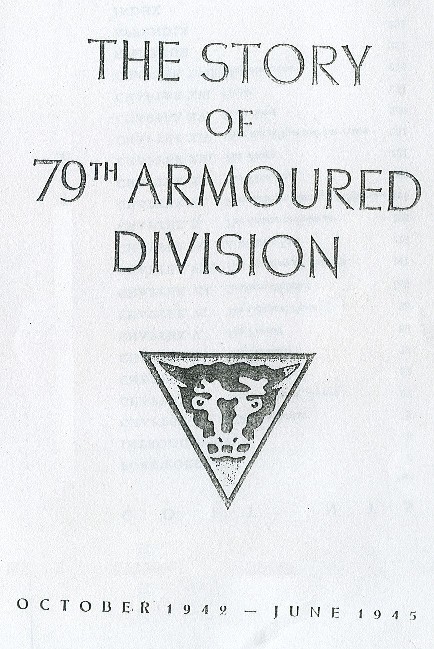
www.worldwartwobooks.com/product.php?xProd=594
Pages 1-7
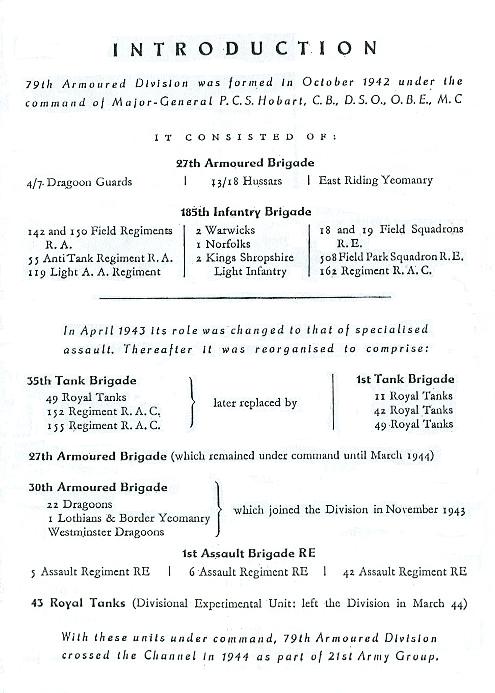
Page 9
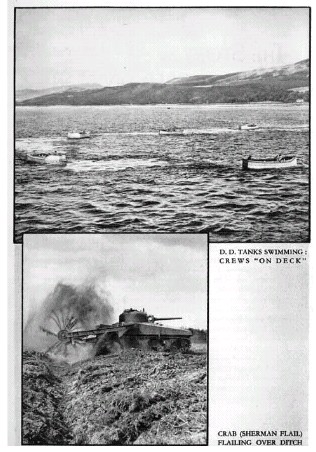
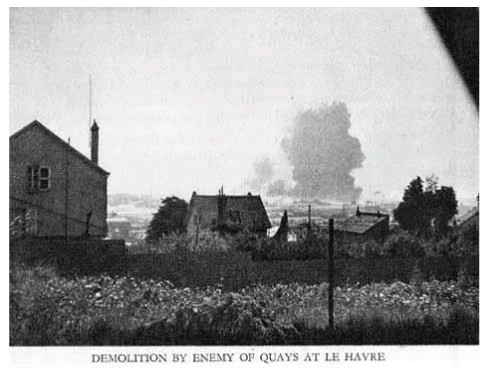
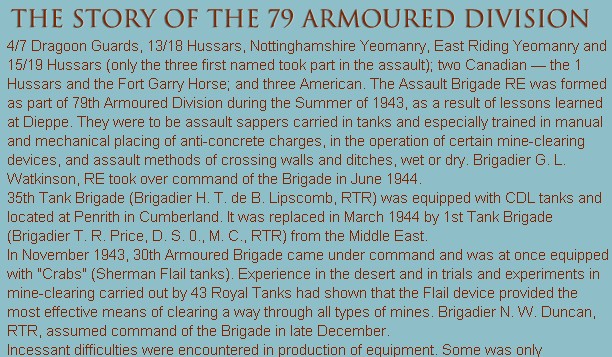
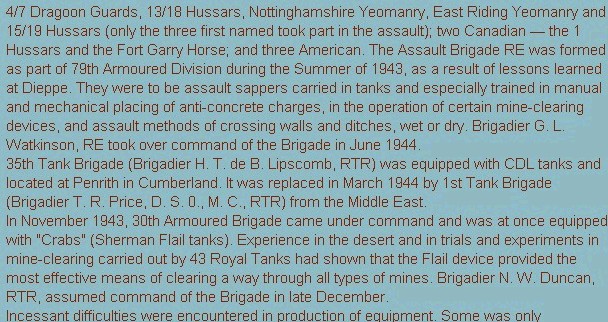
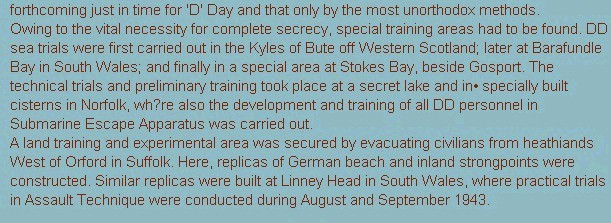
Page 11
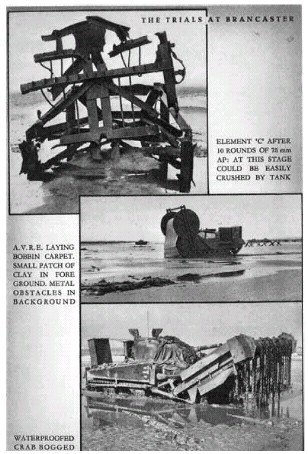
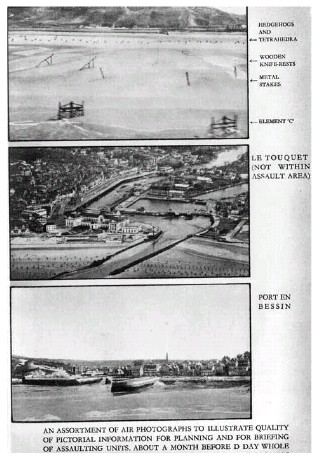
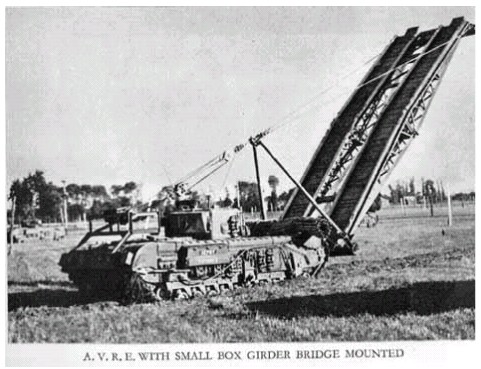
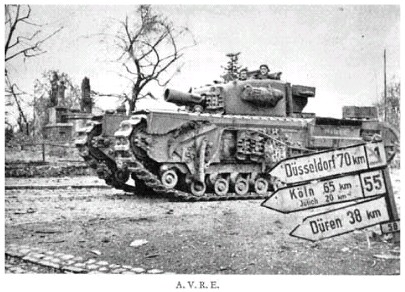


The equipments finally selected to be used on the continent were:
CDL: a form of searchlight, mounted on a gun tank (Churchill or Grant)
DD: an amphibious tank capable of navigating at sea (Sherman)
Crab: Flail mounted on a Sherman gun-tank
A.V.R.E:
(Churchill Armored Vehicle Royal Engineers) operating
Fascine
SBG Bridge
Petard
Bobbin
Snake
Conger
Plough
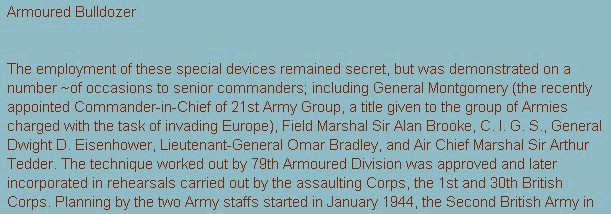
Page 15
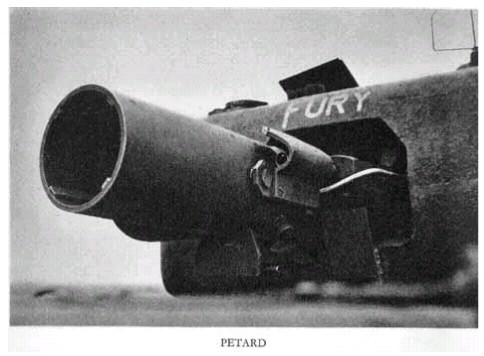
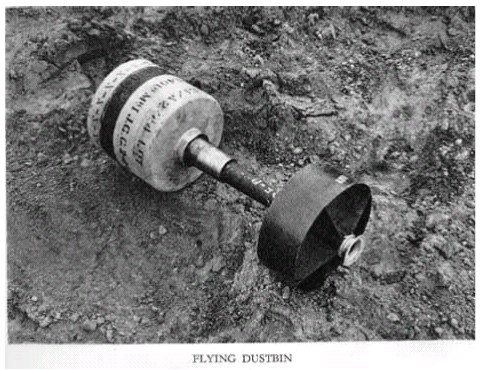
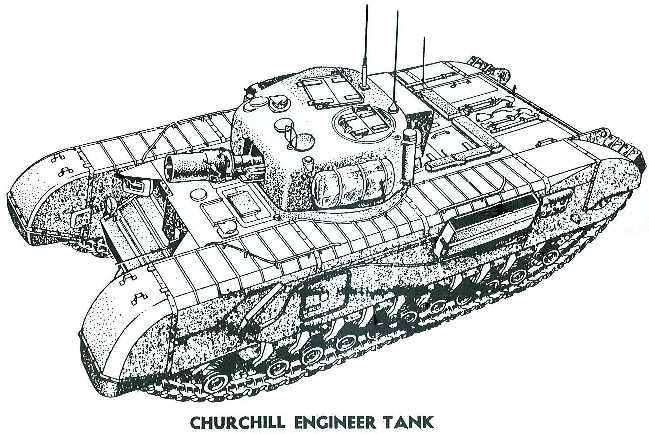

The process of detaching units to join the assaulting divisions started in March 1944, the allocation of units being:
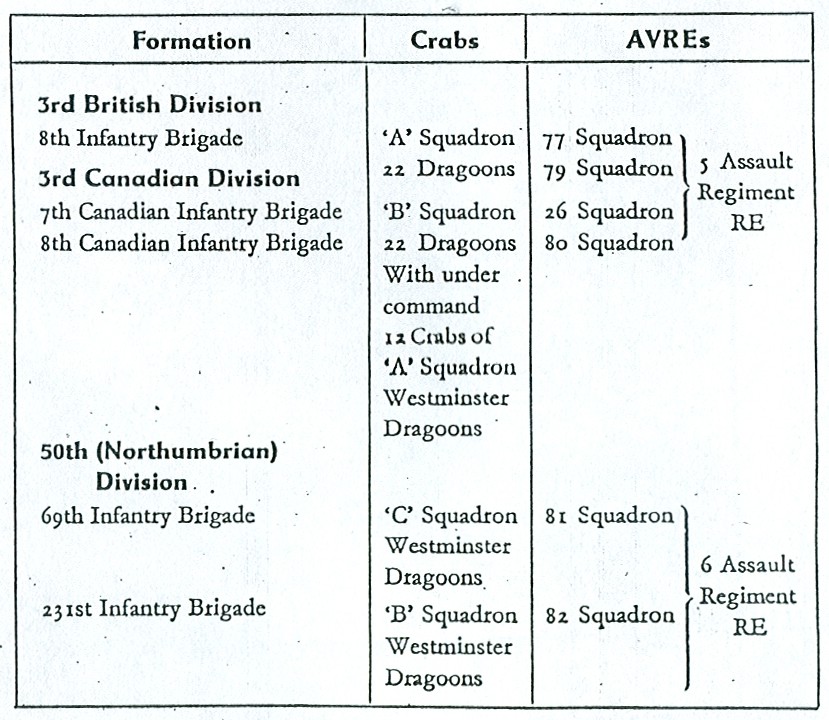
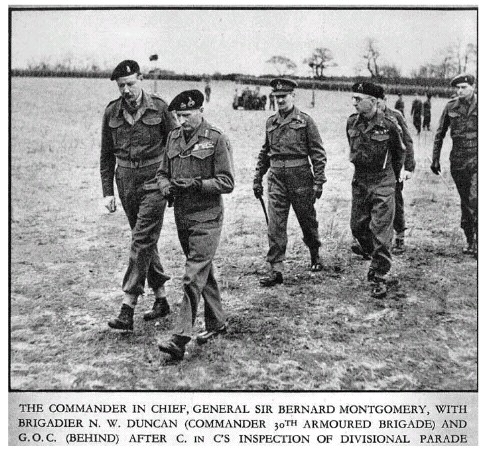
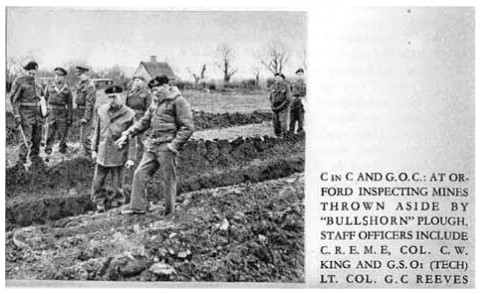
Page 19
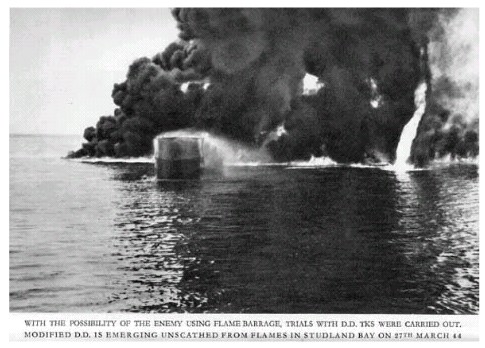
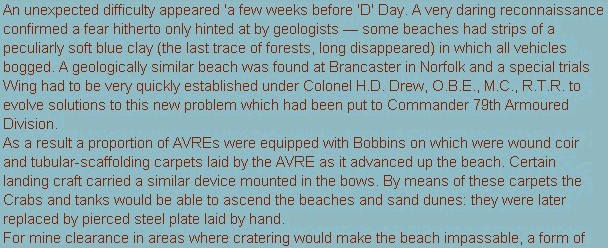
Page 21
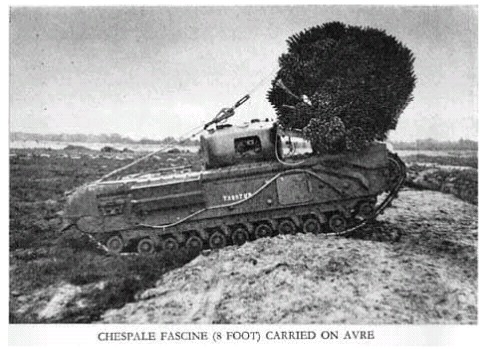
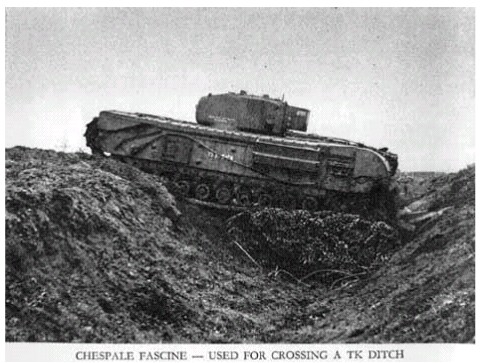
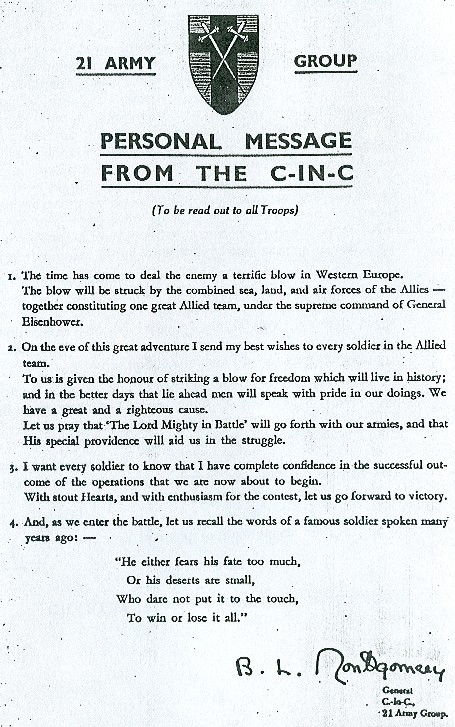
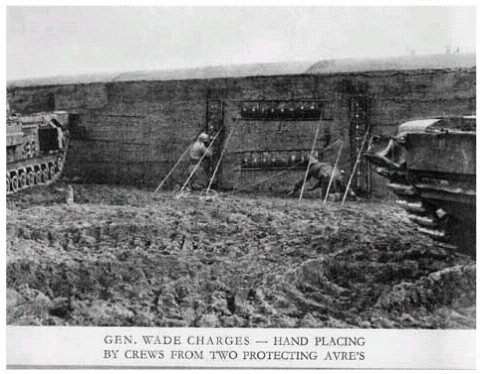
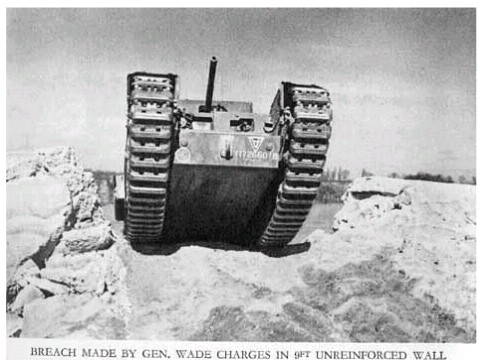
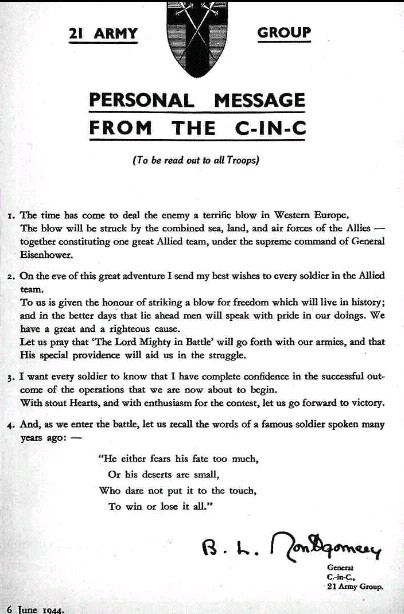
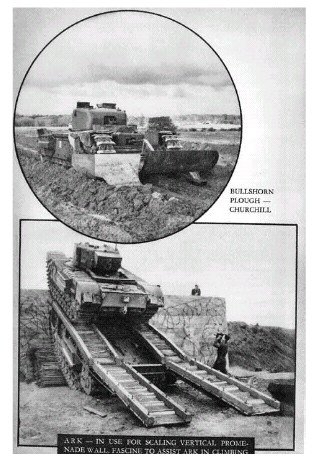
Pages 27-29
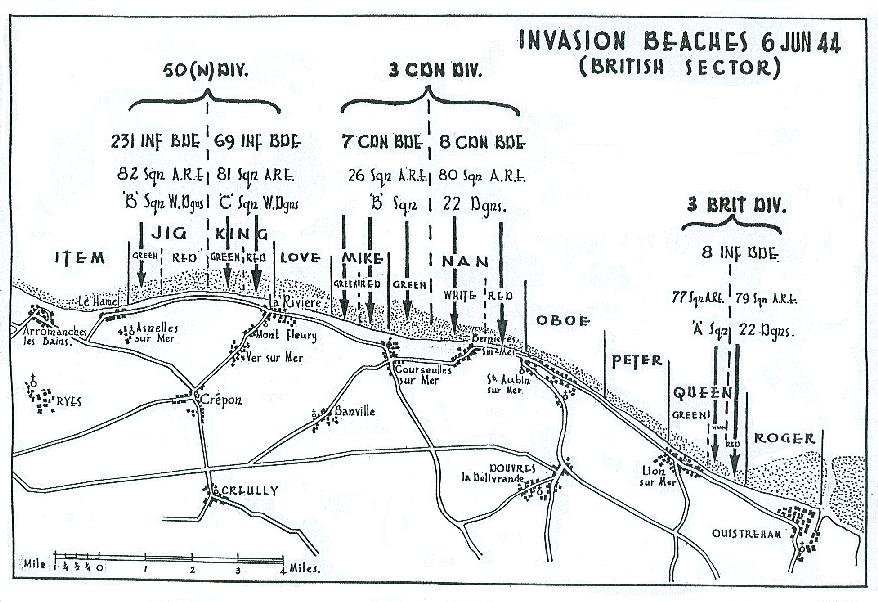
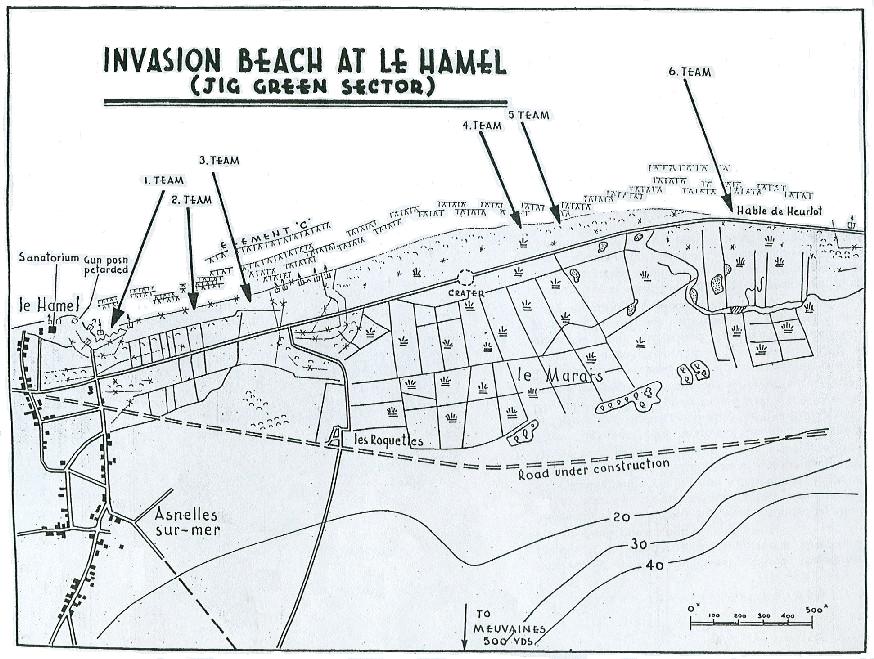
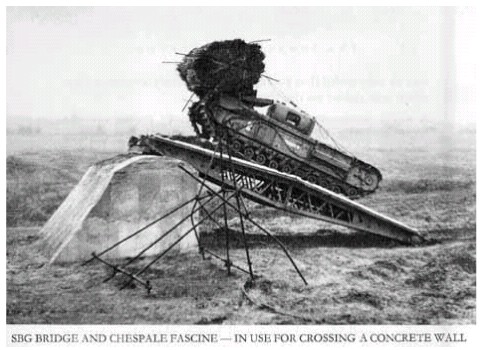
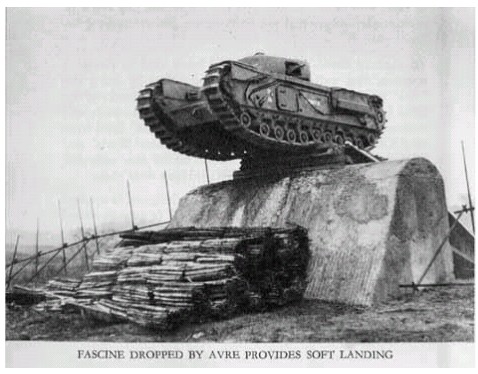
Page 31-34
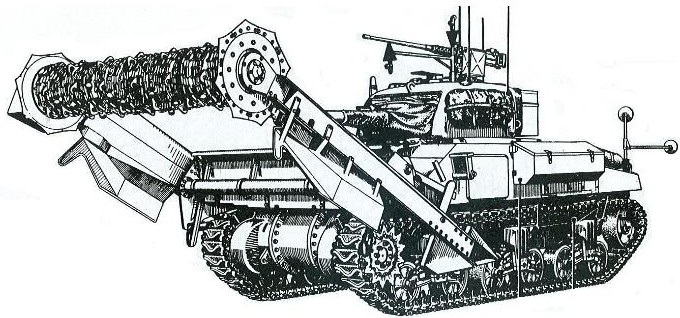
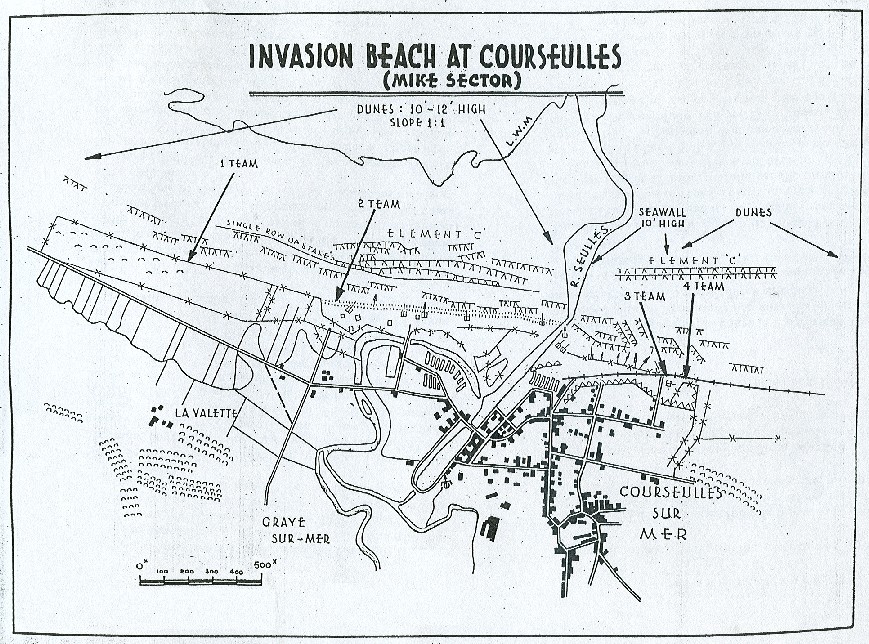





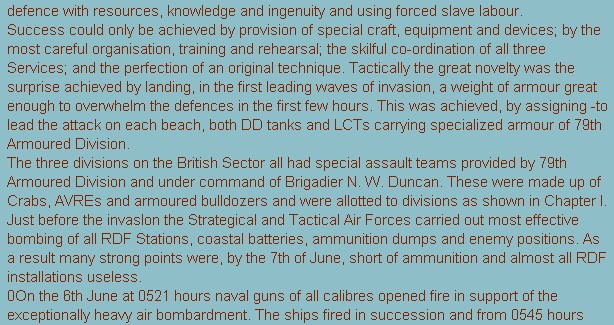

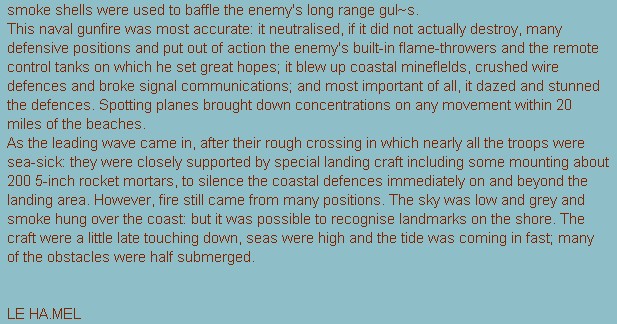
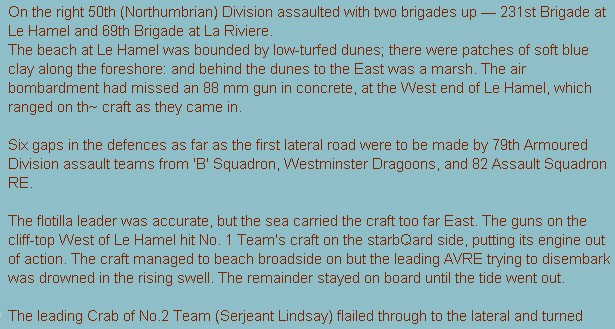
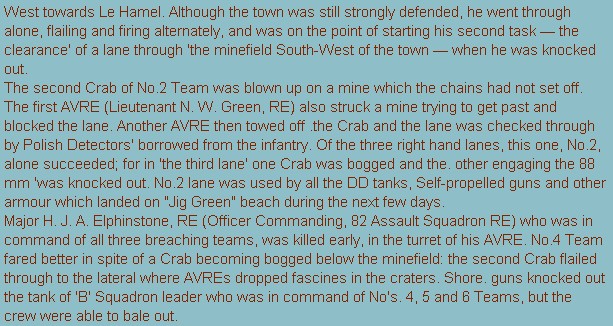
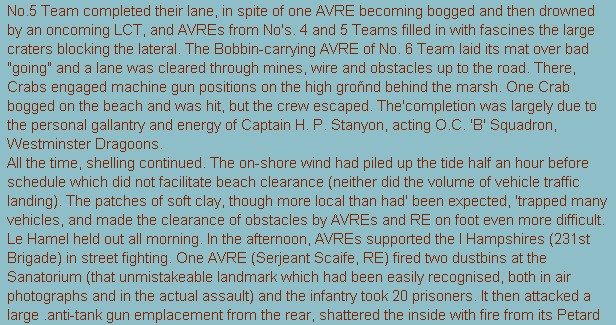
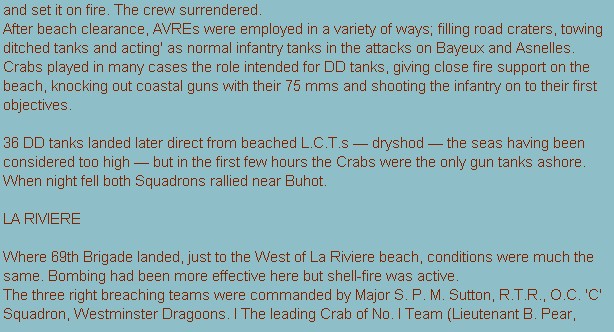
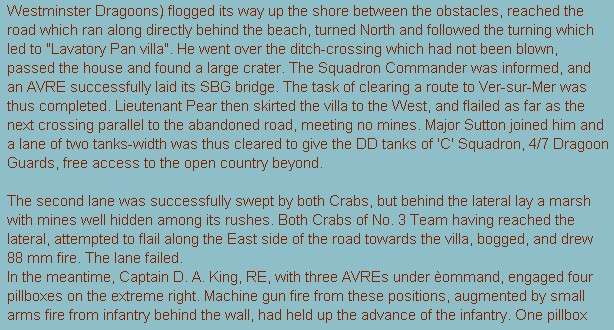
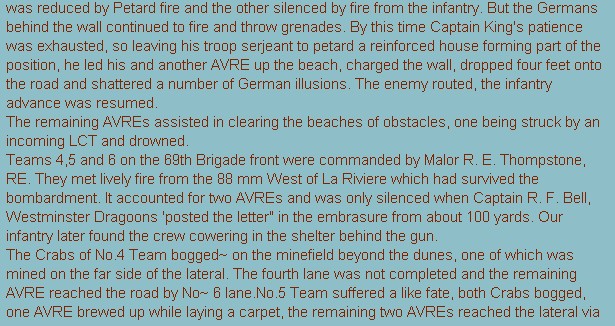
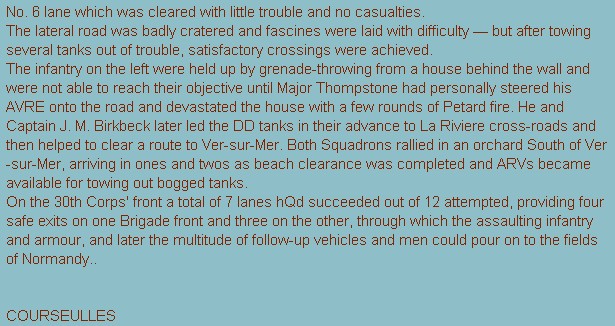

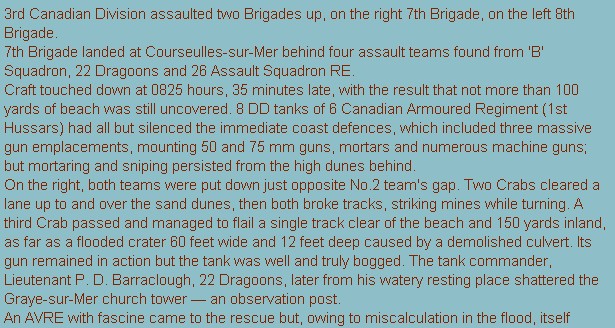
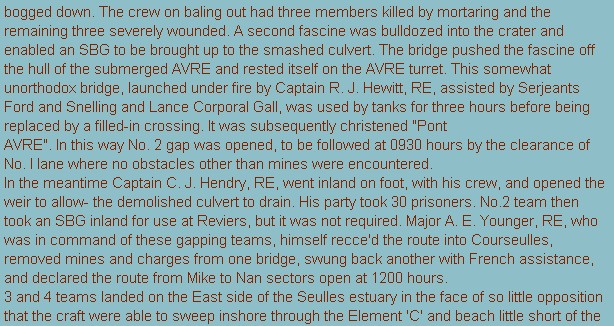
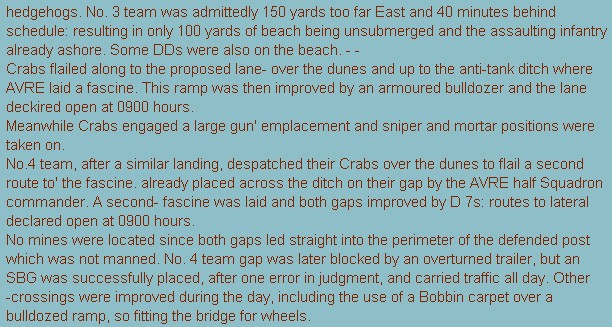
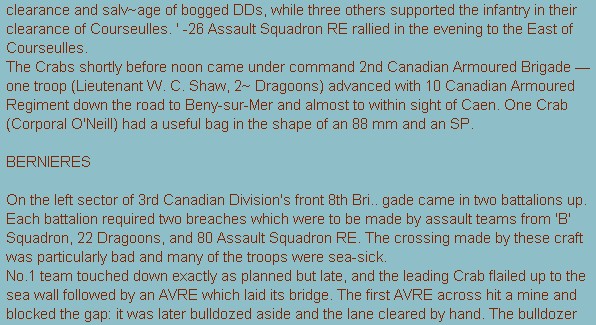
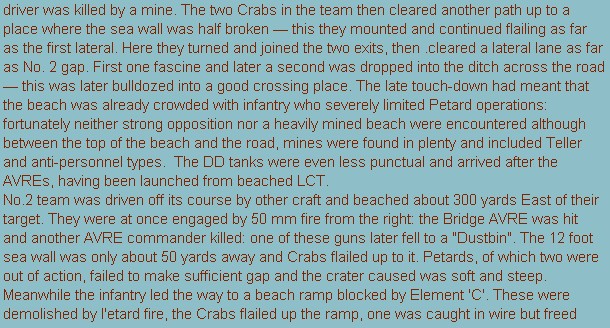
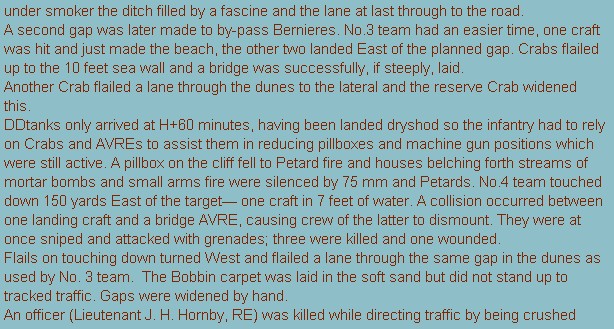
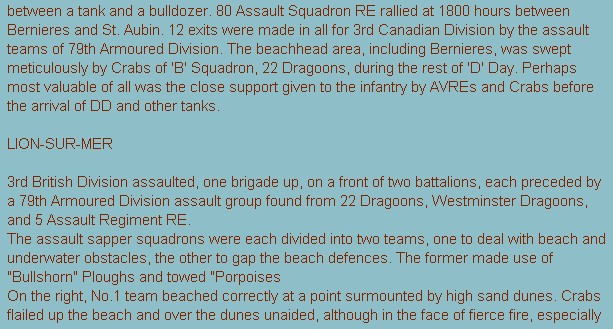
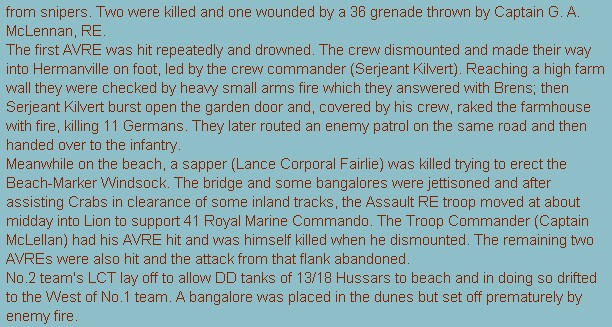
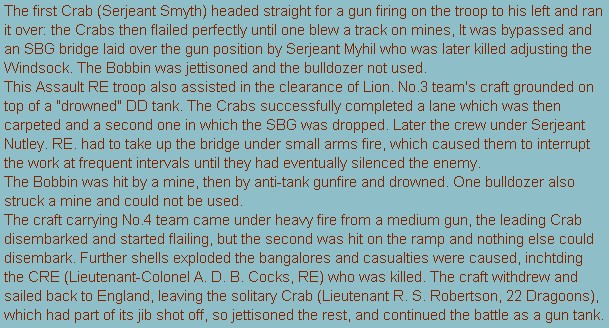
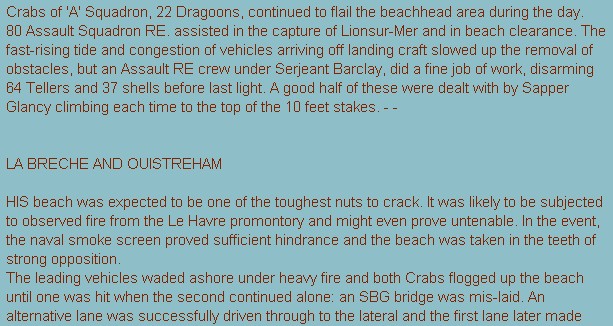
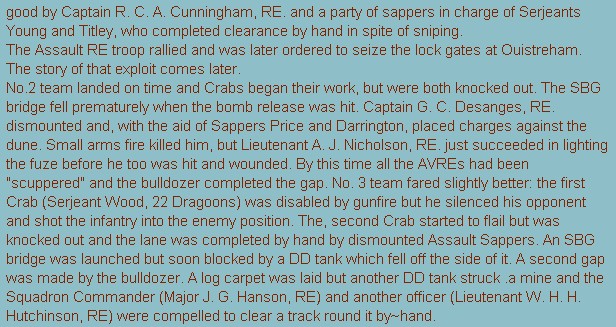
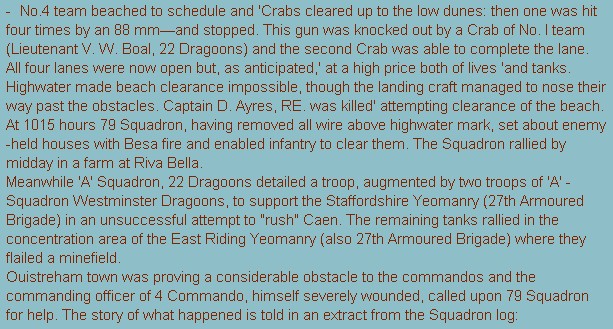
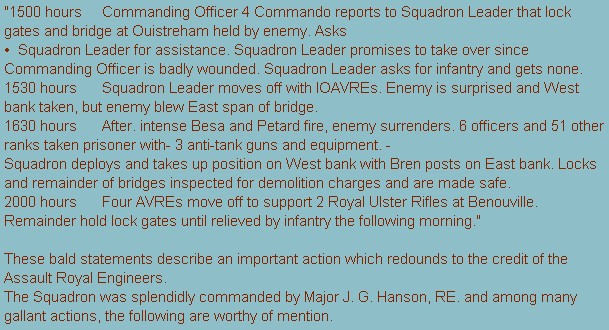
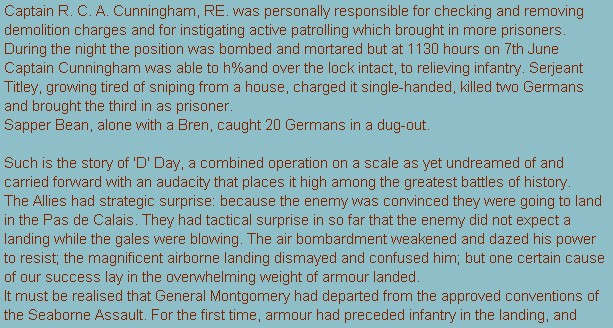
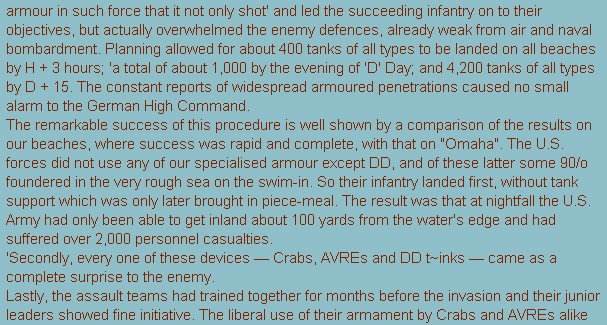
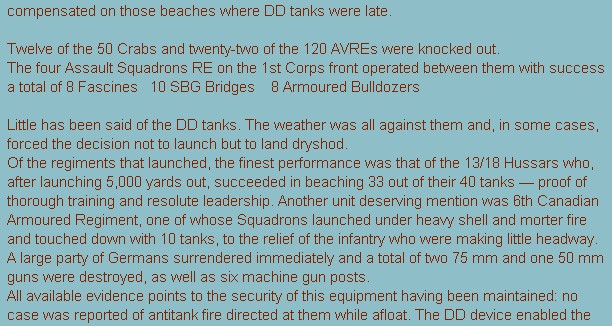
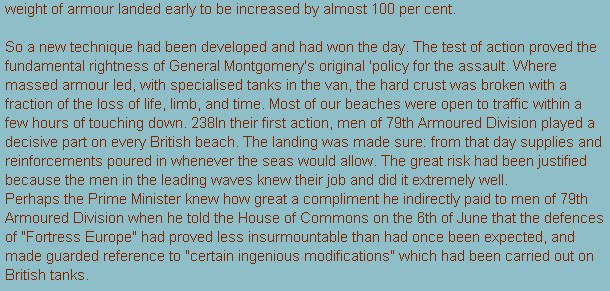
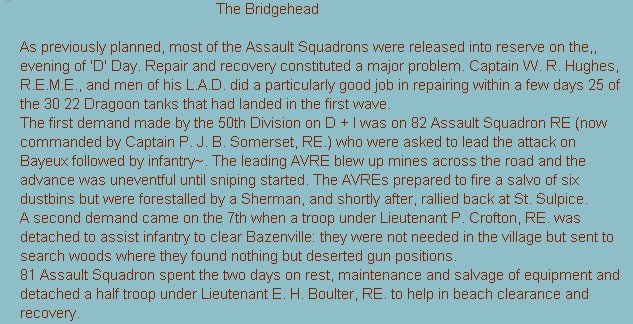
Pages 36-37
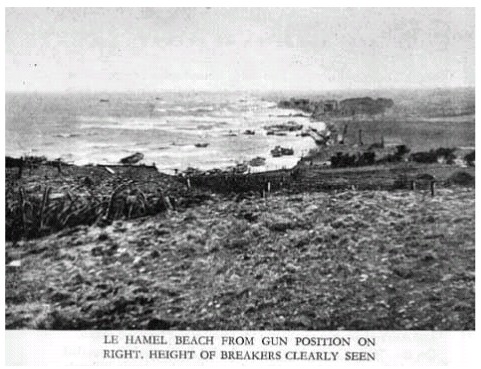
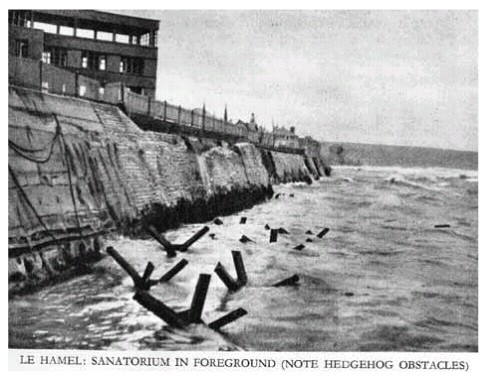
Page 39
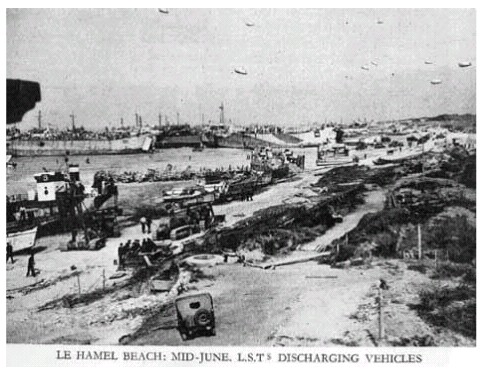
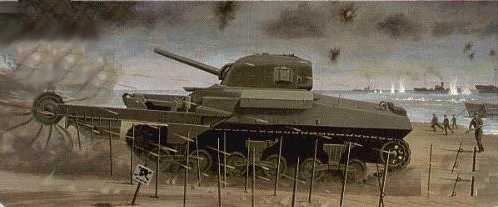
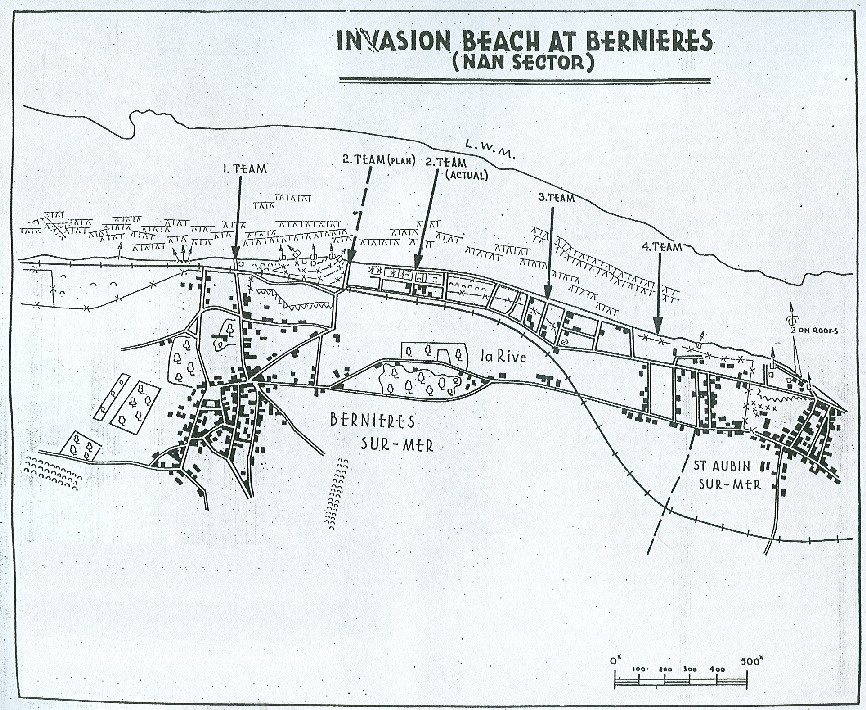
Pages 42-43
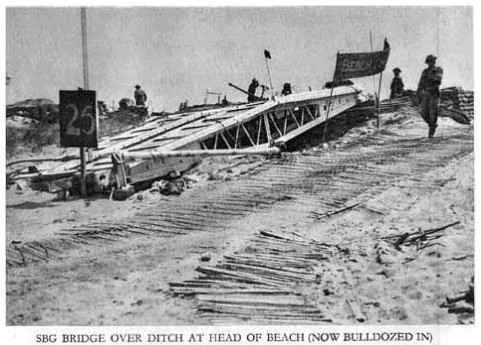
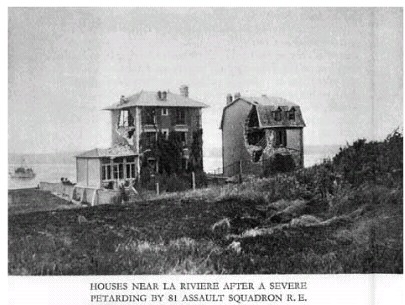
Pages 45-47
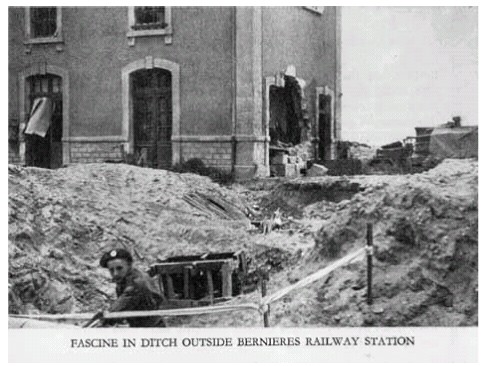
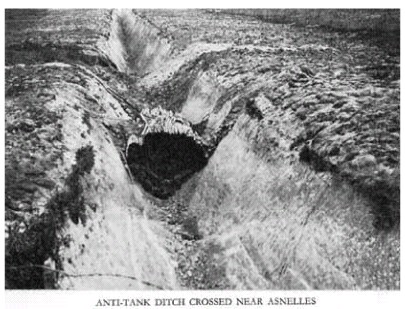
Pages 49-51
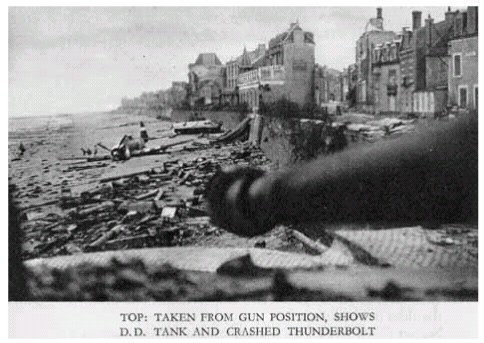
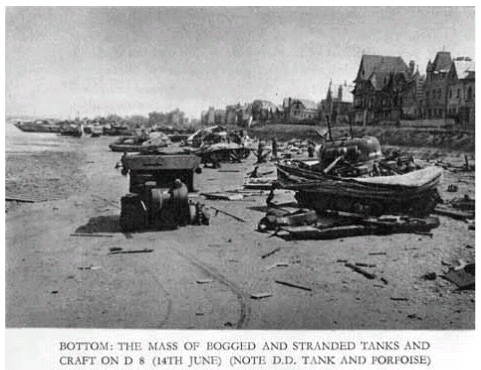
Pages 53-55
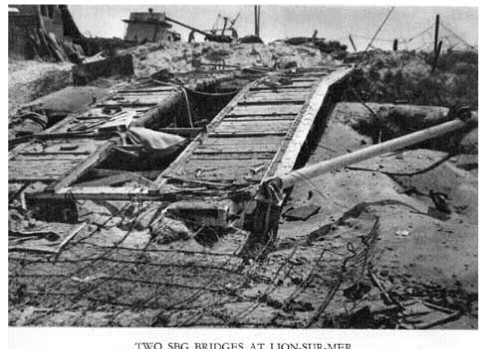
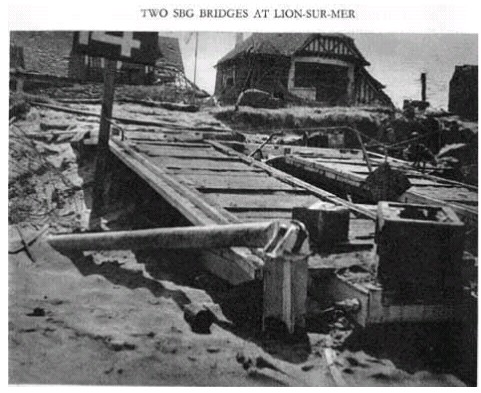
Page 57
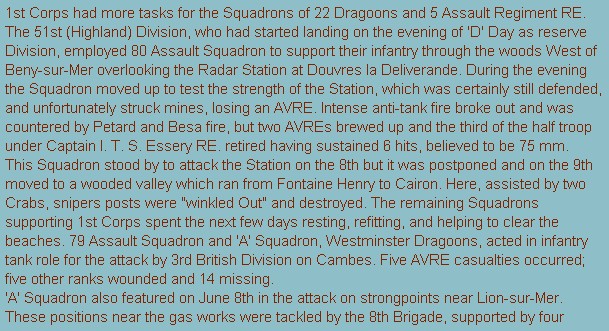
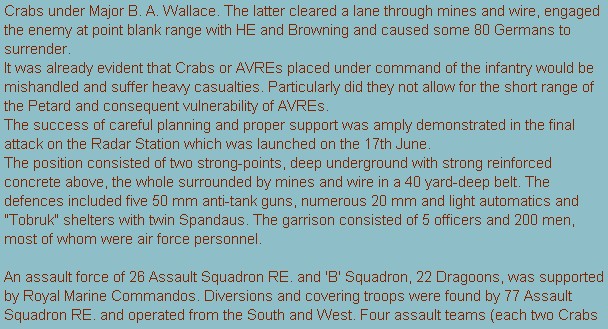
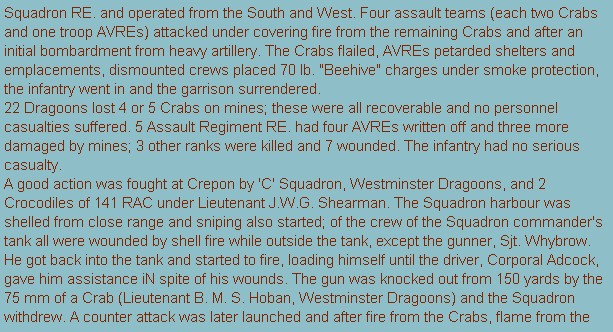
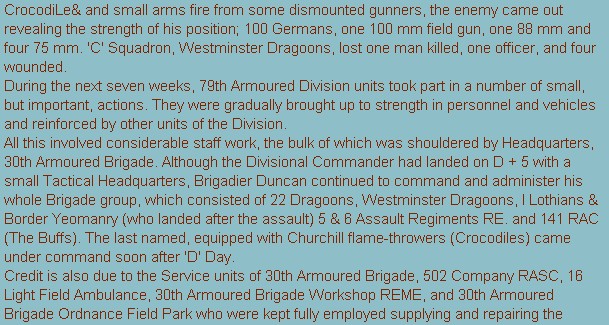
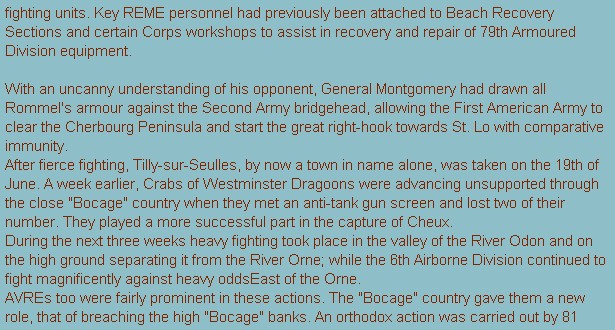
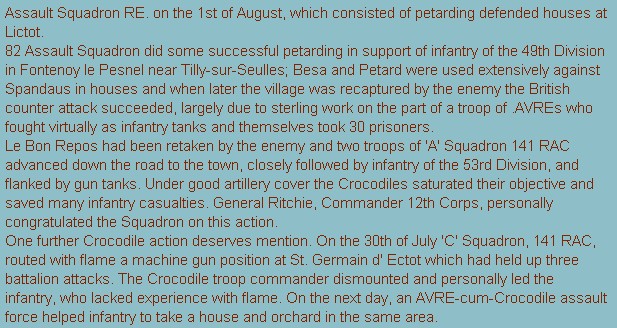
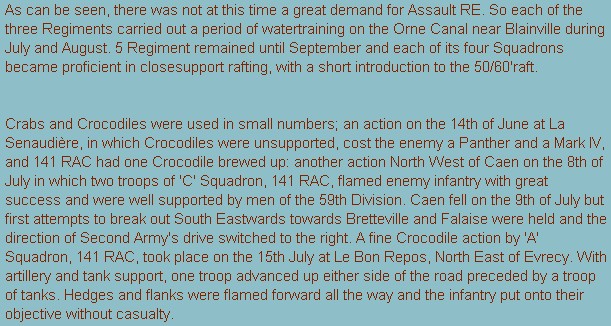
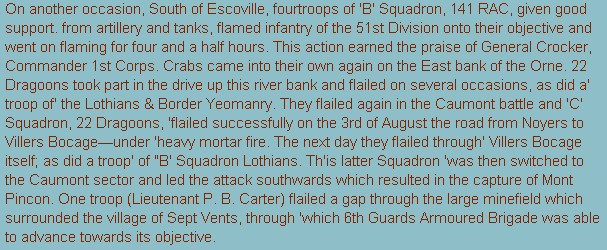
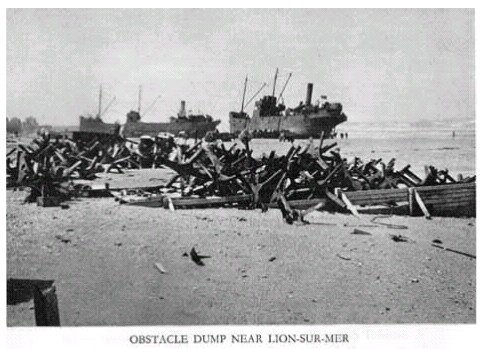
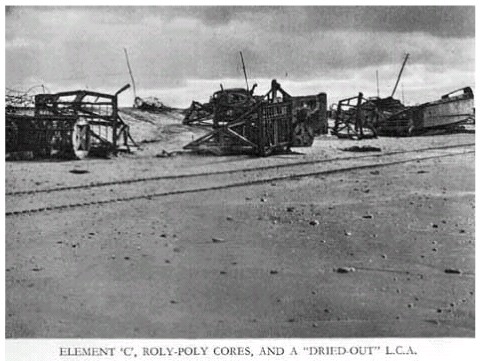
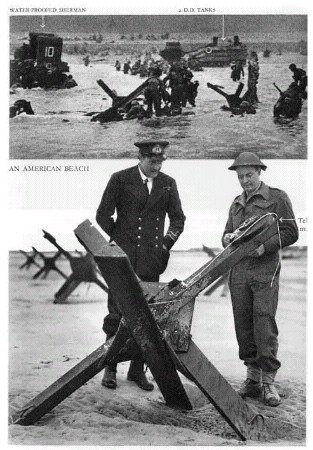
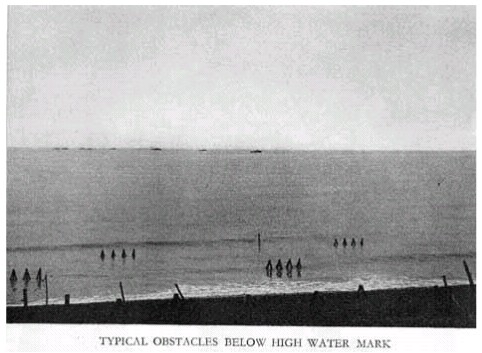
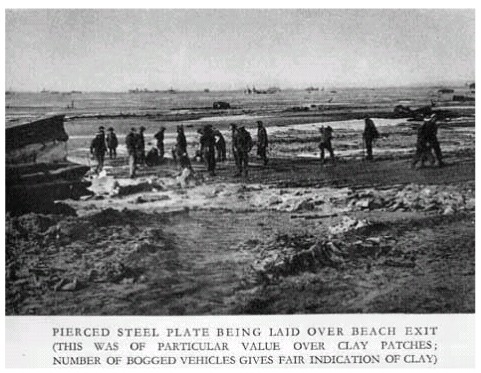
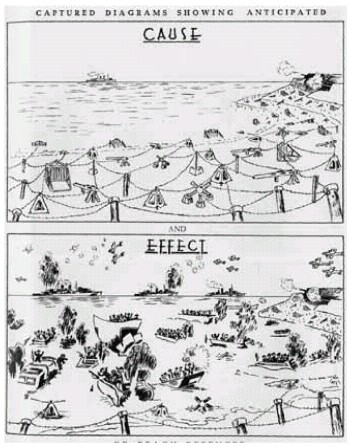
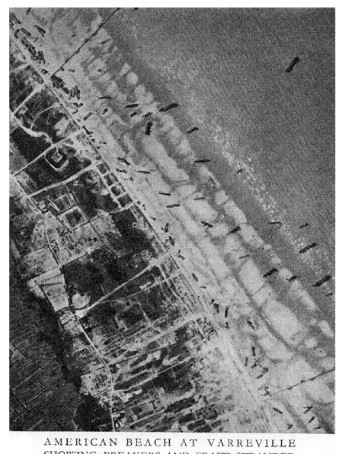
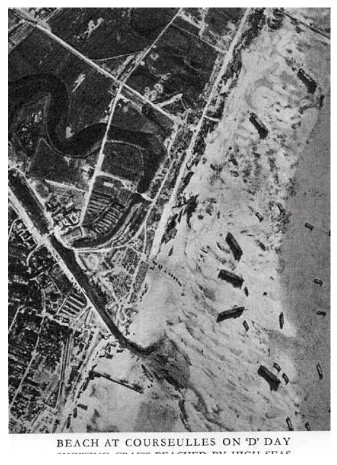
Page 63
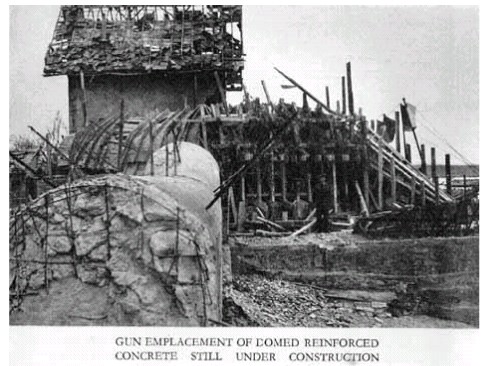
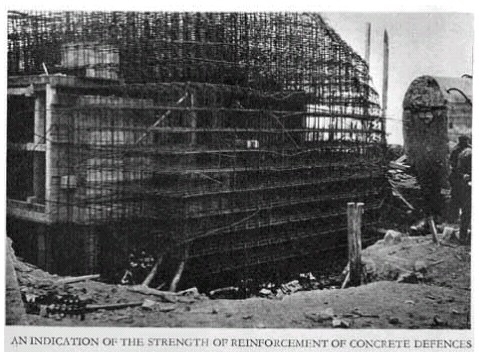
Page 65
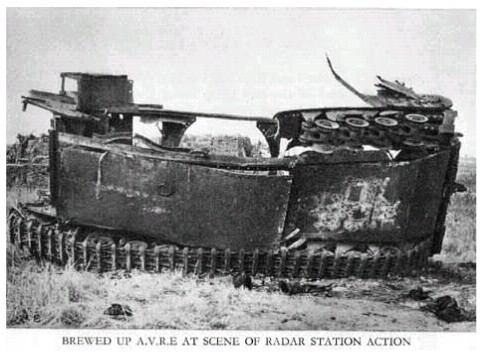
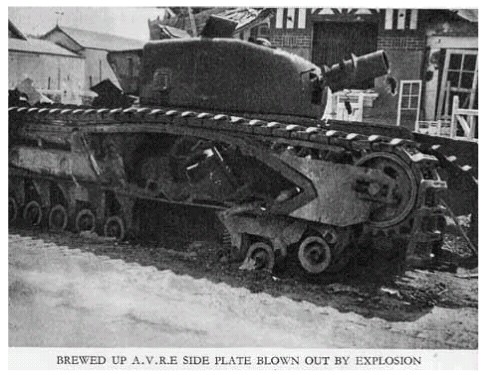
Page 67
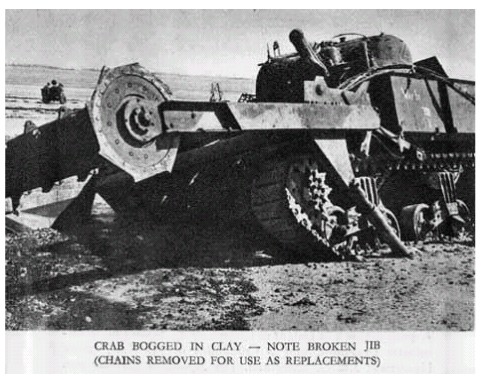
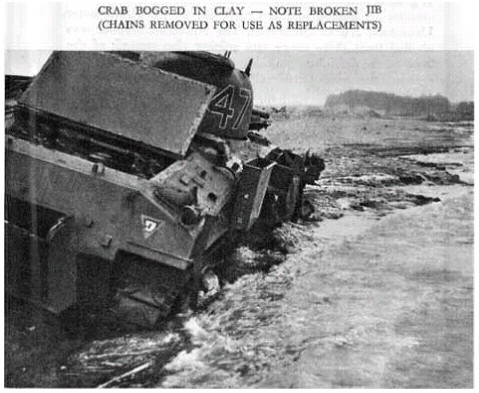
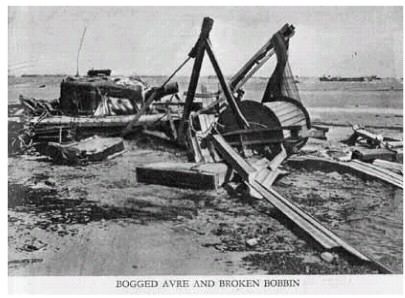
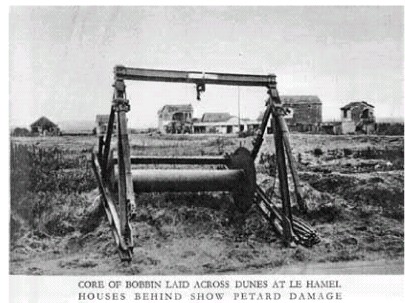
BEFORE
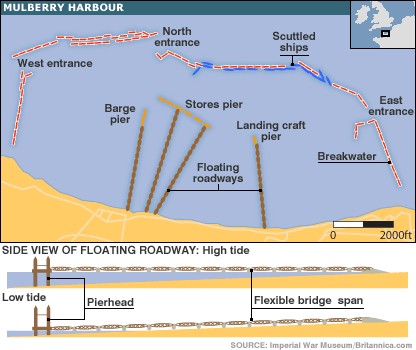
AFTER
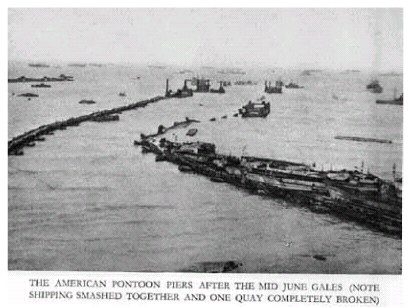
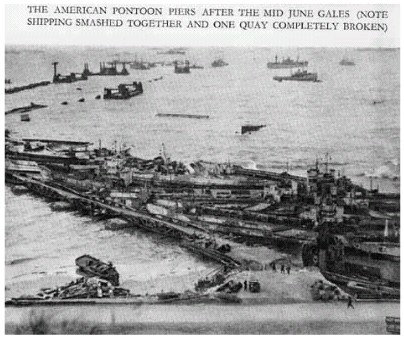
Pages 71-76
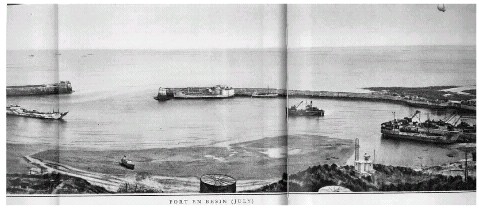
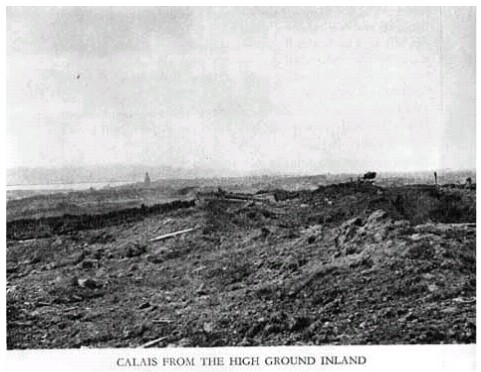
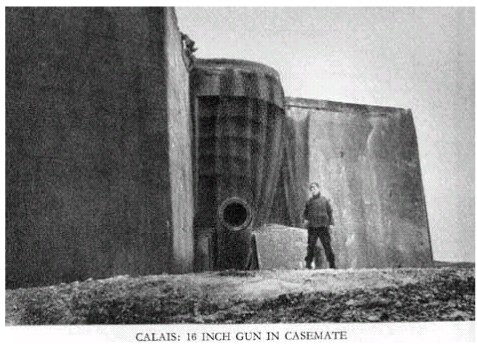
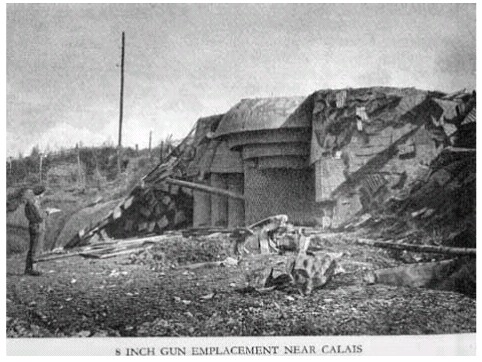
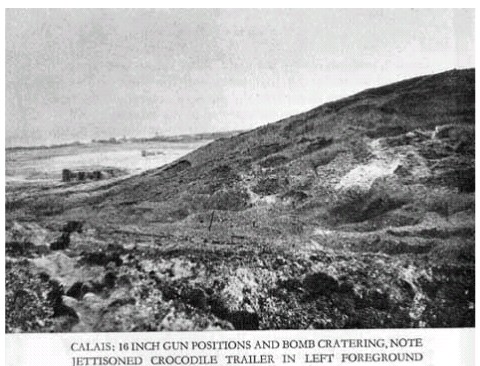
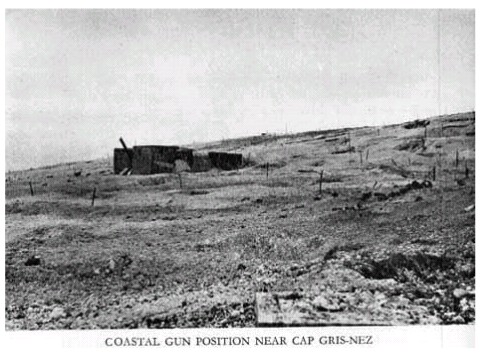
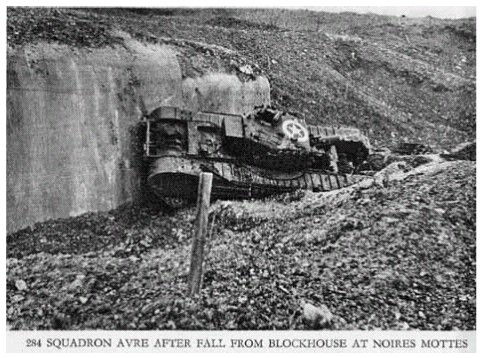
Pages 77-80
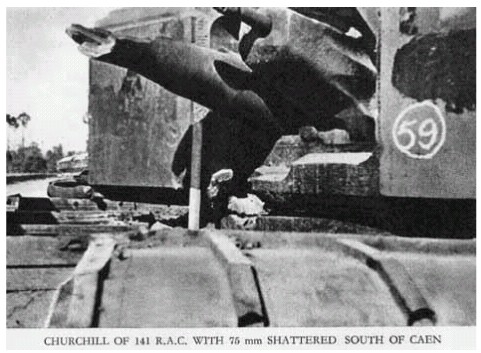
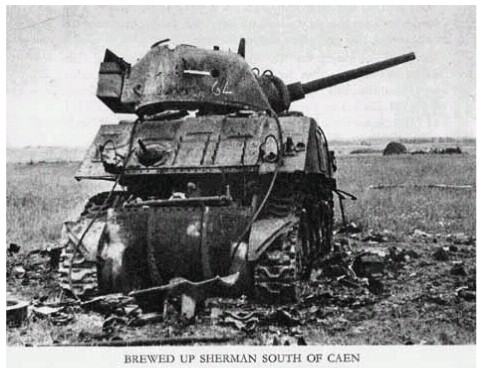
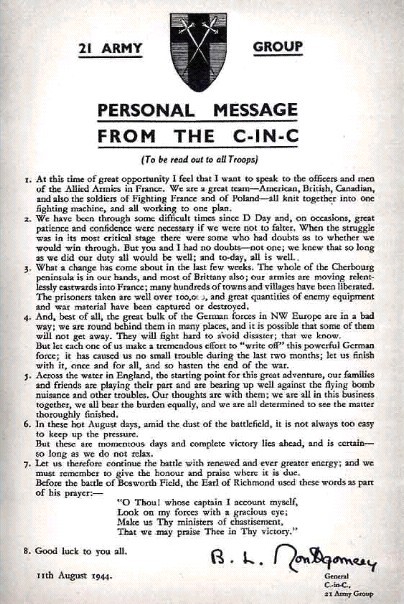
Pages 82-83
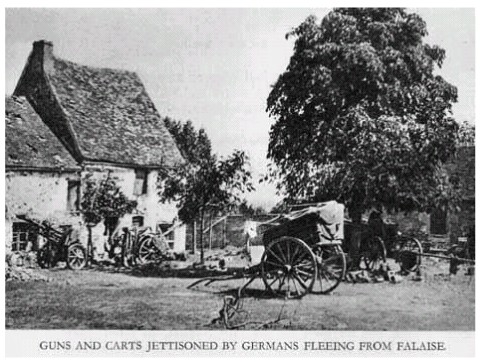
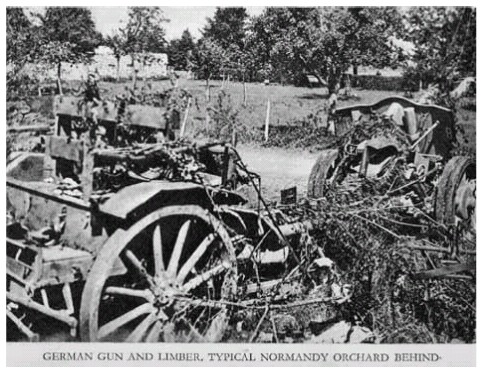
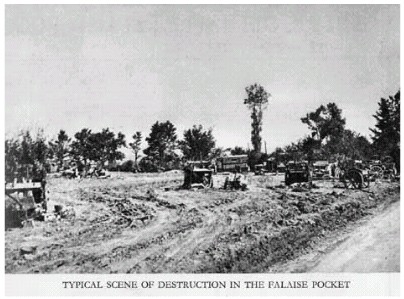
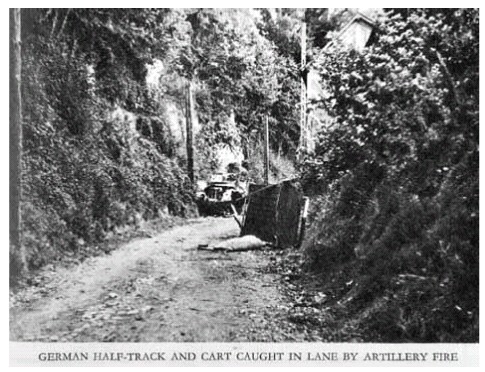
Page 86-90
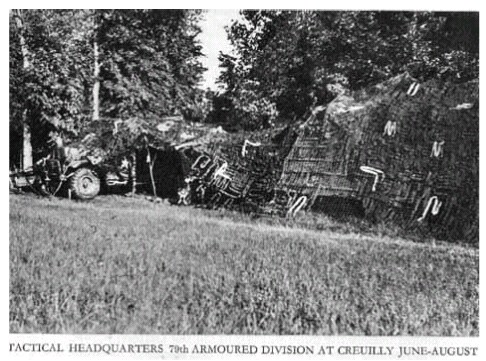
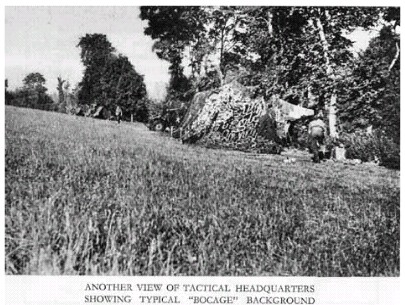
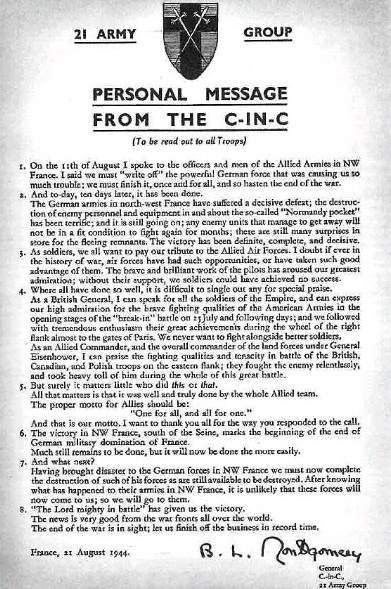
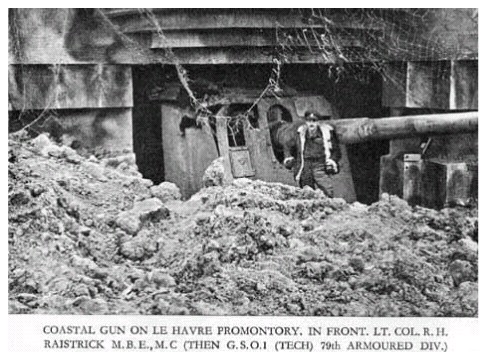
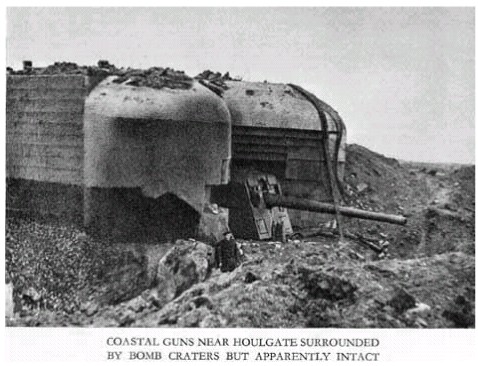
Page 93
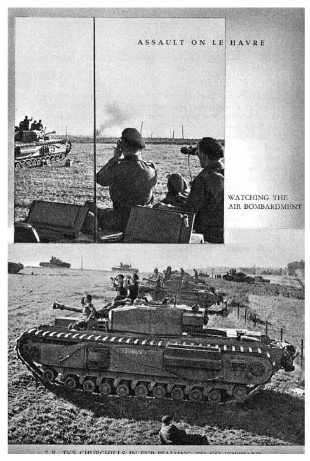
Page 95
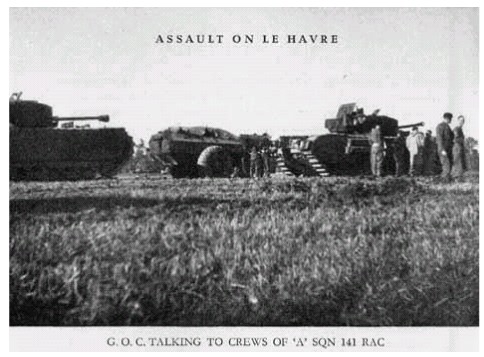
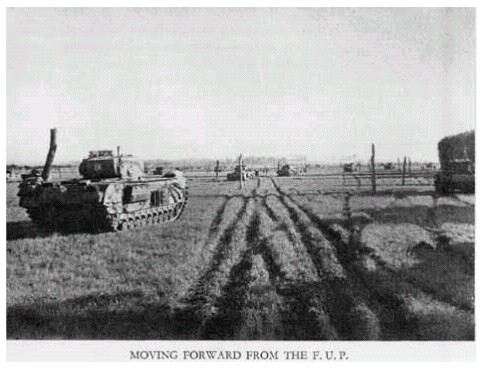
Page 97
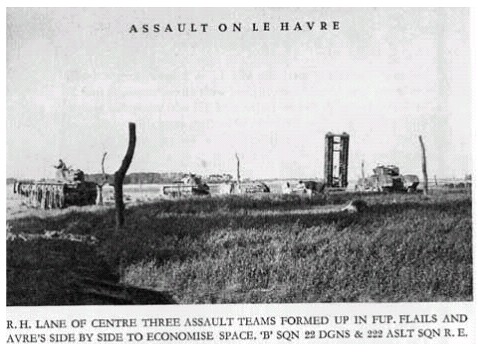
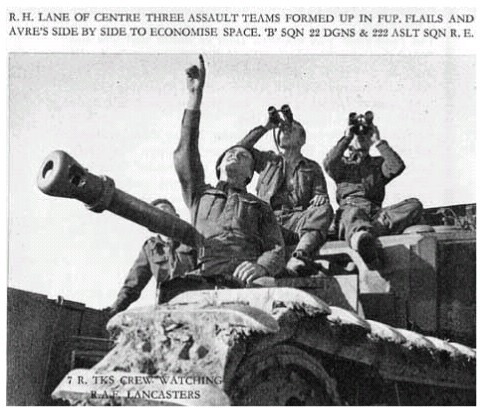
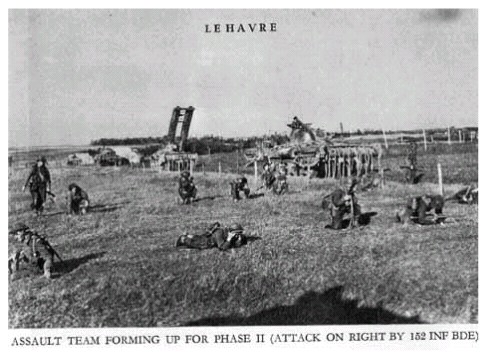
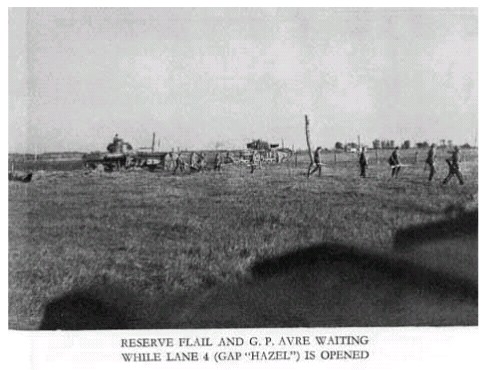
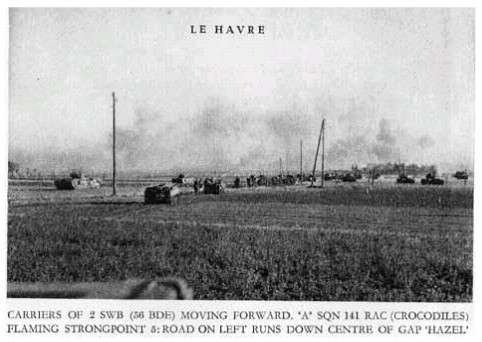
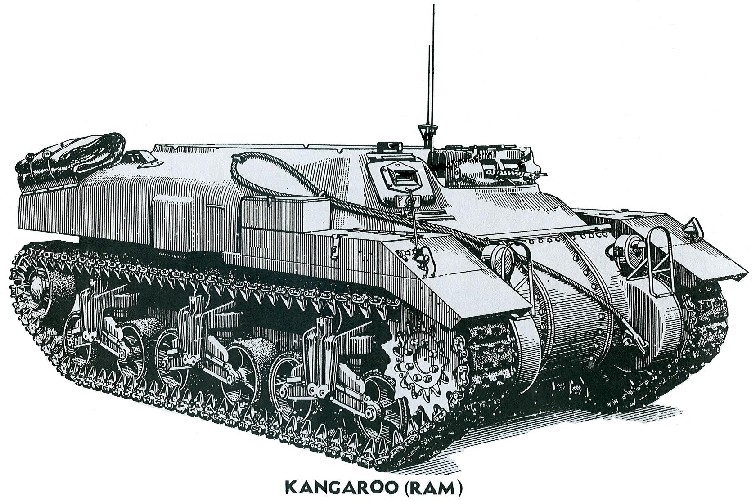
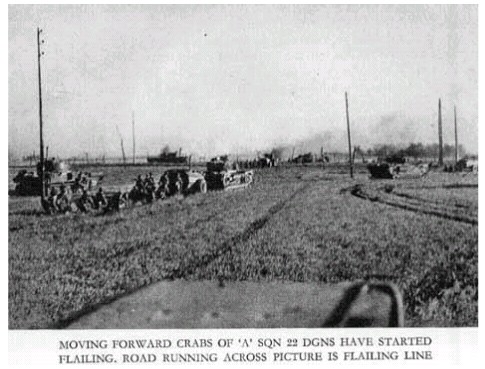
Pages 101-103
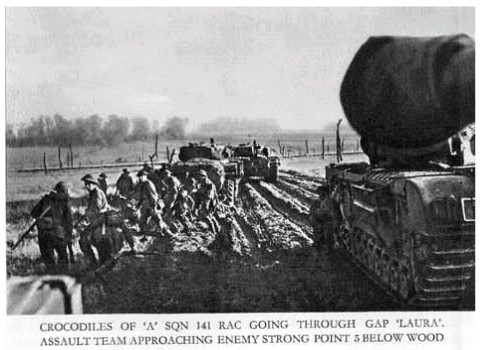
Pages 105-106
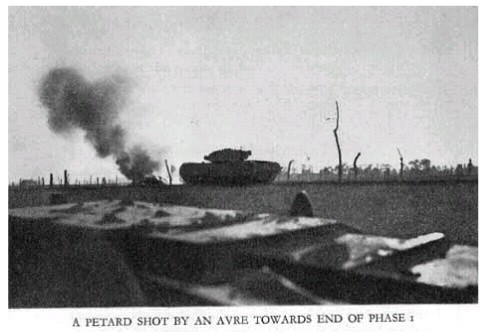
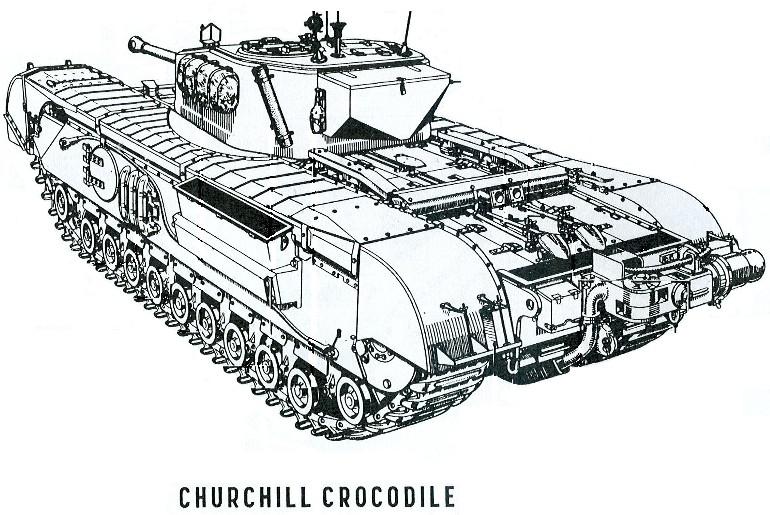
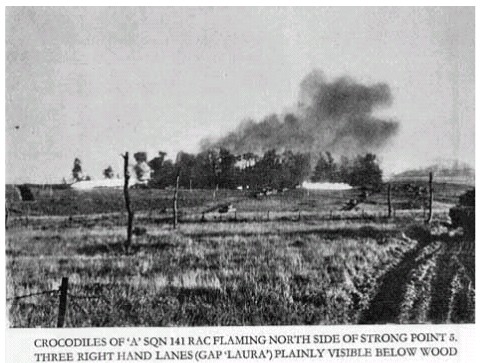
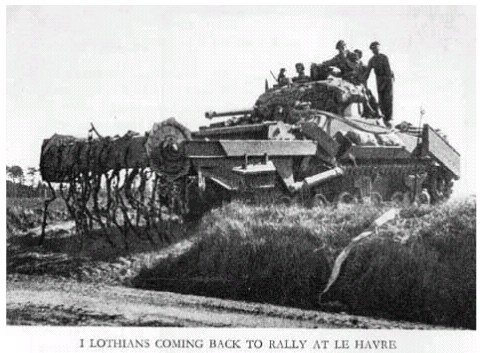
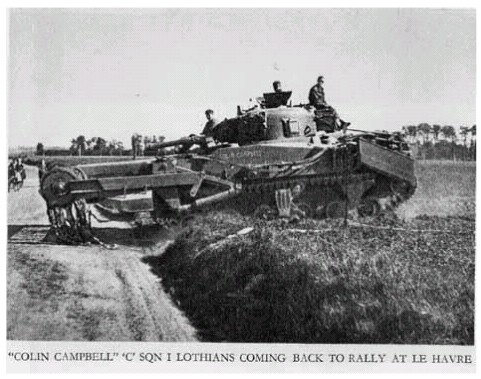
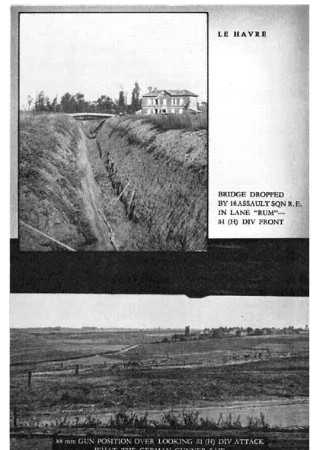
Page 109
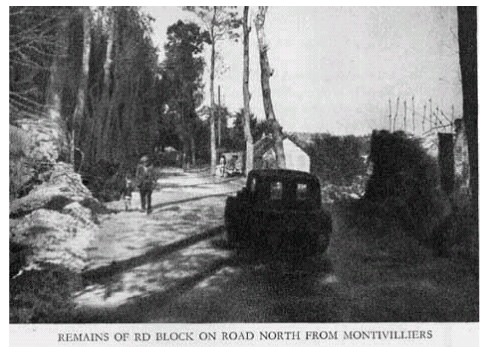
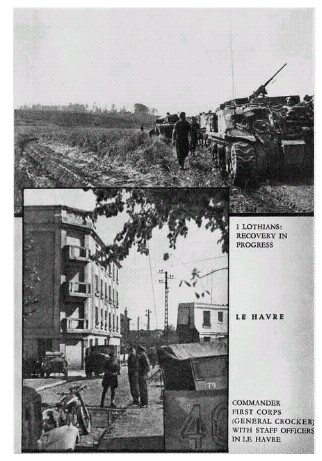
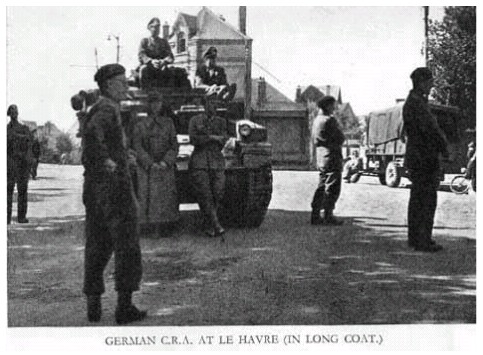
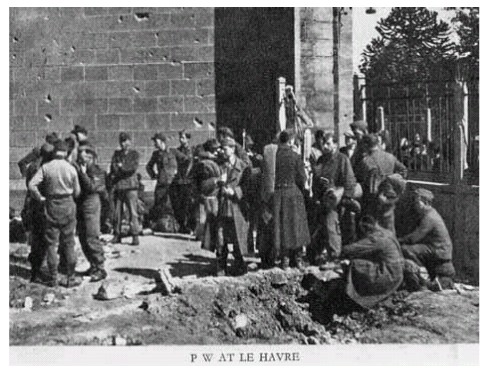
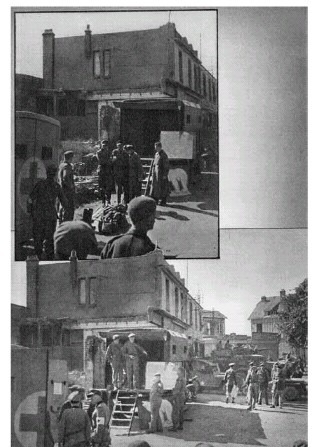
Page 114
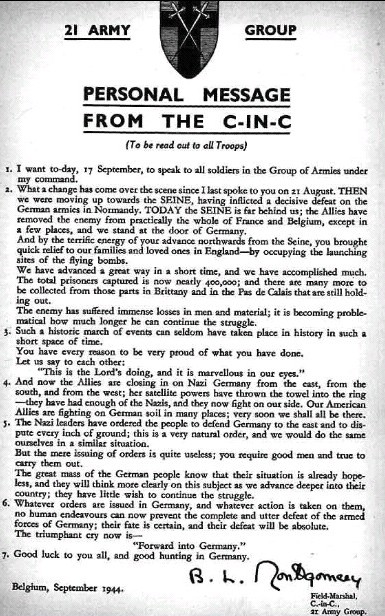
Page 117
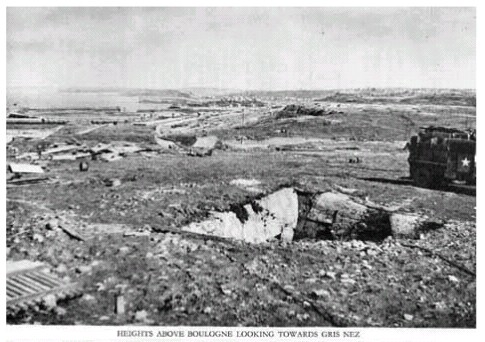
Page 119
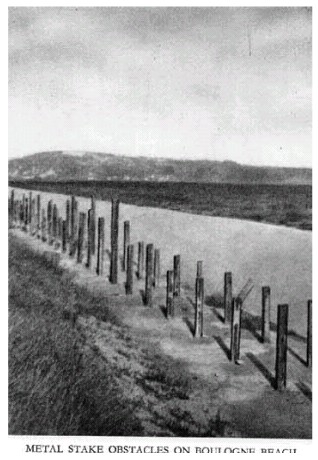
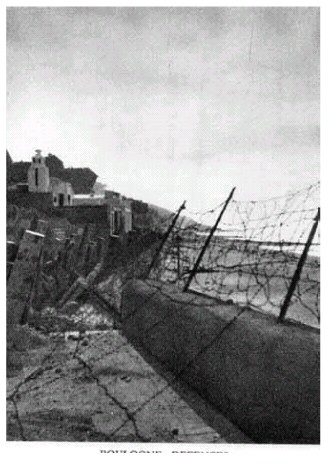
Page 121
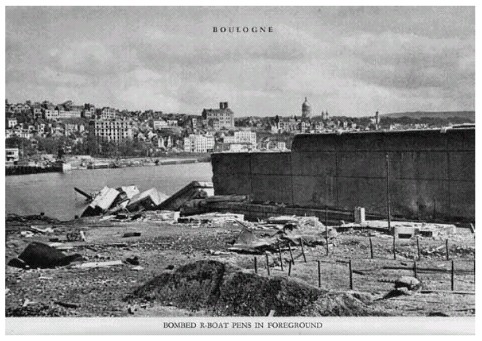
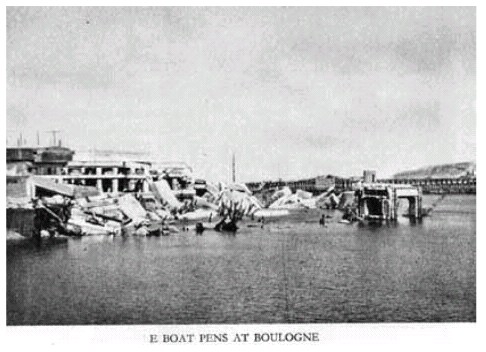
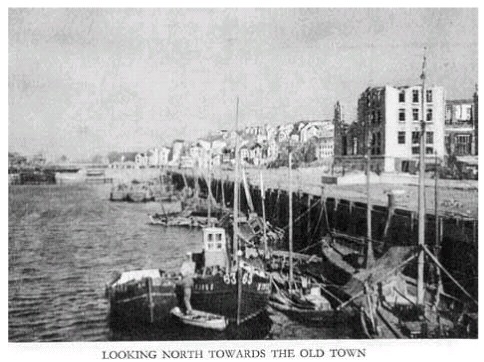
Page 123
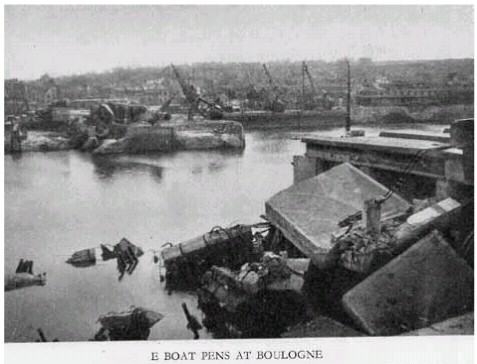
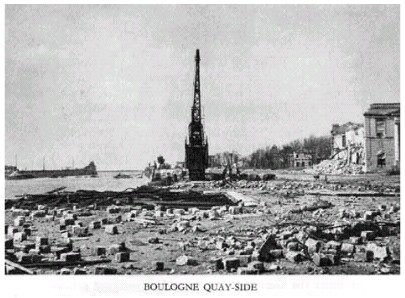
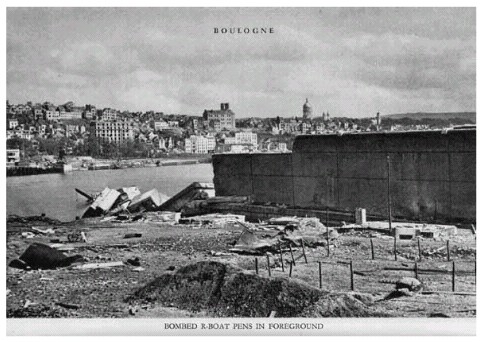
Page 125
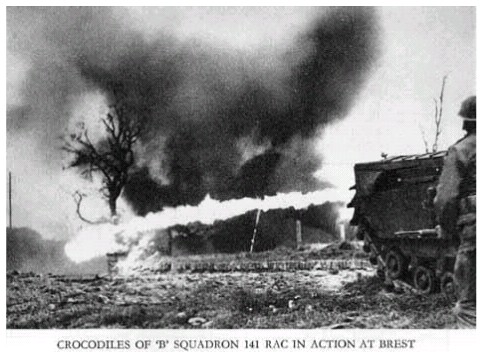
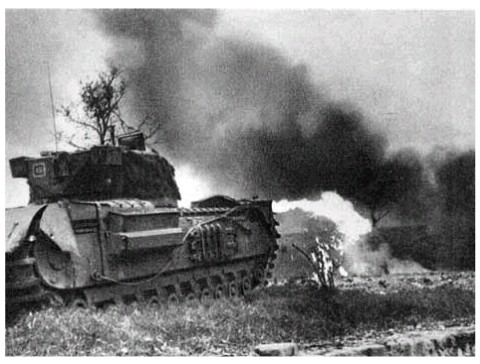
Page 127
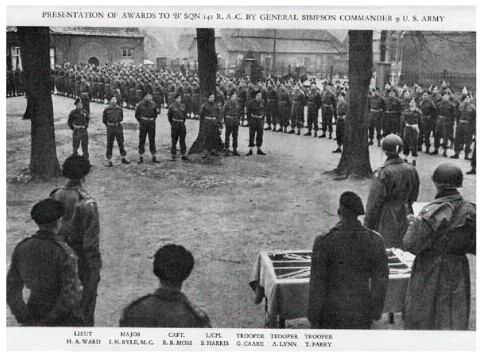
Page 129-143
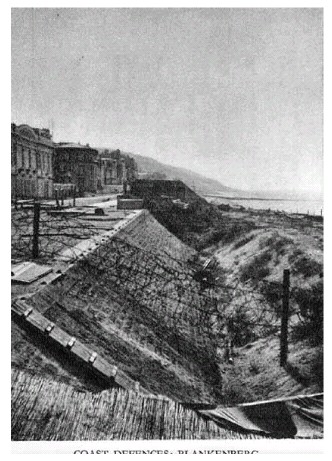
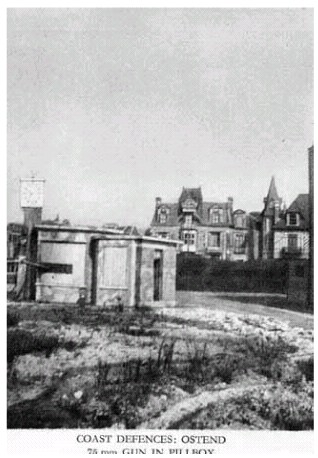
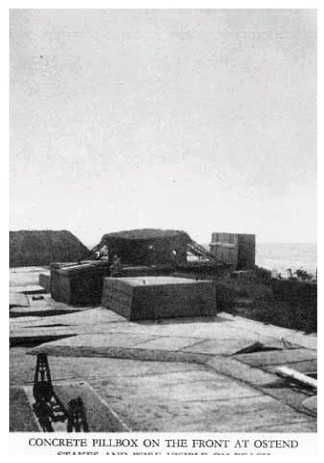
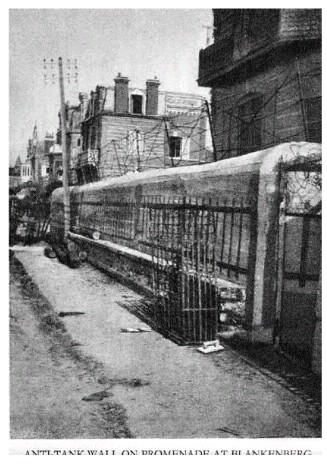
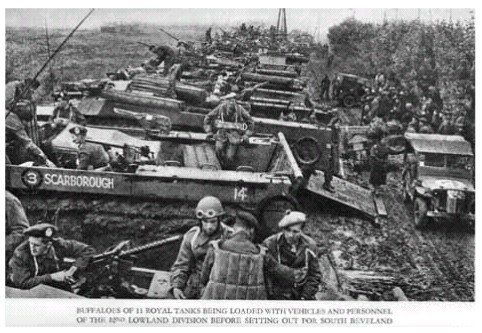
Page 147-151
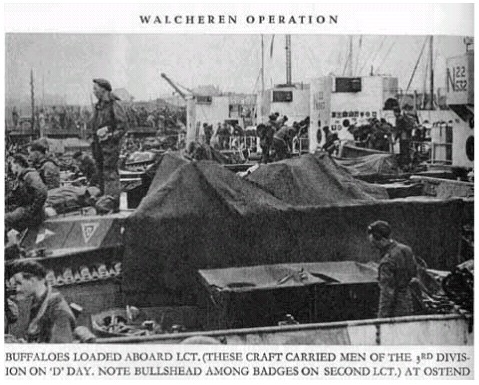
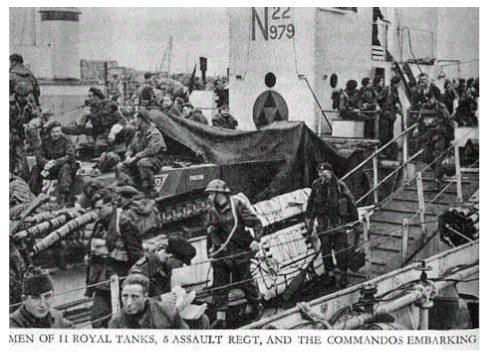
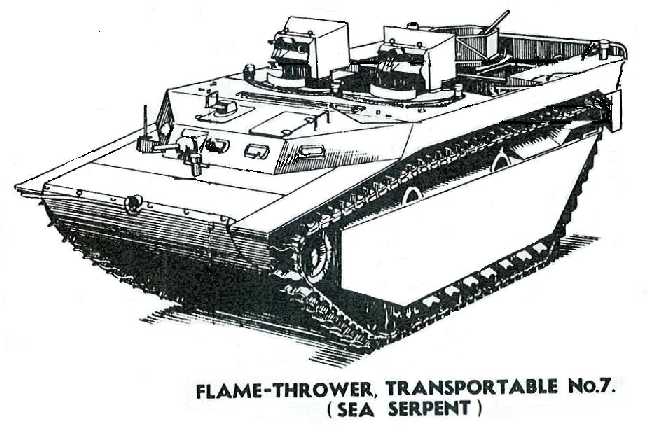
Page 153
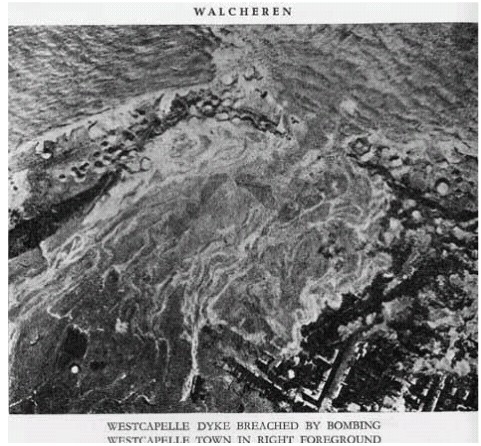
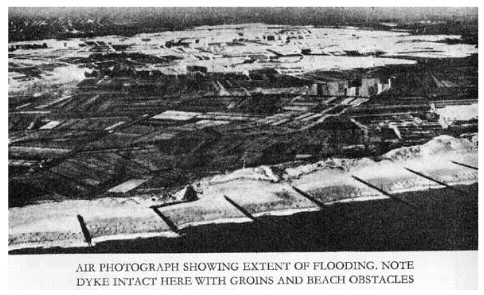
Page 155
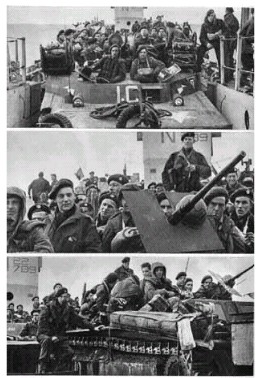
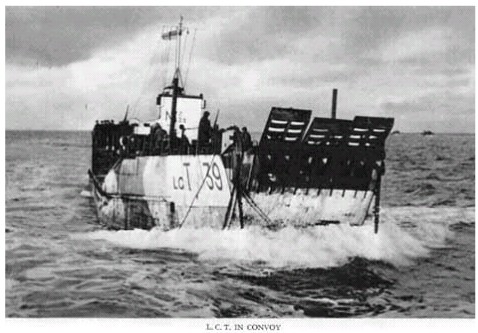
Page 158-159
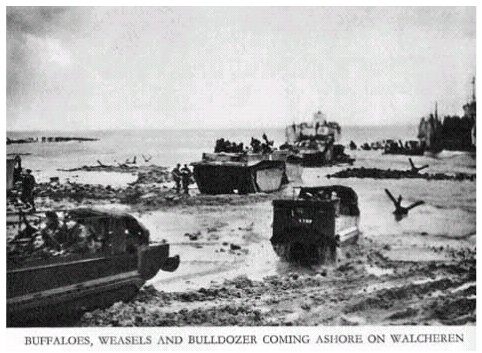
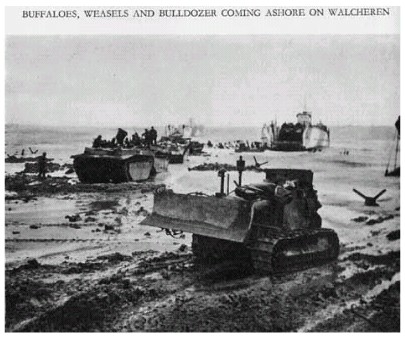
Page 161
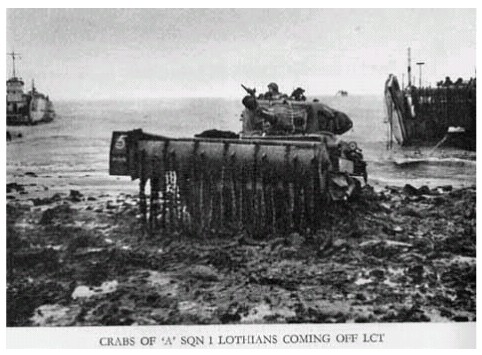
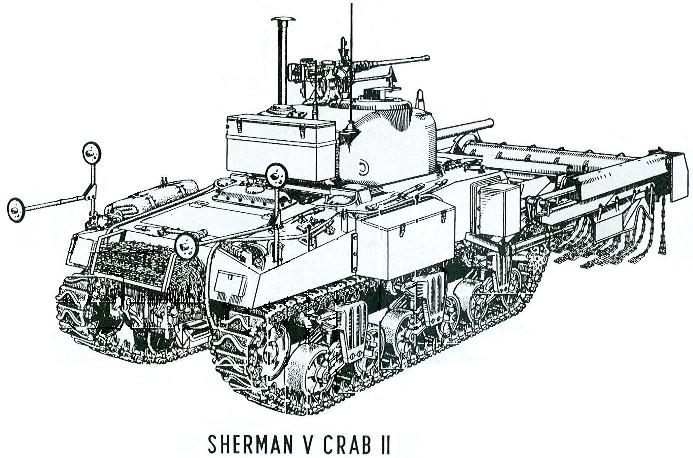
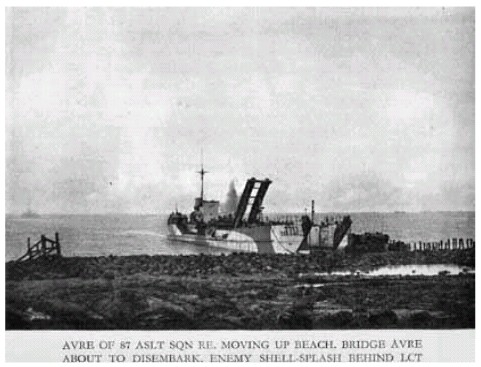
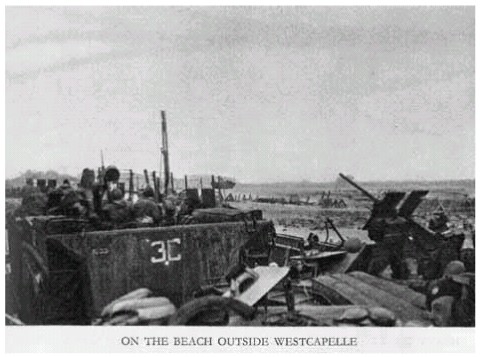
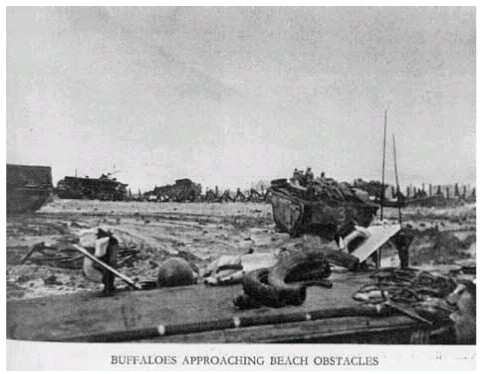
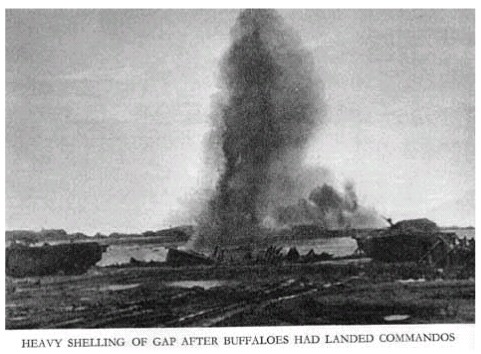
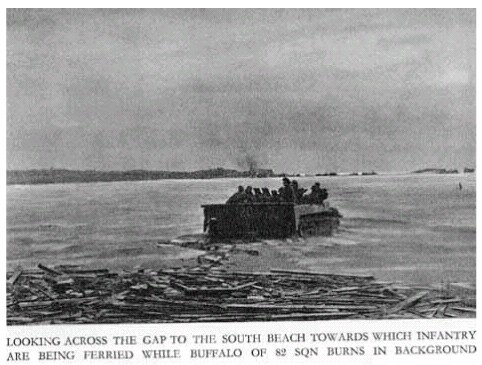
Page 165
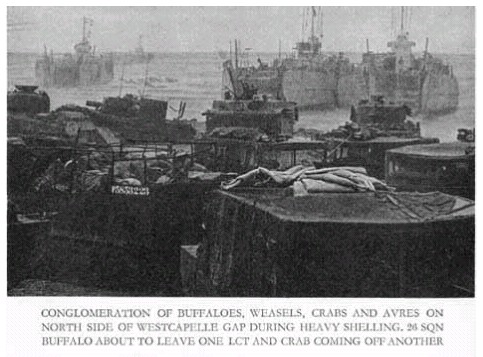
Page 167
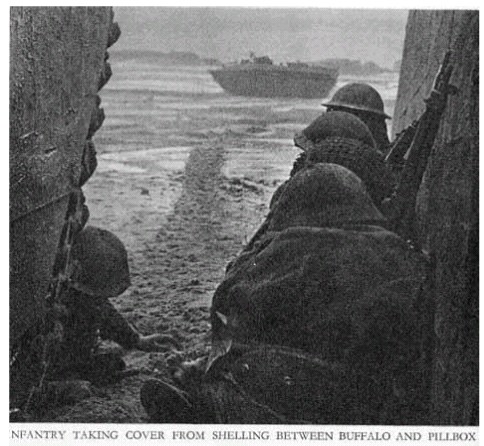
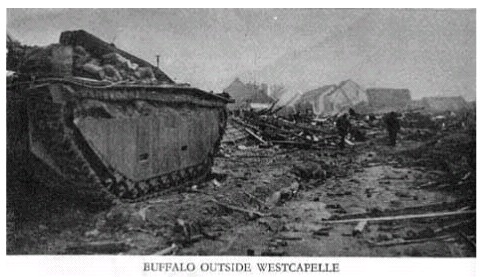
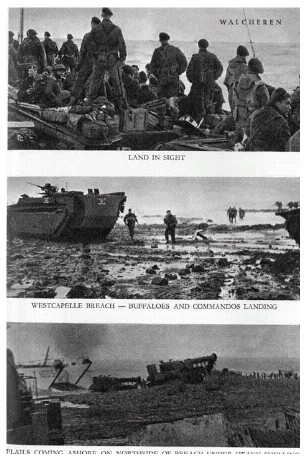
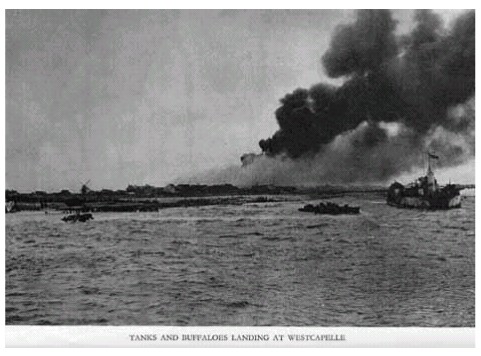
Page 171
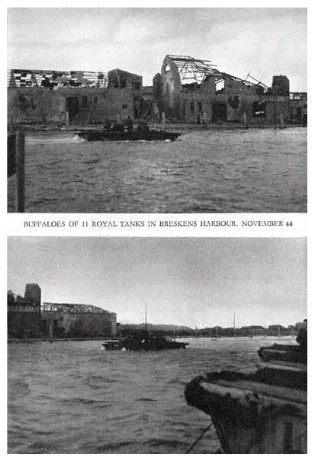
Page 173
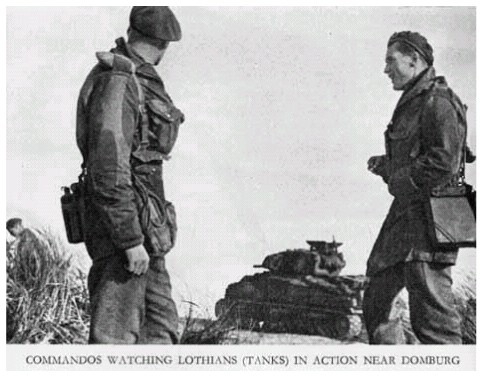
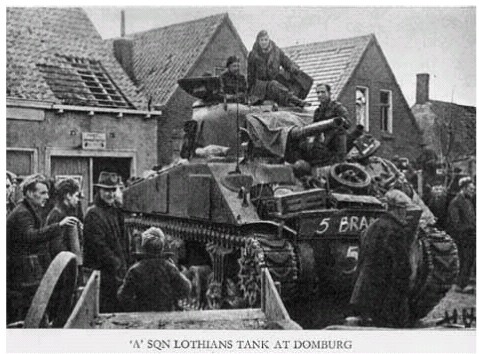
Page 175
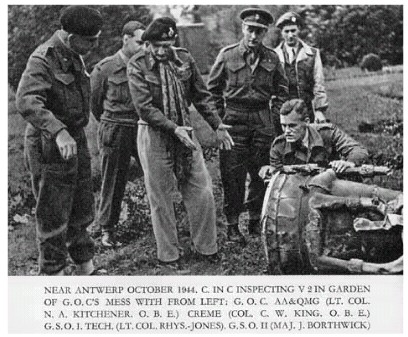
Page 177
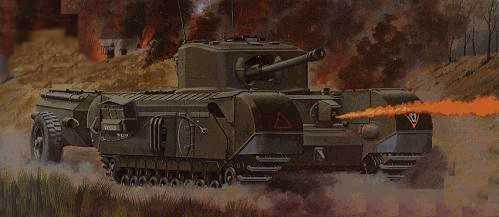
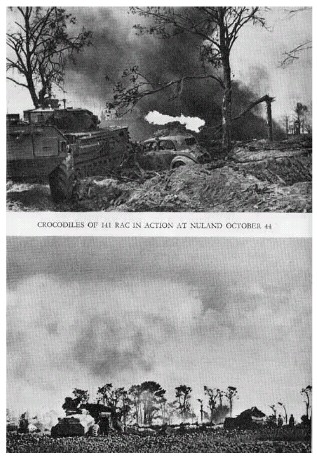
Page 179
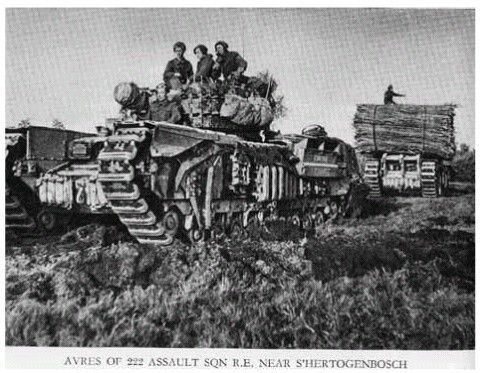
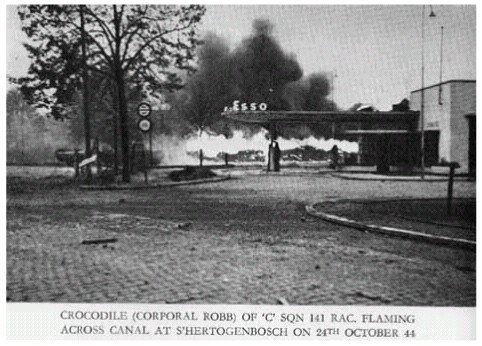
Pages 181-183
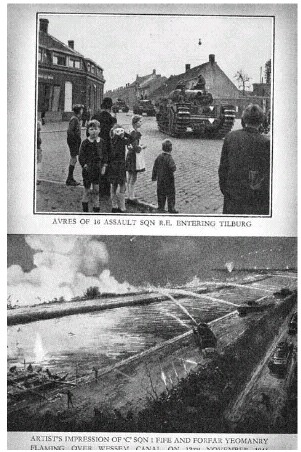
Pages 185-187
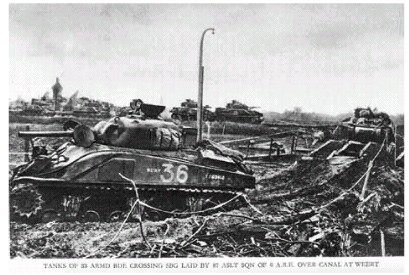
Page 189
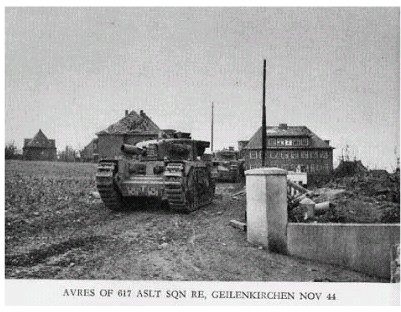

Pages 191-199
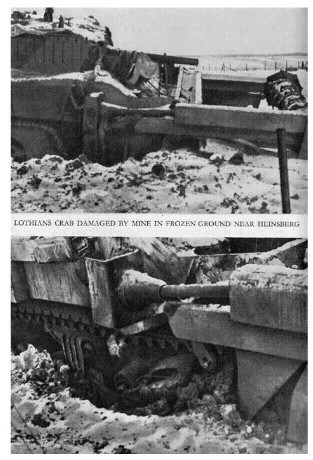
Pages 201-203
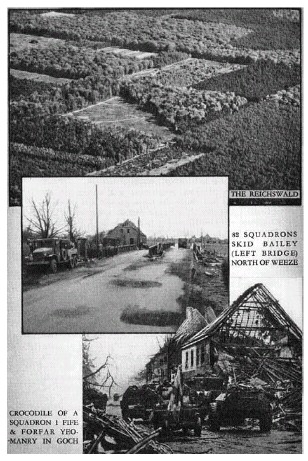
Page 205
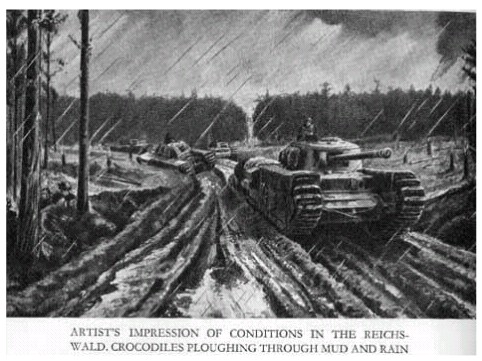
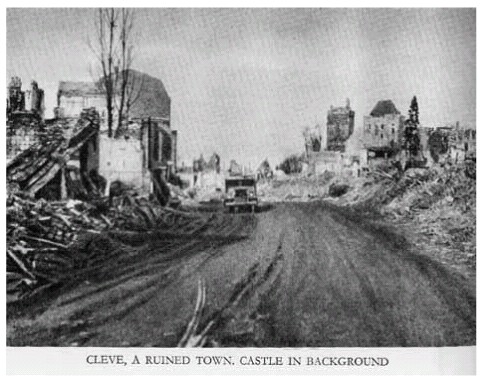
Page 207
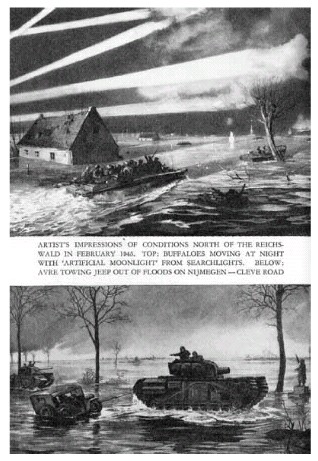
Page 209
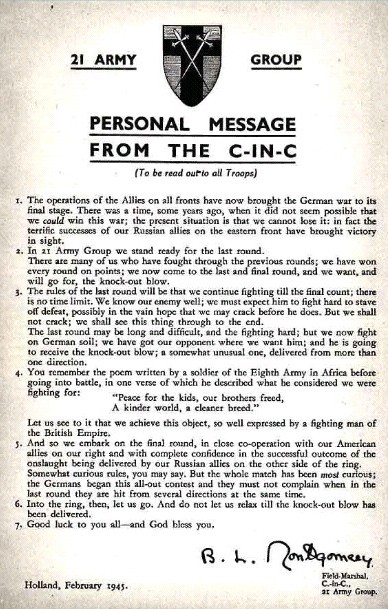
Pages 211-215
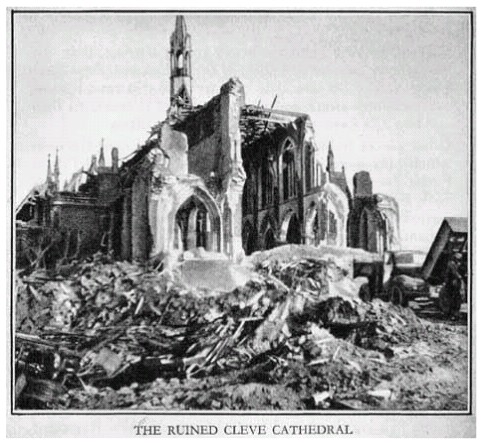
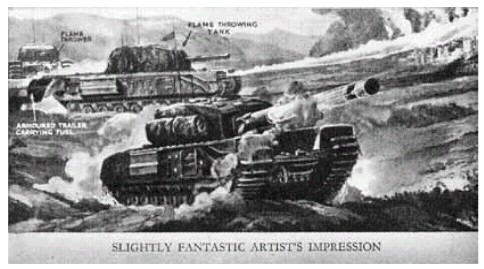
Page 217
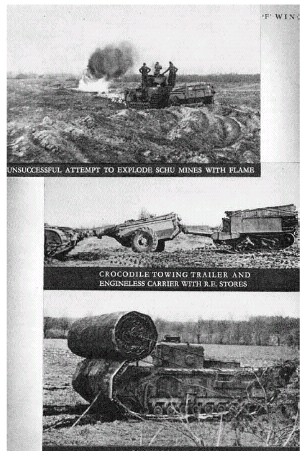
Page 219

Page 221
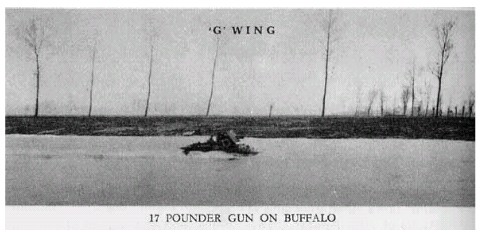
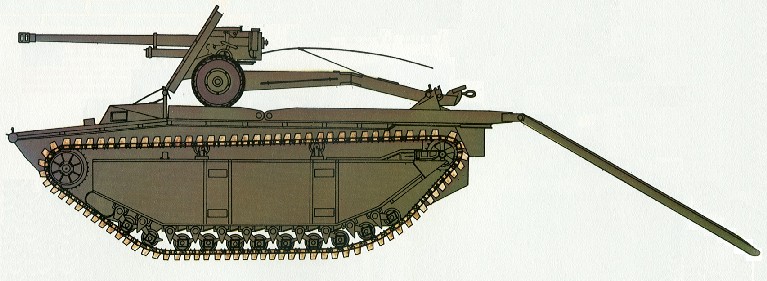
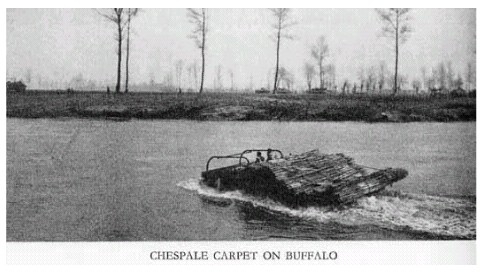
Page 223
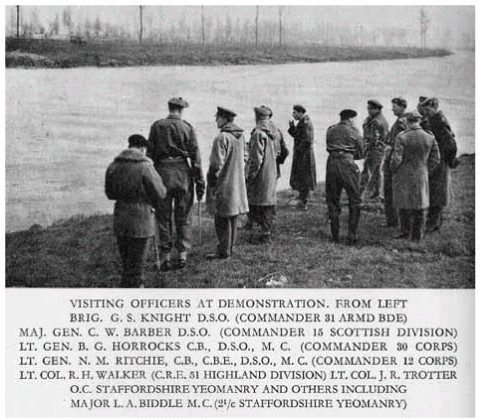
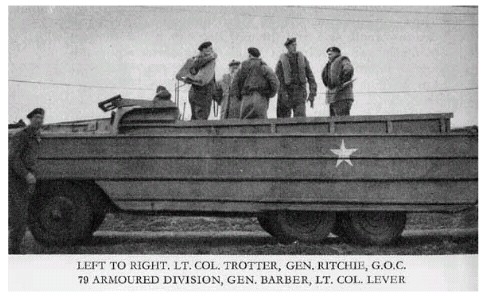
Page 225
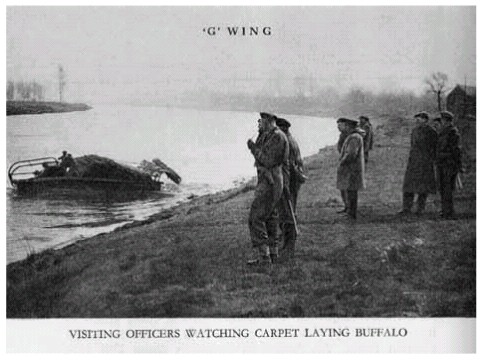
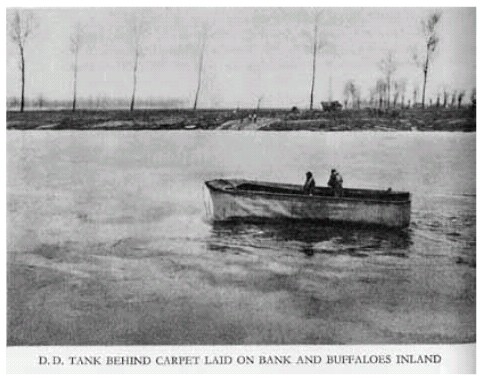
Page 227
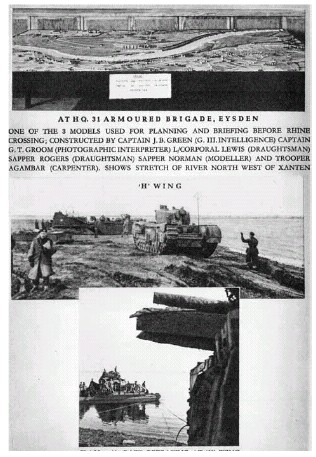
Pages 229-231
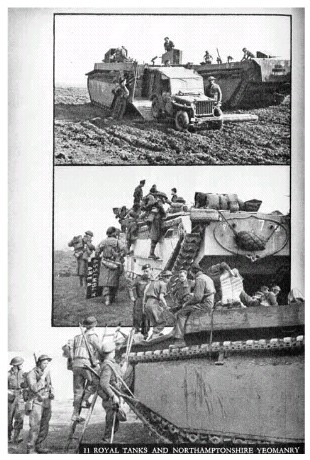
Pages 233-237
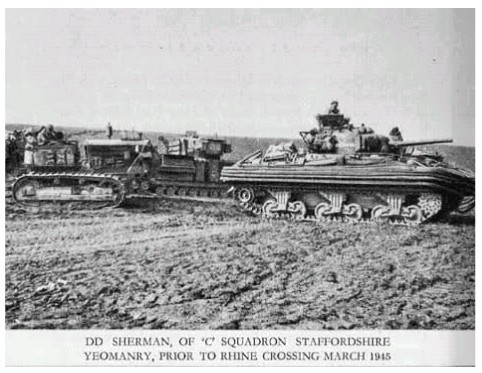
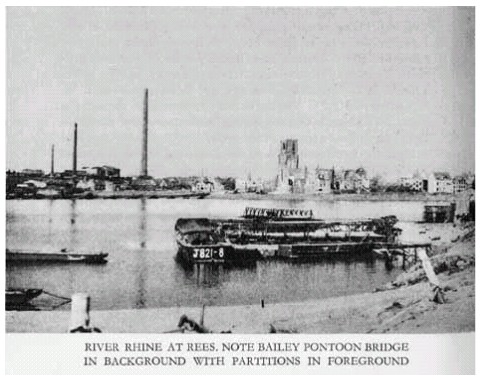
Page 239
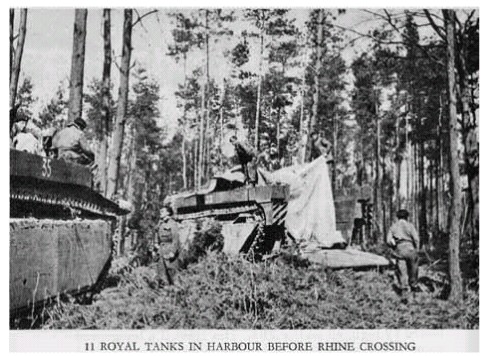
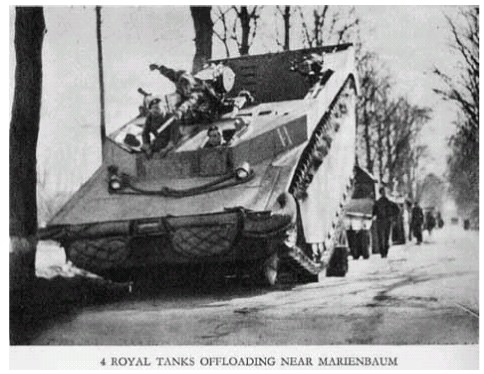
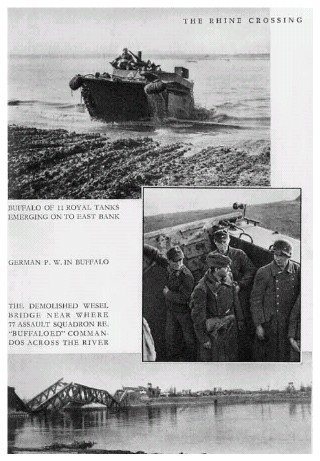
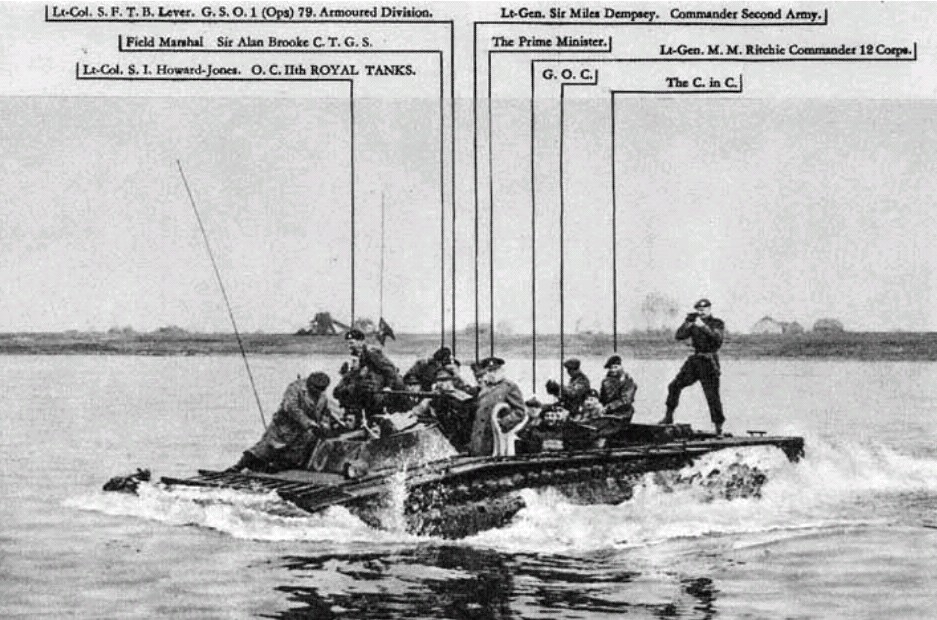
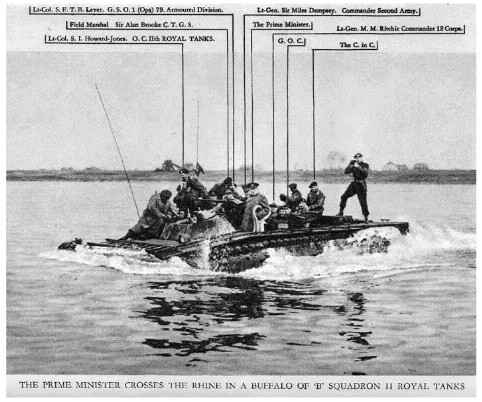
Page 243
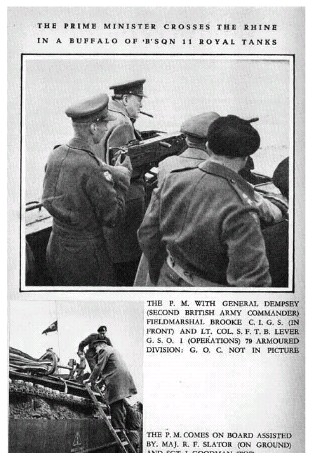
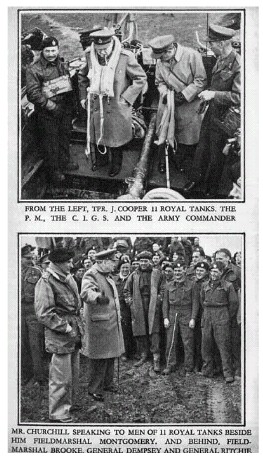
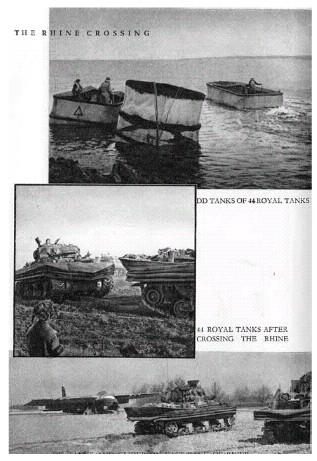
Pages 247-251
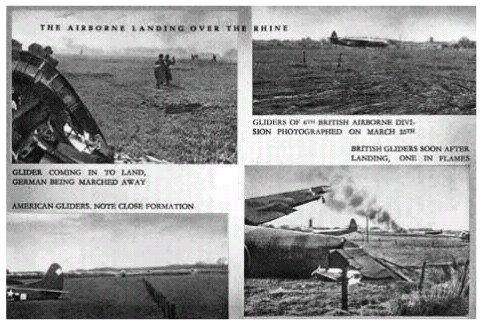
Page 253
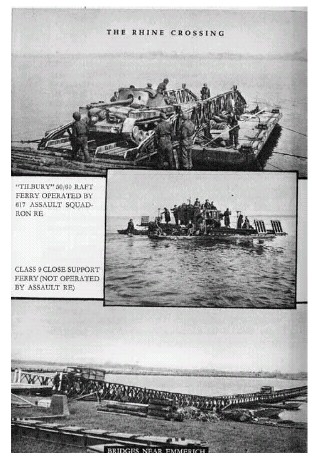
Pages 255-257
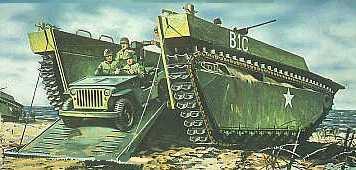
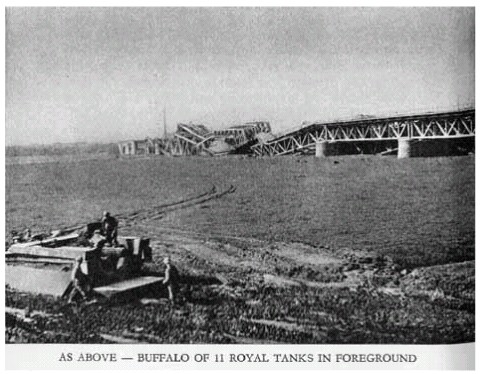
Page 259
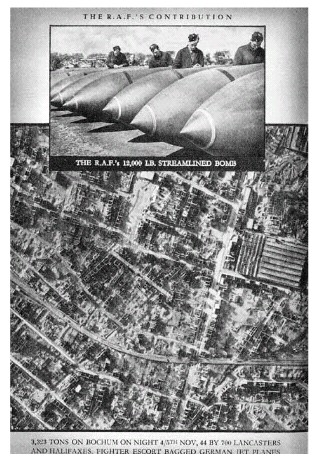
Page 261-263
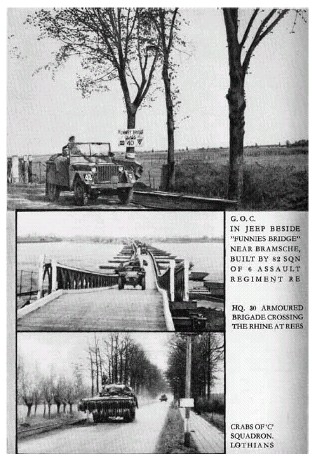
Page 265-267
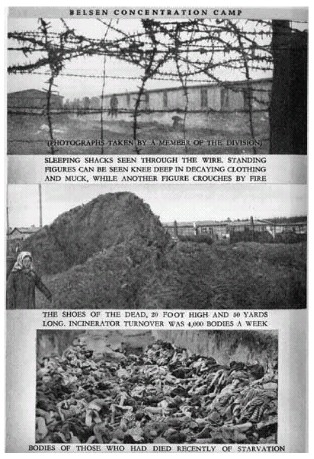
Page 269
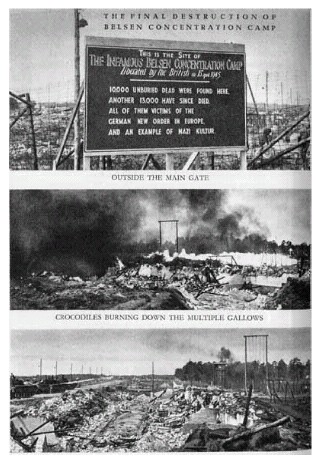
Page 271
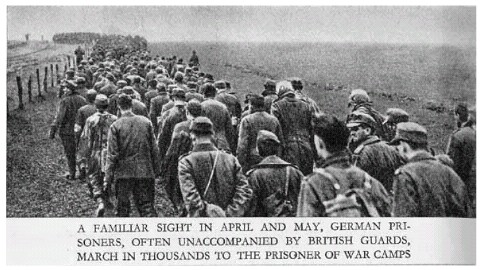
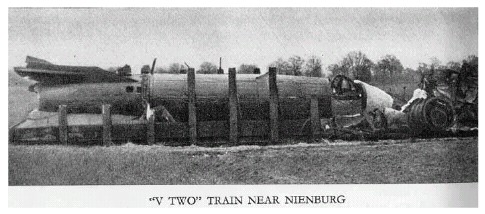
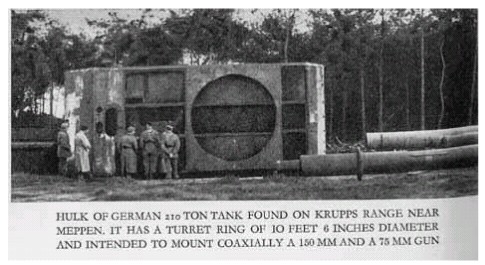
Pages 273-275
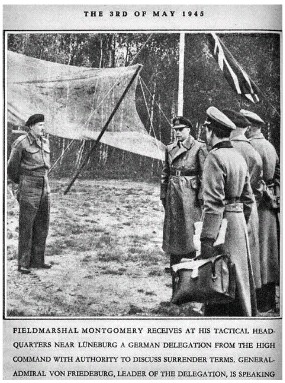
Page 277
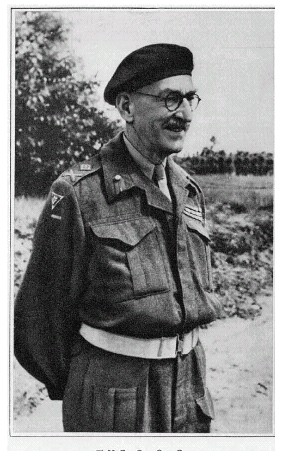
Page 279
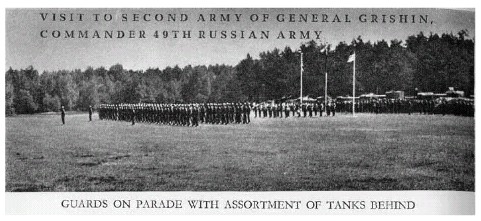
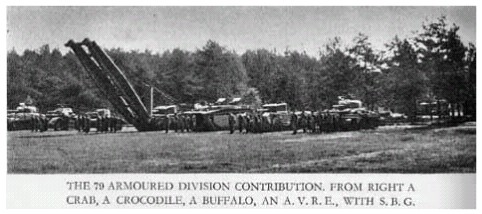
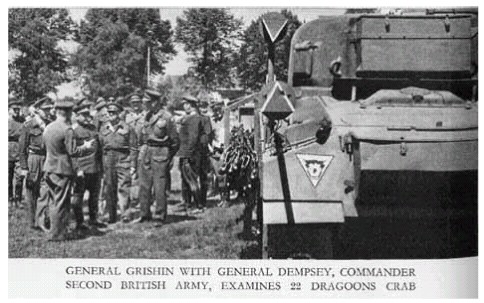
Page 281
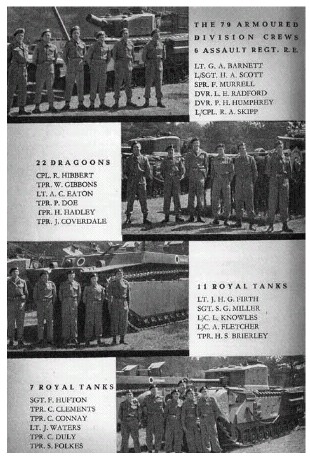
Page 283
